|
|

|
Day 12, Thursday 9 May
Settled…….. Now settled it at B2, 10 minutes south of the city we can concentrate on the city itself. However most of my blog from yesterday has to be completed before then. It’s not going to be an early start but if I can cover a couple of sites before lunch, that’s the best I can hope for. It’s very much a case of temple hunting today. The emphasis will be on the old city and the Lanna kingdom that created it. I shall be looking for other influences as I make my way around.
Departure is closer to 11am after a snack breakfast in the room and we’re soon within the old city walls.
Settled…….. Now settled it at B2, 10 minutes south of the city we can concentrate on the city itself. However most of my blog from yesterday has to be completed before then. It’s not going to be an early start but if I can cover a couple of sites before lunch, that’s the best I can hope for. It’s very much a case of temple hunting today. The emphasis will be on the old city and the Lanna kingdom that created it. I shall be looking for other influences as I make my way around.
Departure is closer to 11am after a snack breakfast in the room and we’re soon within the old city walls.
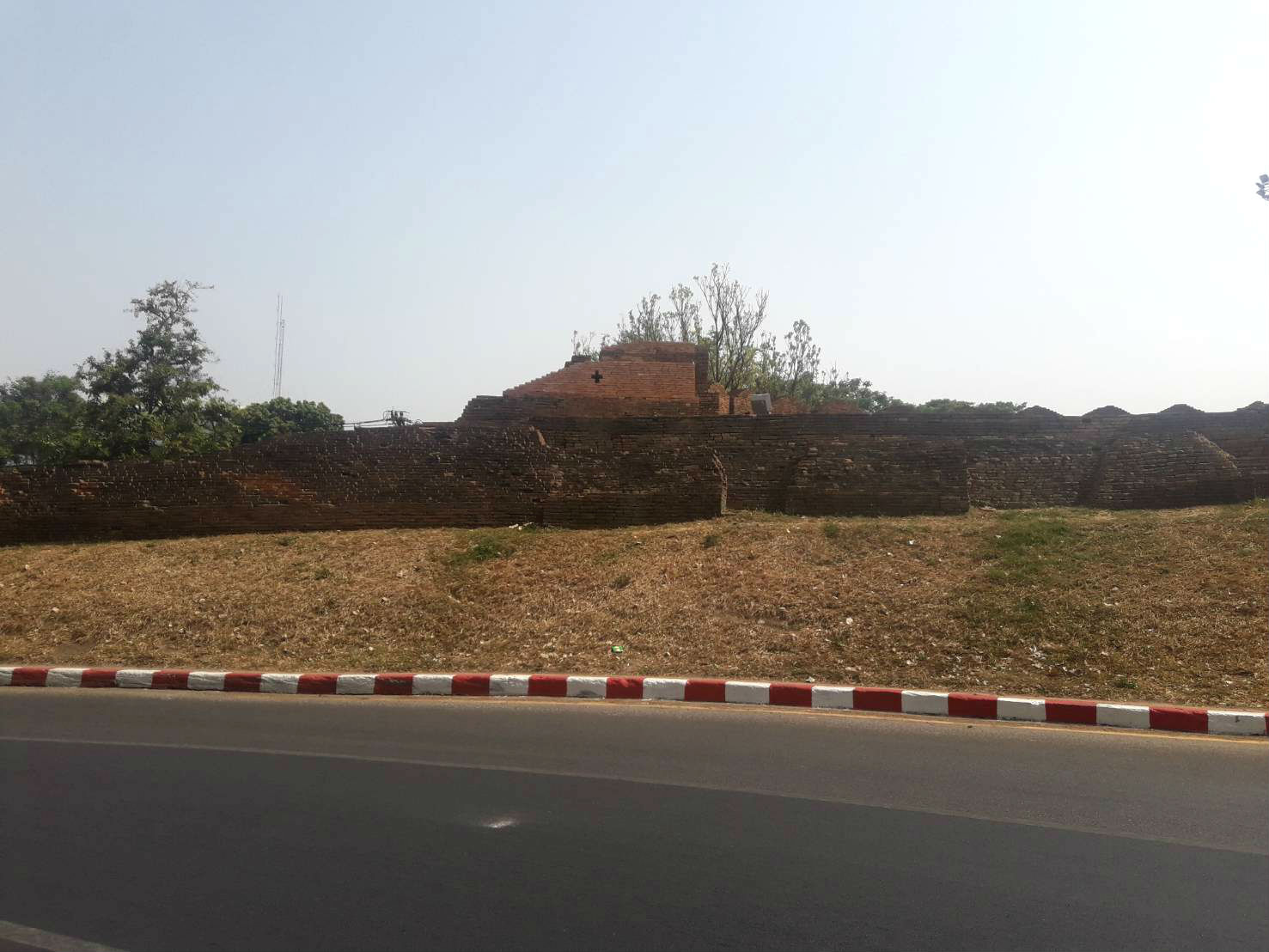
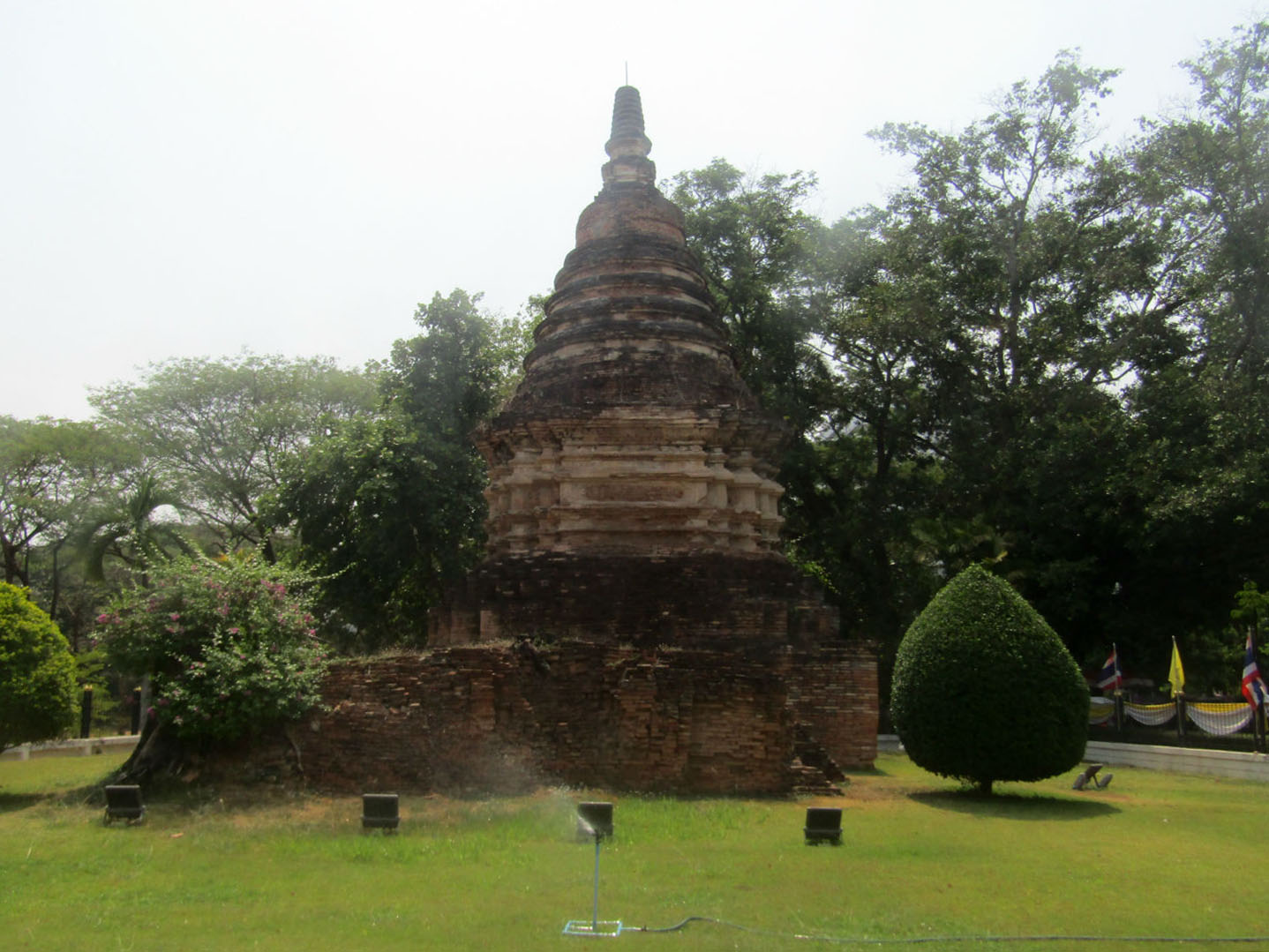
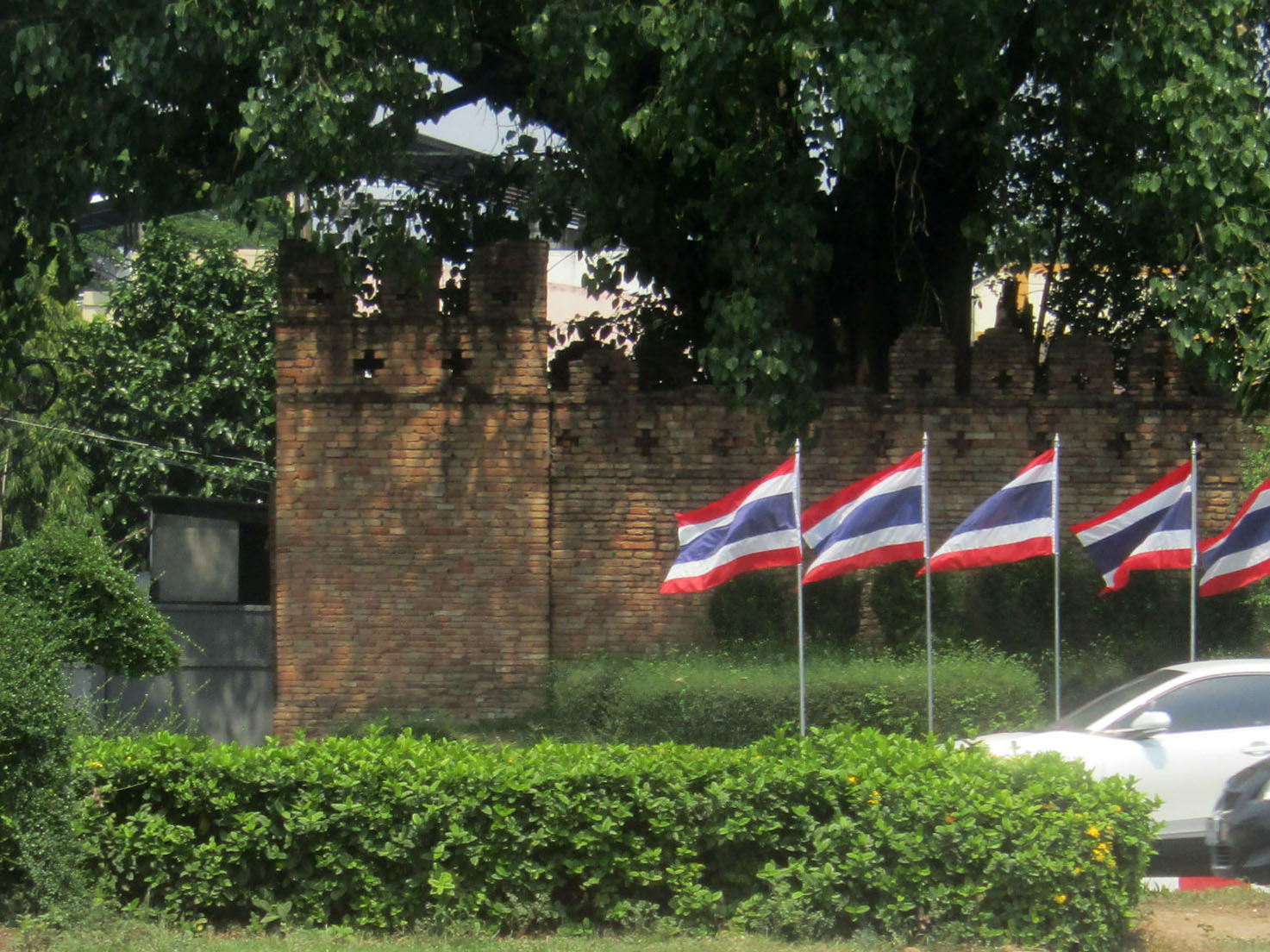 Parts of the Old City Walls, Chiang Mai
Parts of the Old City Walls, Chiang Mai
Wat Prasat……..
Wat Prasat isn’t our first intended stop; that’s directly opposite but it’s a convenient place to park the car and deserves some attention in it’s own rite.
The temple is of historical and archaeological significance. A stone inscription from Wat Tapotharam mentions one of the abbots of this temple who was invited by the king of Chiang Mai to join in a religious ceremony. This temple is located within the old city wall and was restored continuously even when the Lanna Kingdom was ruled by the Burmese.
The temple is of historical and archaeological significance. A stone inscription from Wat Tapotharam mentions one of the abbots of this temple who was invited by the king of Chiang Mai to join in a religious ceremony. This temple is located within the old city wall and was restored continuously even when the Lanna Kingdom was ruled by the Burmese.
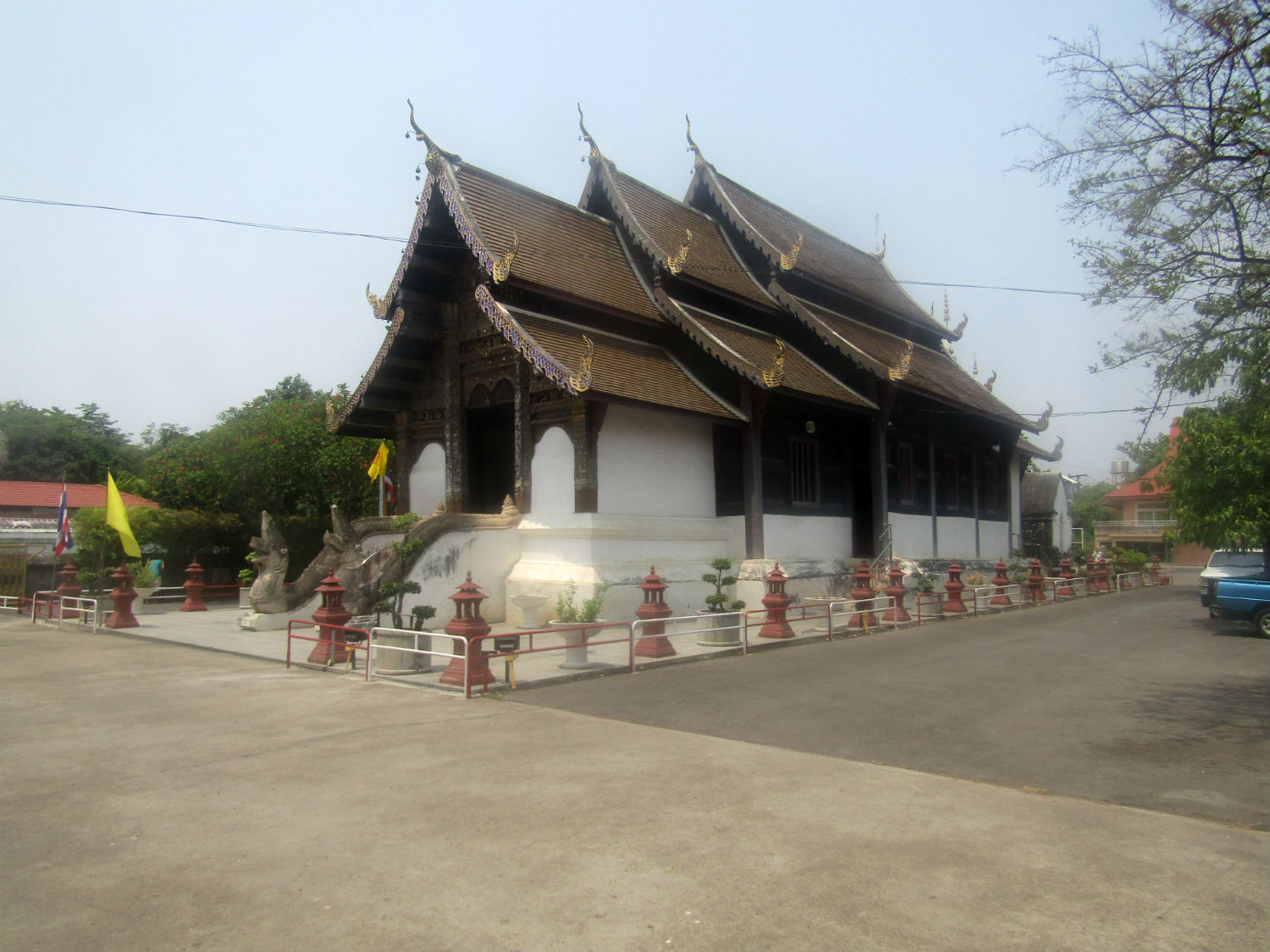

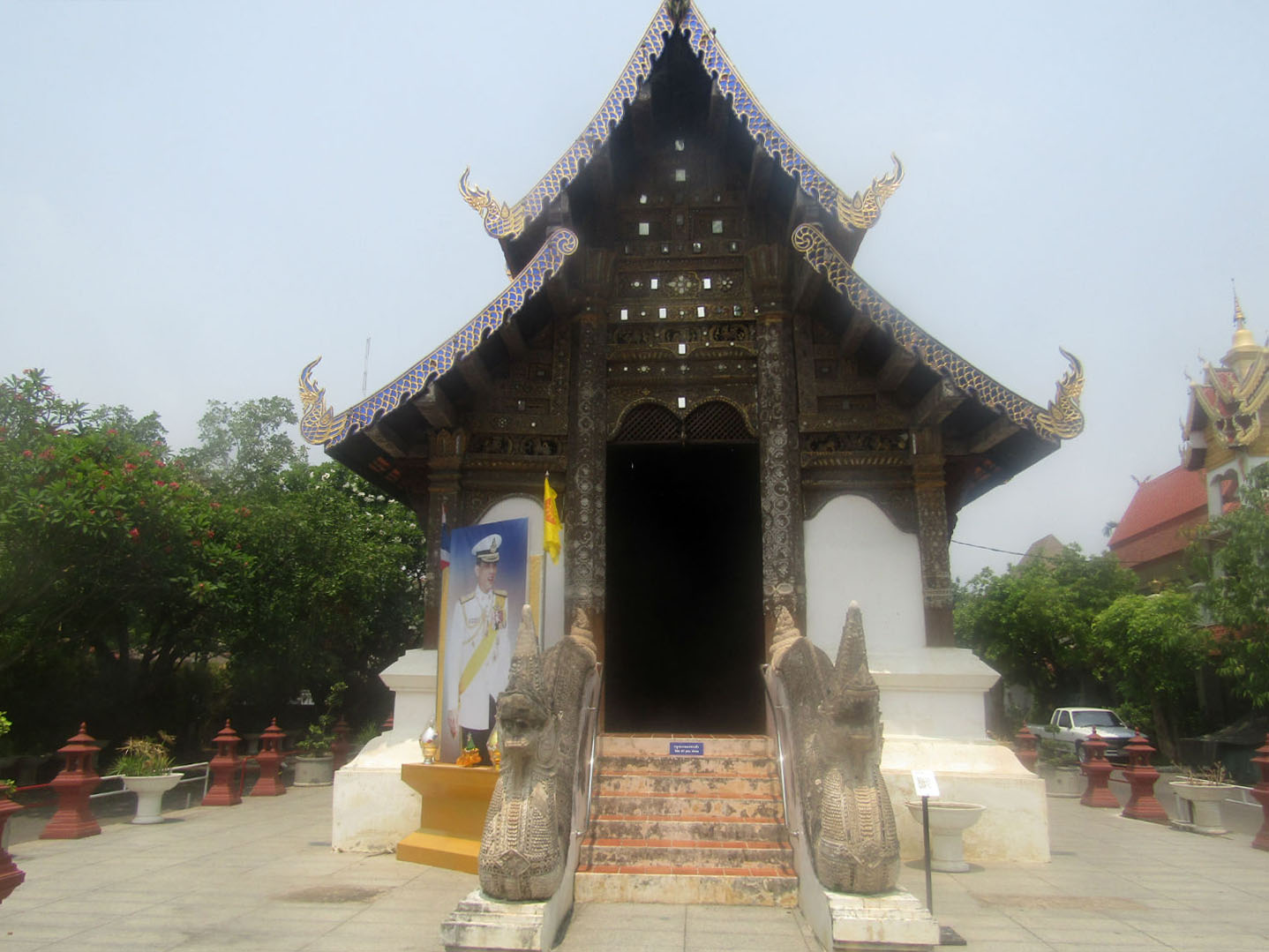
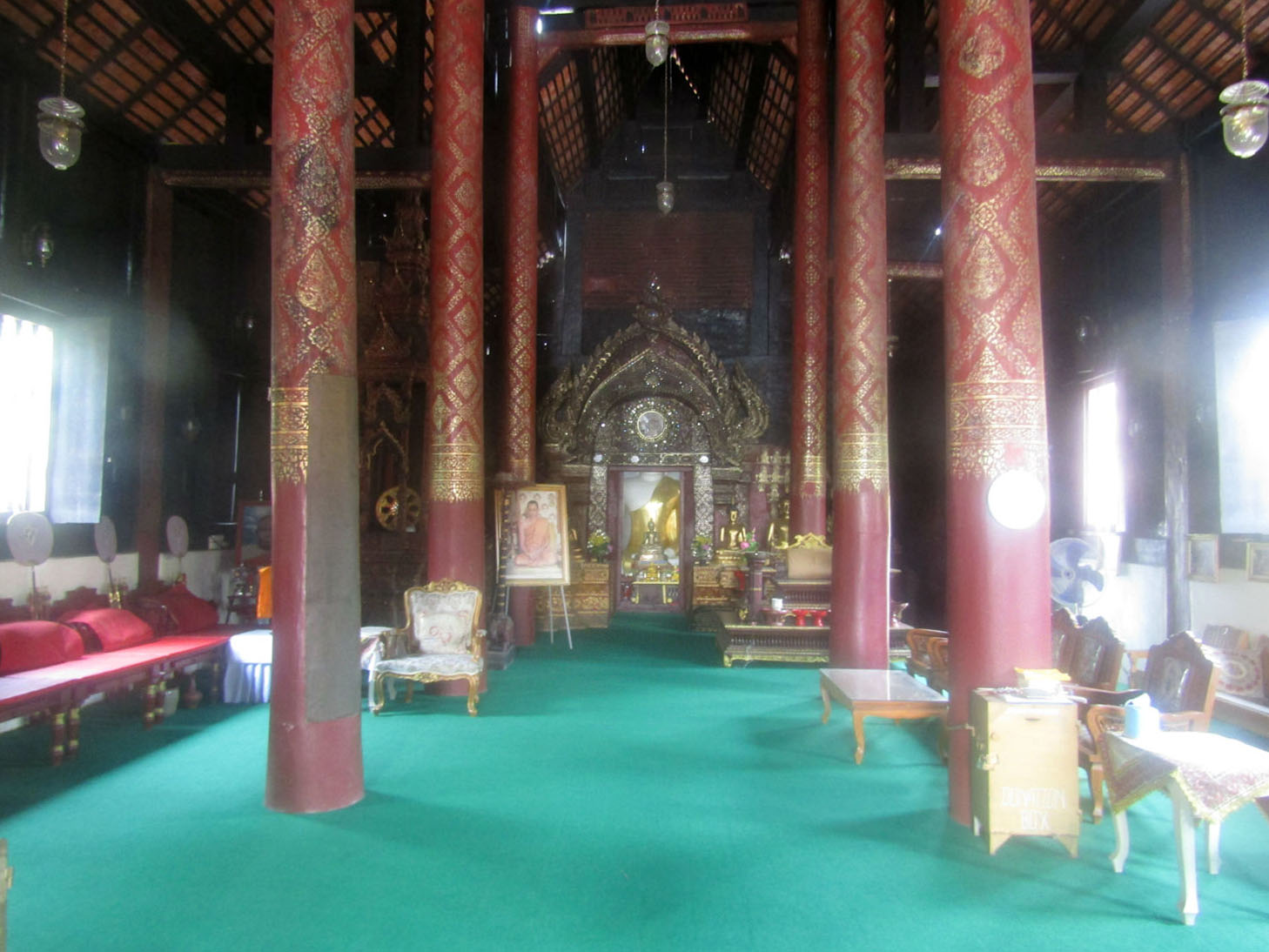
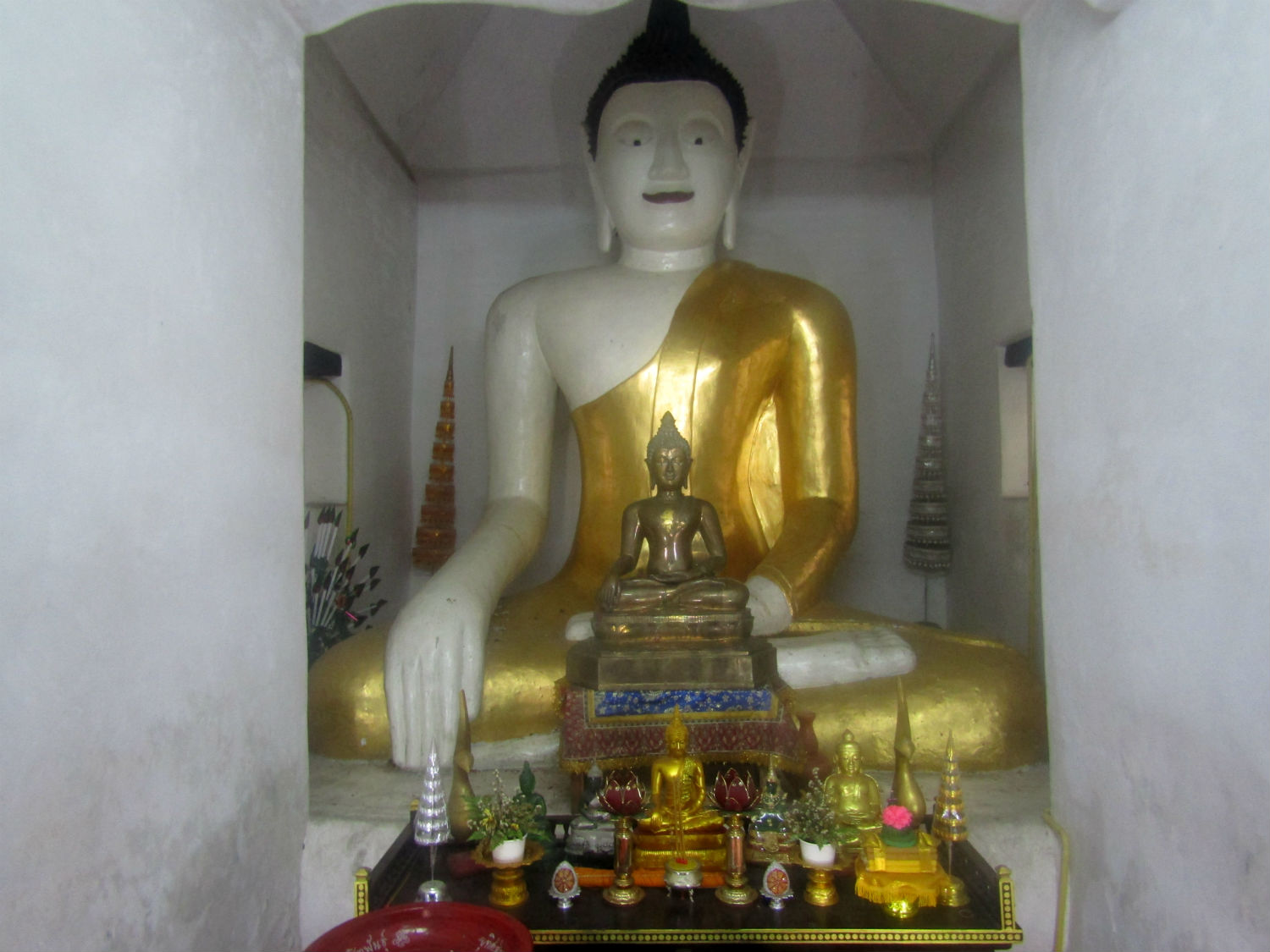
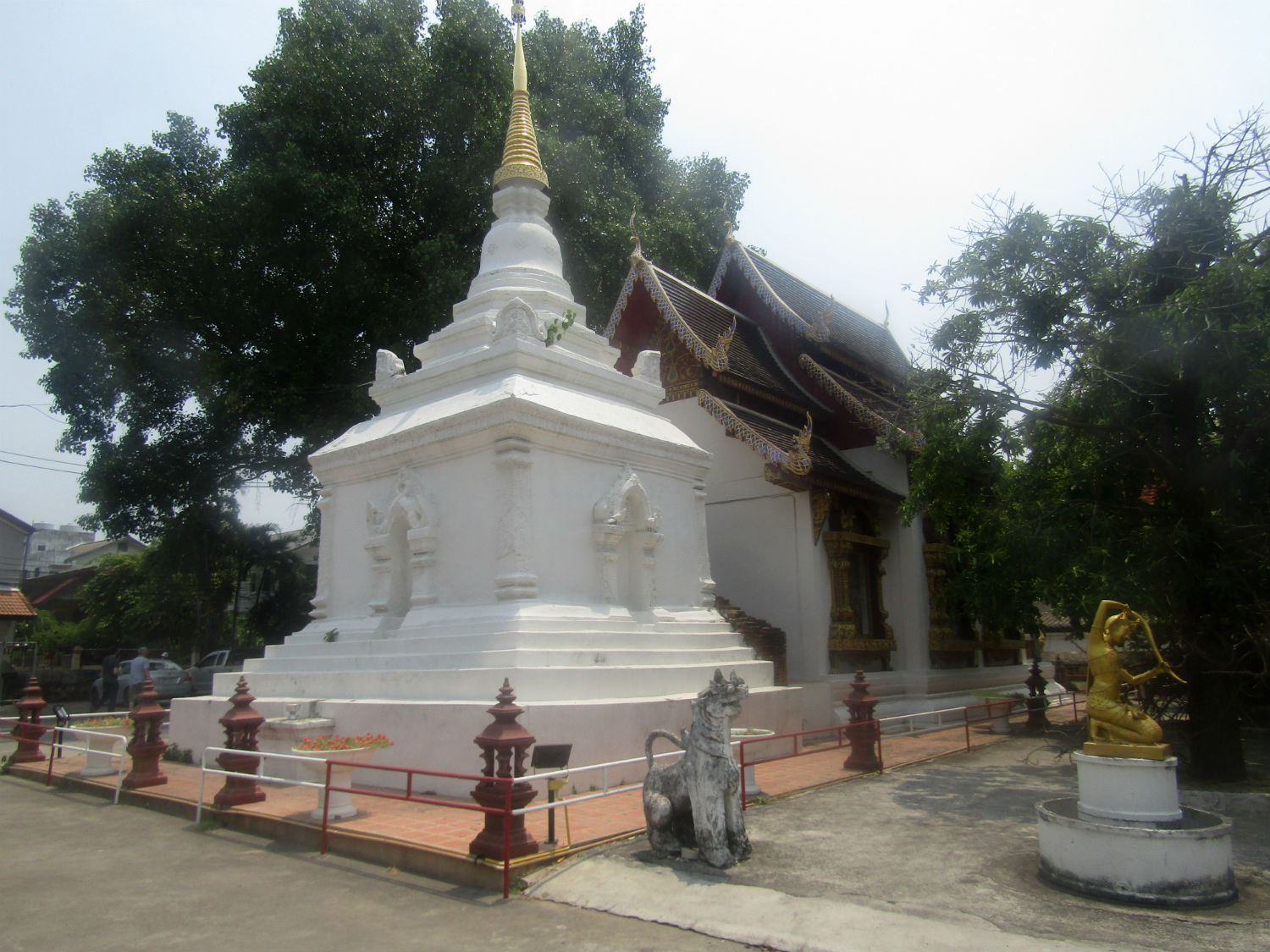 Wat Prasat, Chiang Mai
Wat Prasat, Chiang Mai
Wat Phra Singh Woramahaviharn……..
Wat Phra Singh is an important Buddhist temple within the old city walls. King Ananda Mahidol (Rama VIII), the older brother of the late King Bhumibol Adulyadej (Rama IX), bestowed on it the status of Royal temple of the first grade in 1935.
Construction of Wat Phra Singh began in 1345 when King Phayu, the fifth king of the Mangrai dynasty, had a chedi built to house the ashes of his father King Kham Fu. A wihan and several other buildings were added a few years later and the resulting complex was named Wat Lichiang Phra. When, in 1367, the statue of Phra Buddha Singh was brought to the temple, the temple complex received its present name. During restoration works in 1925, three funerary urns were discovered inside a small chedi. It was assumed that these contained royal ashes. The urns have since been lost. From 1578 to 1774 the Burmese ruled Lanna and in this period the temple was abandoned and came under serious disrepair. It was only when King Kawila assumed the throne as King of Chiang Mai in 1782, that the temple was restored. King Kawila had the ubosot built and the chedi enlarged. Later successors restored the Wihan Lai Kham and the elegant Ho Trai (temple library).
The whole temple complex underwent extensive renovations under the famous monk Khru Ba Srivichai during the 1920s. Many of the buildings were again restored in 2002.
The important features of Wat Phra Singh are:-
Wihan Luang - the original wihan was replaced by the present building in 1925
Wihan Lai Kham - built in 1345 to house the Phra Buddha Singh statue, a prime example of classical Lanna architecture
Ubosot – built in 1806 containing a copy of the Emerald Buddha
Ho Trai – the temple library
The Phrathatluang – built in 1345, the chedi was enlarged several times
The Kulai chedi - built as a pagoda with five tiered roofs by King Mueangkaeo (1495–1525) and restored (1813–1822)
Having entered Wat Phra Singh via a passageway from Wat Prasat and the Wihan Luang via a side entrance it occurres to me that there was likely an entrance fee for foreigners who wouldn’t have entered this way. If there is, I don’t know about it and in any case Katoon consistently makes donations at my expense.
The whole temple complex underwent extensive renovations under the famous monk Khru Ba Srivichai during the 1920s. Many of the buildings were again restored in 2002.
The important features of Wat Phra Singh are:-
Wihan Luang - the original wihan was replaced by the present building in 1925
Wihan Lai Kham - built in 1345 to house the Phra Buddha Singh statue, a prime example of classical Lanna architecture
Ubosot – built in 1806 containing a copy of the Emerald Buddha
Ho Trai – the temple library
The Phrathatluang – built in 1345, the chedi was enlarged several times
The Kulai chedi - built as a pagoda with five tiered roofs by King Mueangkaeo (1495–1525) and restored (1813–1822)
Having entered Wat Phra Singh via a passageway from Wat Prasat and the Wihan Luang via a side entrance it occurres to me that there was likely an entrance fee for foreigners who wouldn’t have entered this way. If there is, I don’t know about it and in any case Katoon consistently makes donations at my expense.

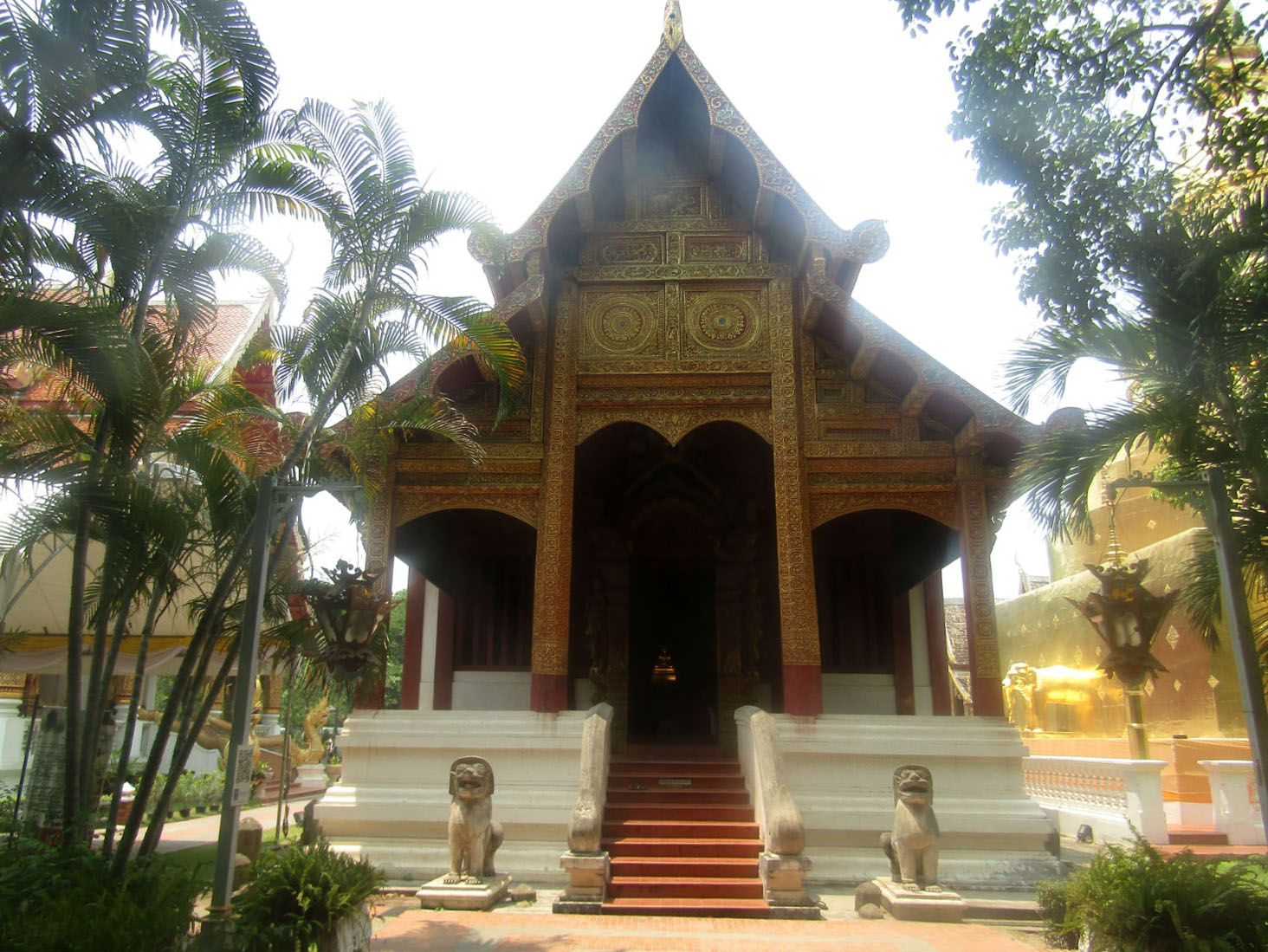
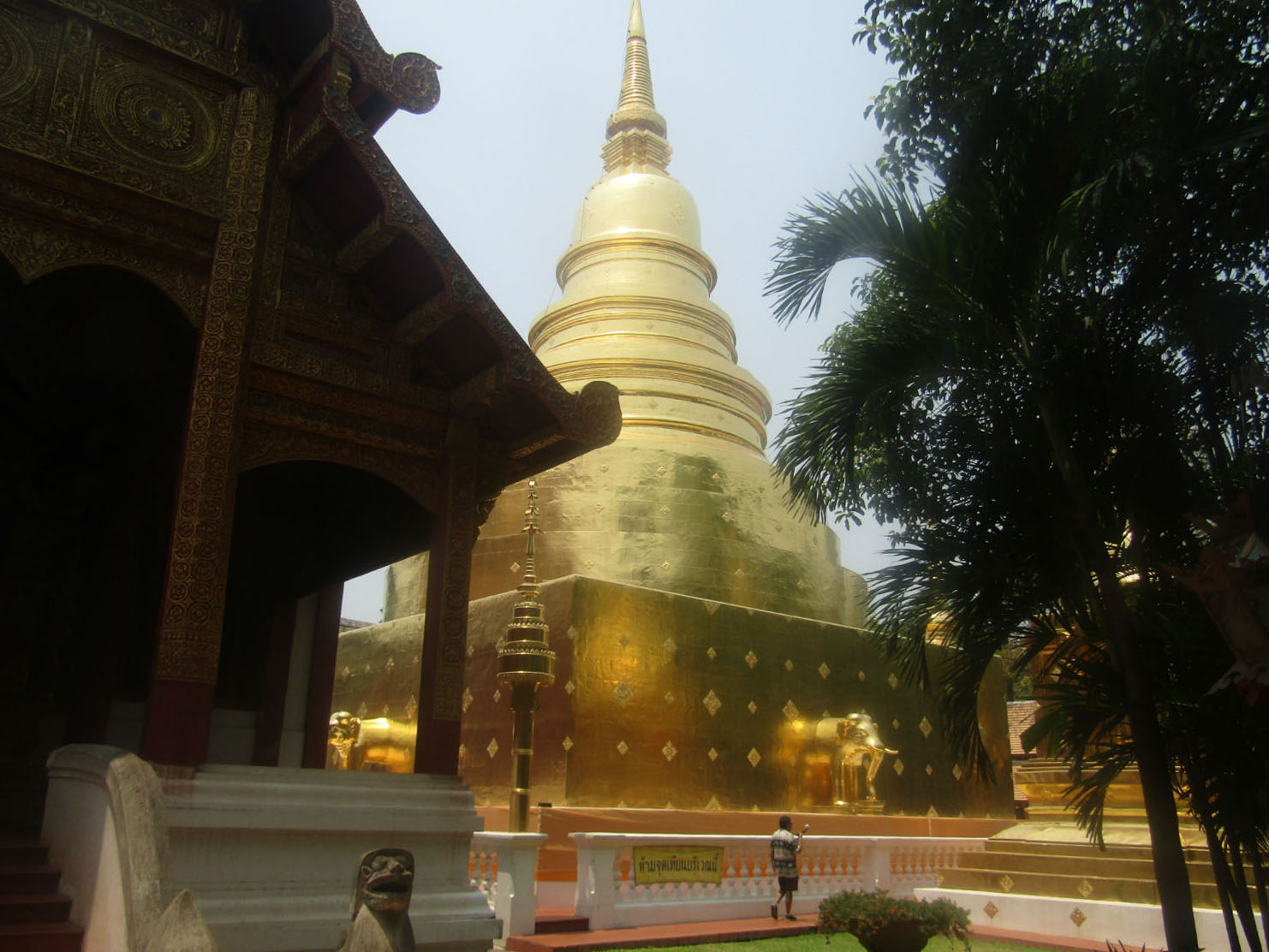
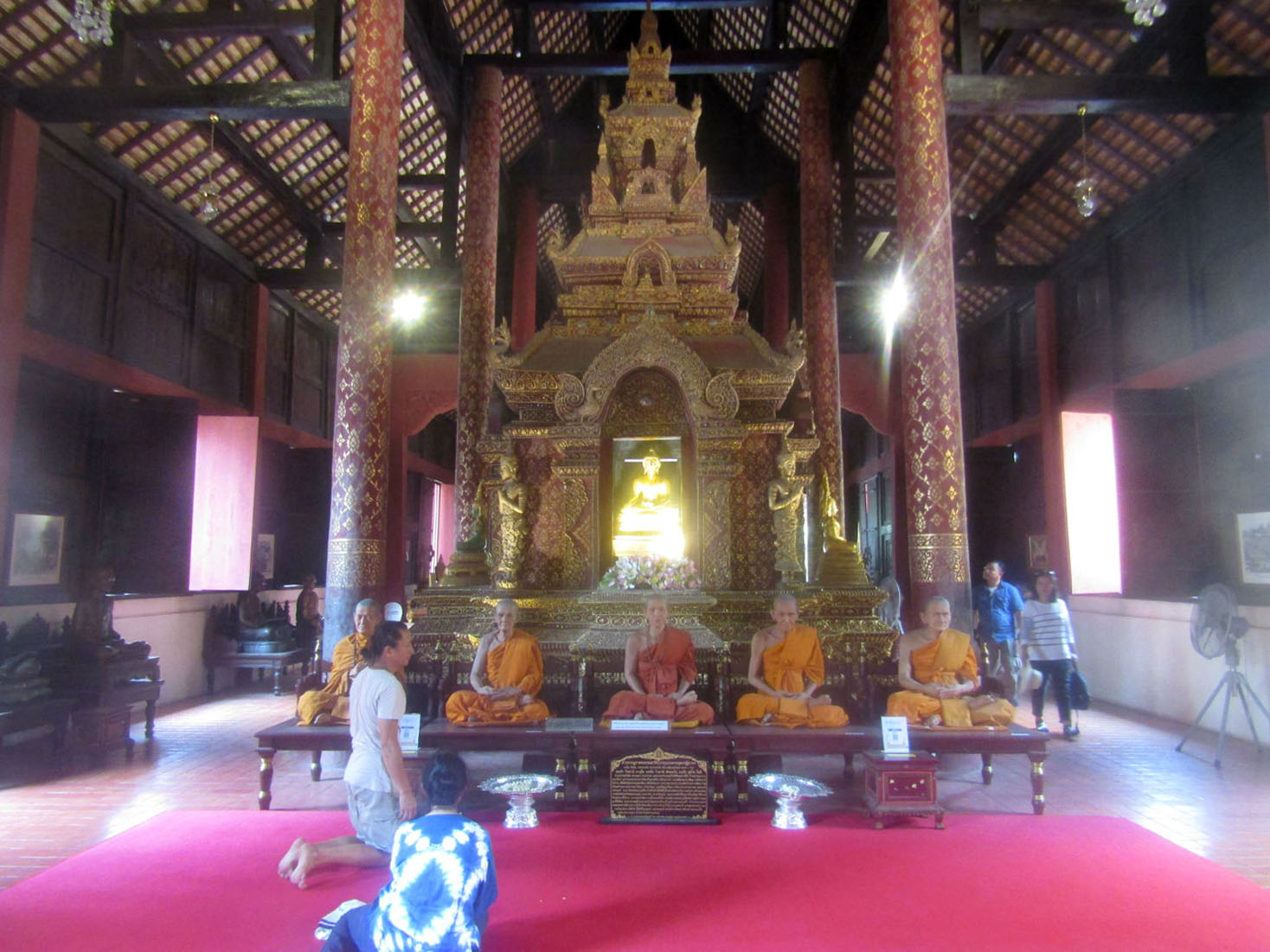
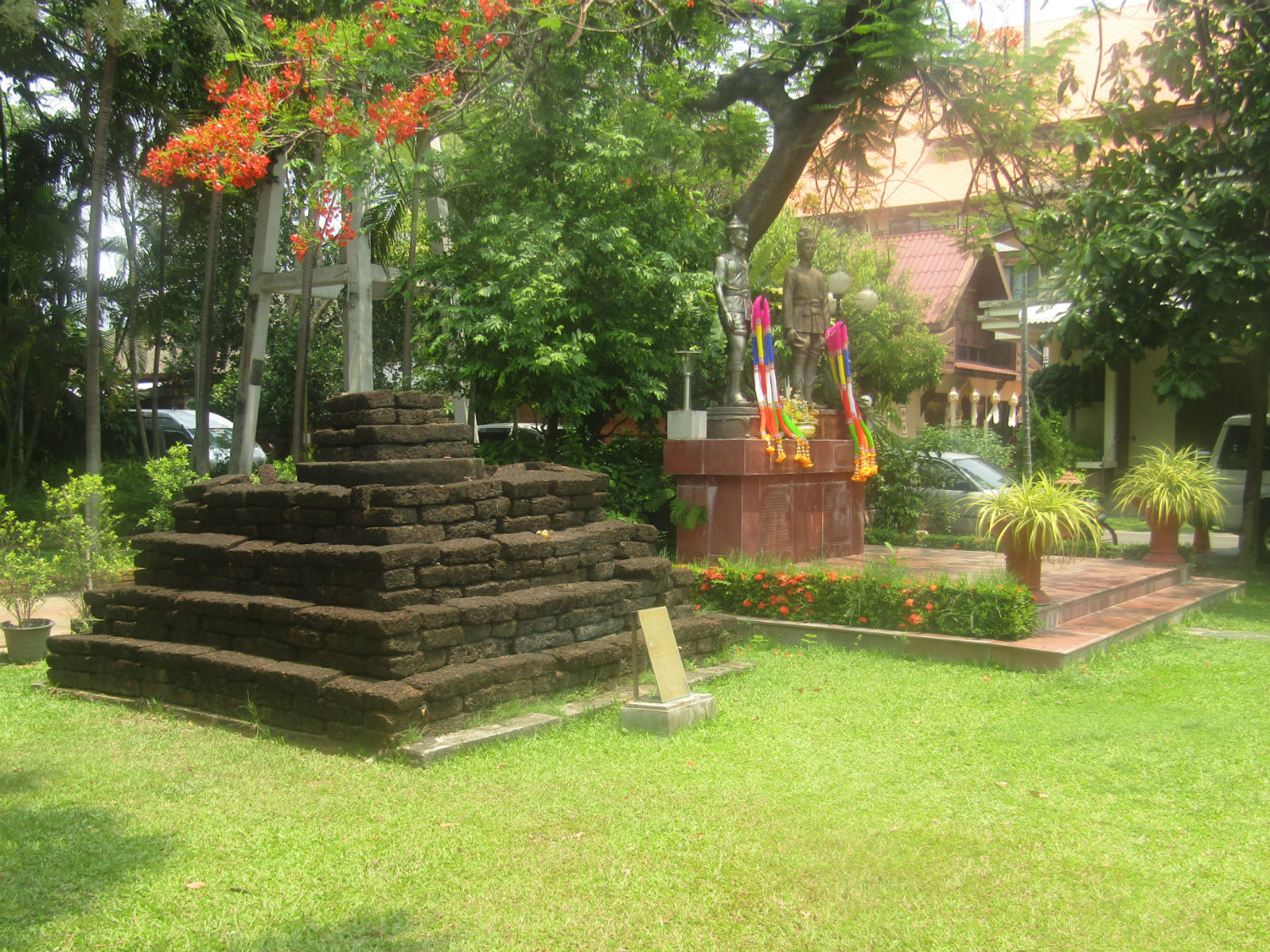
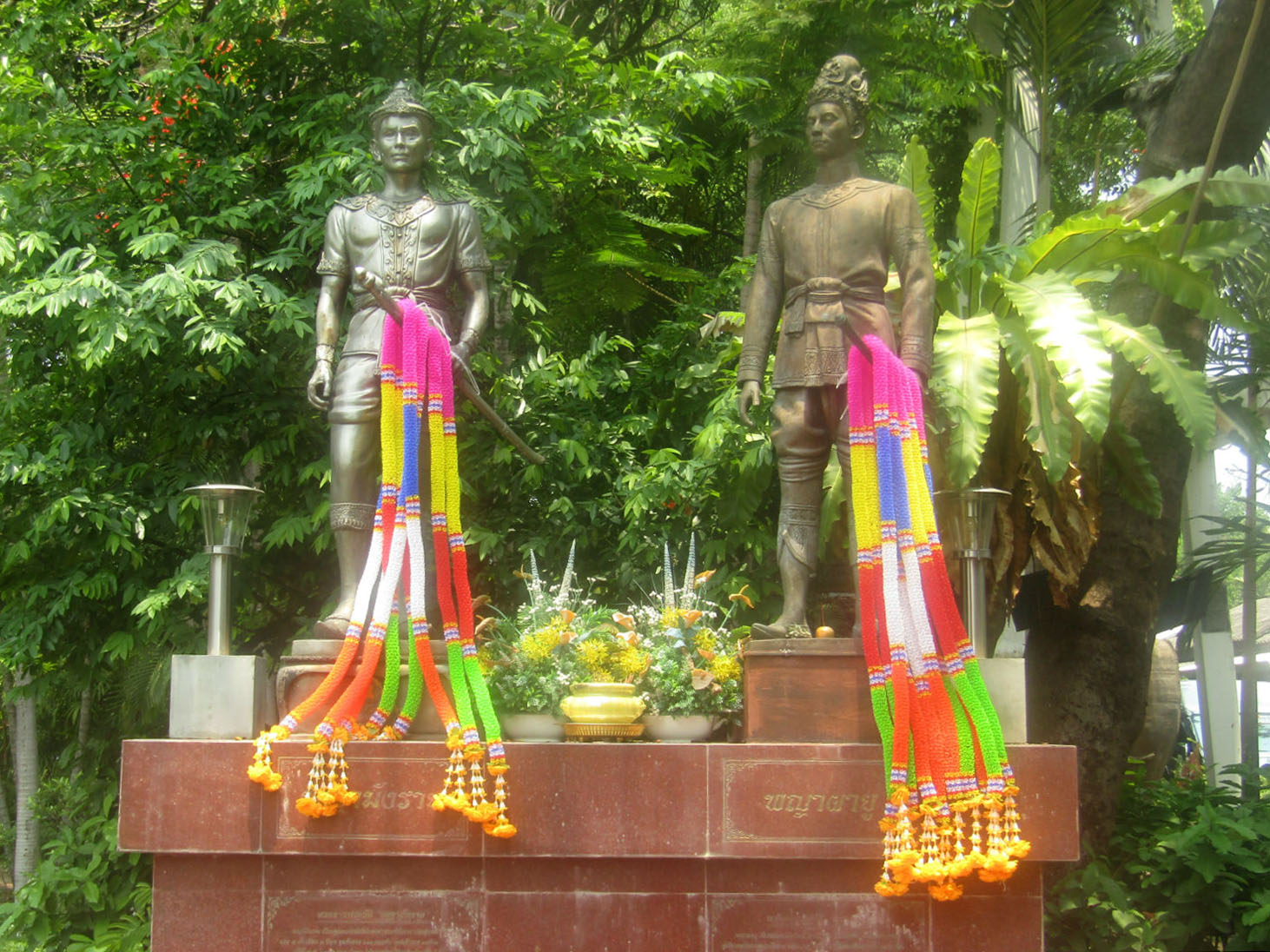

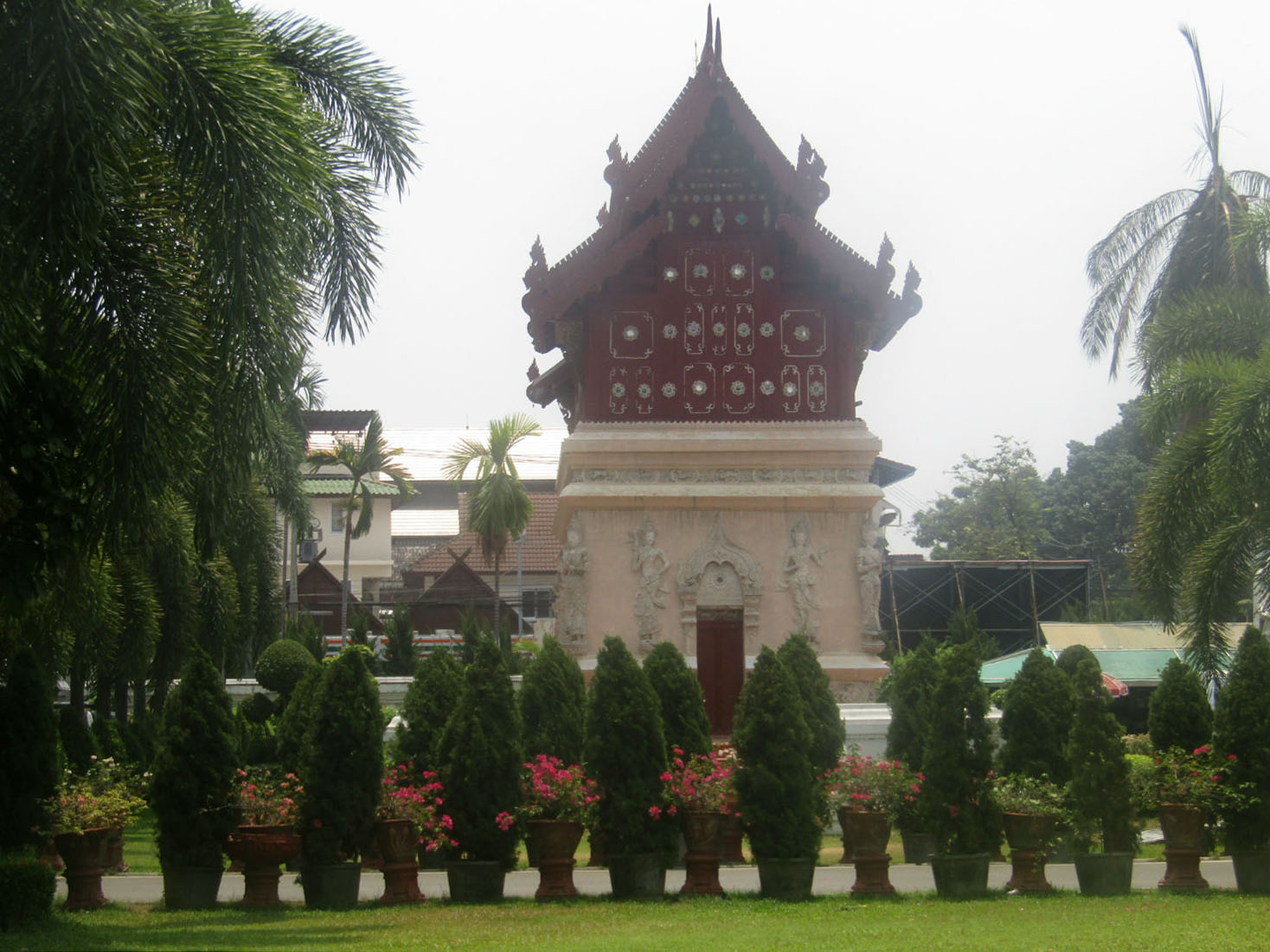
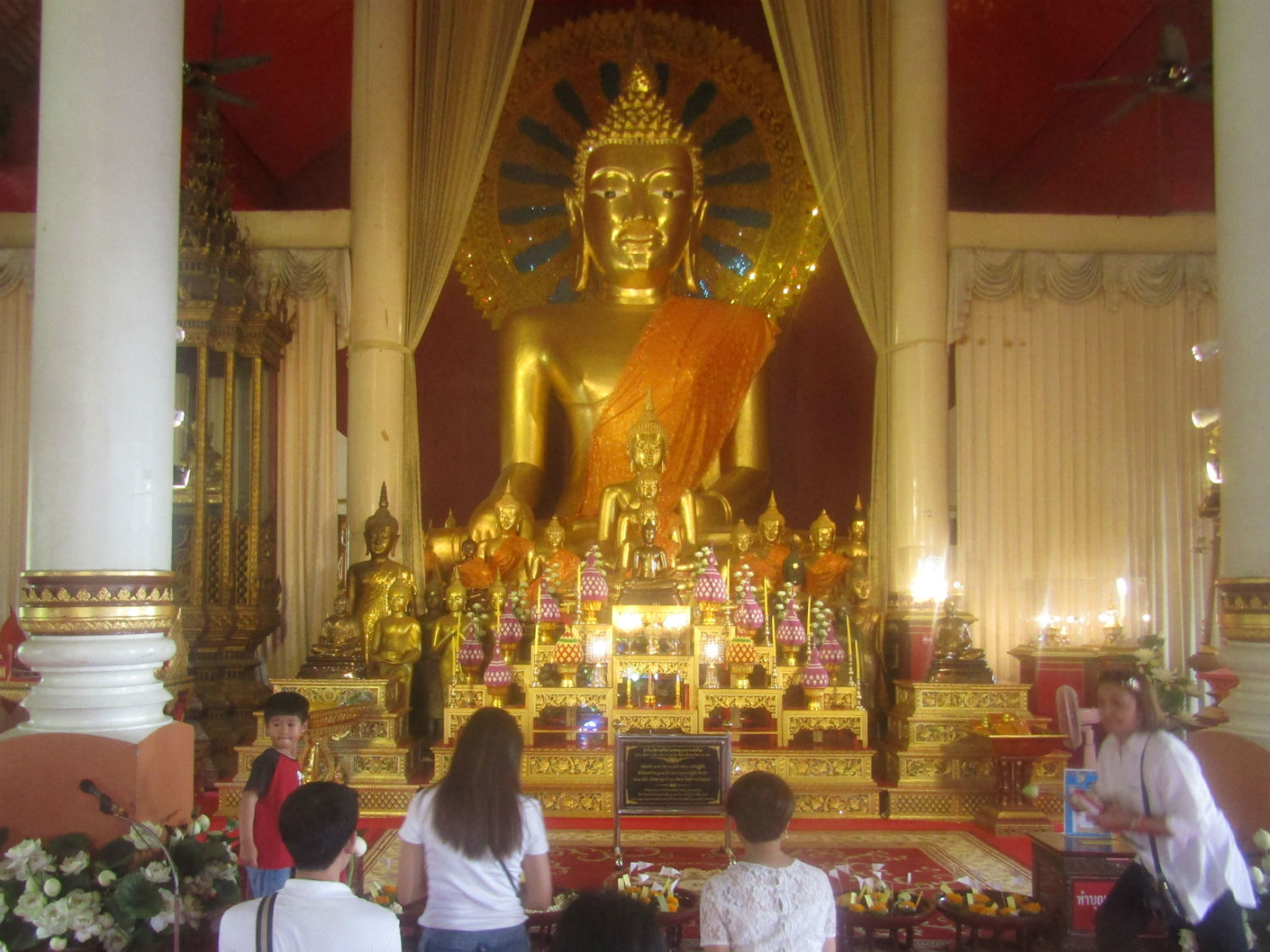

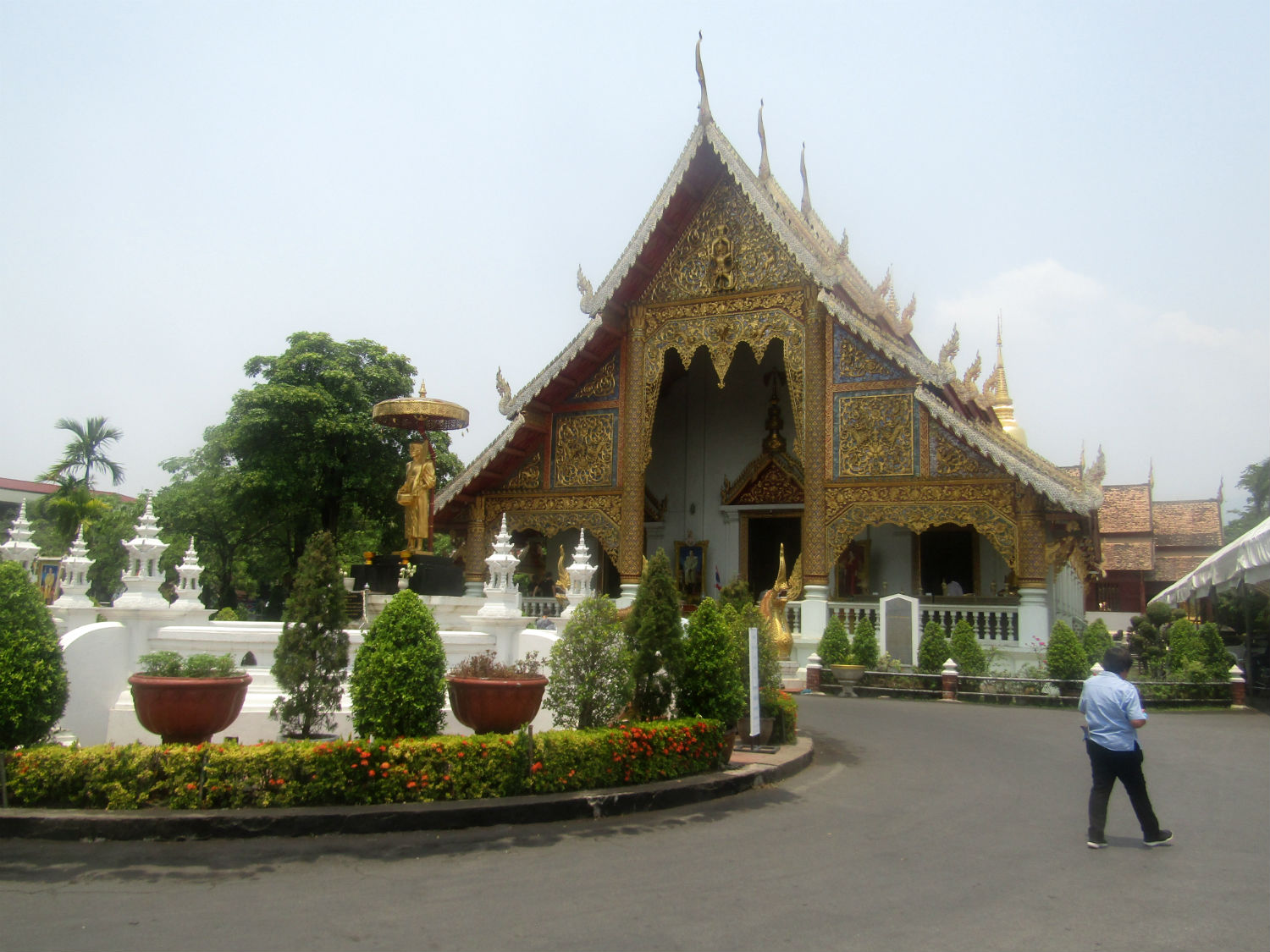
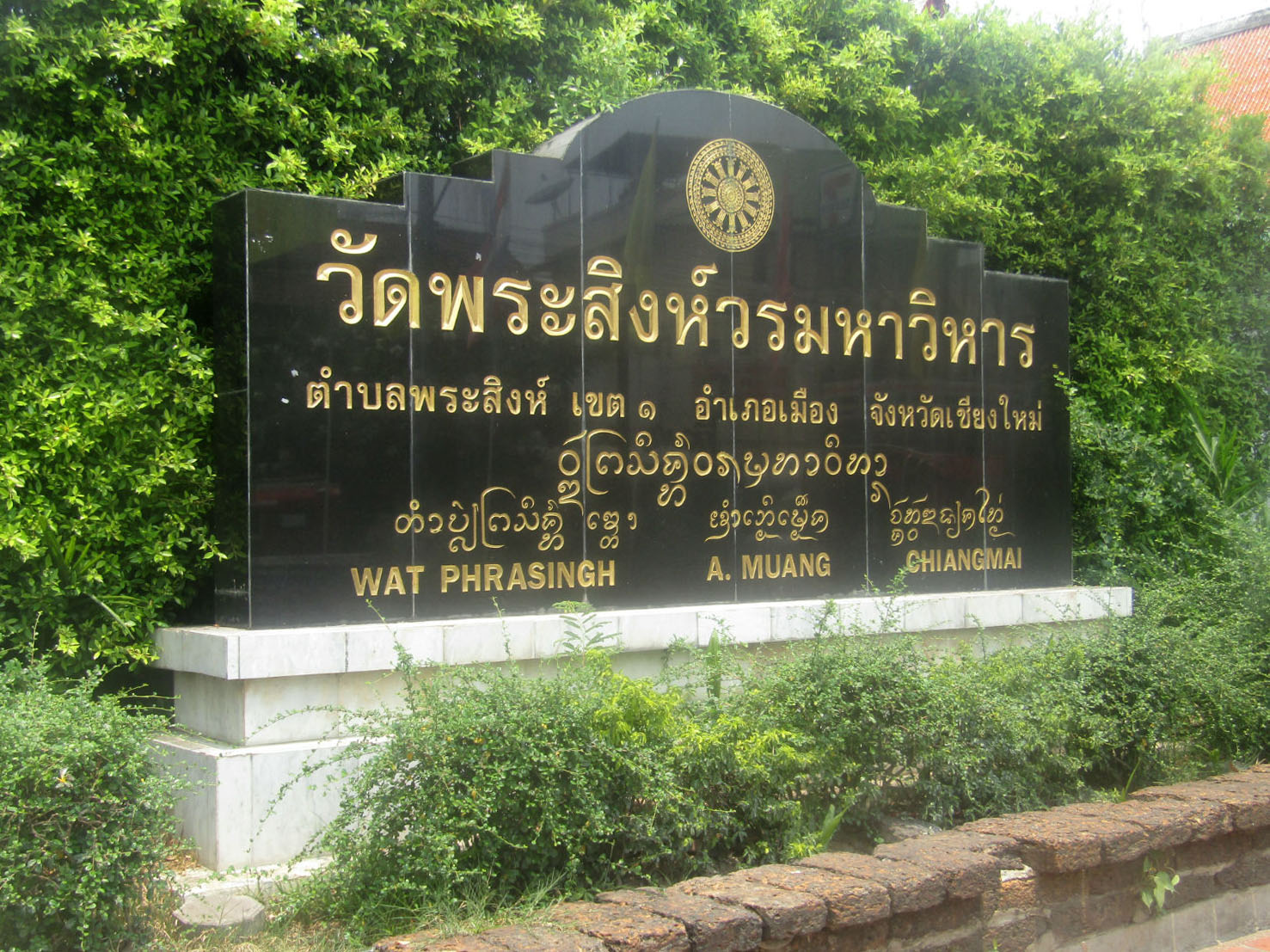
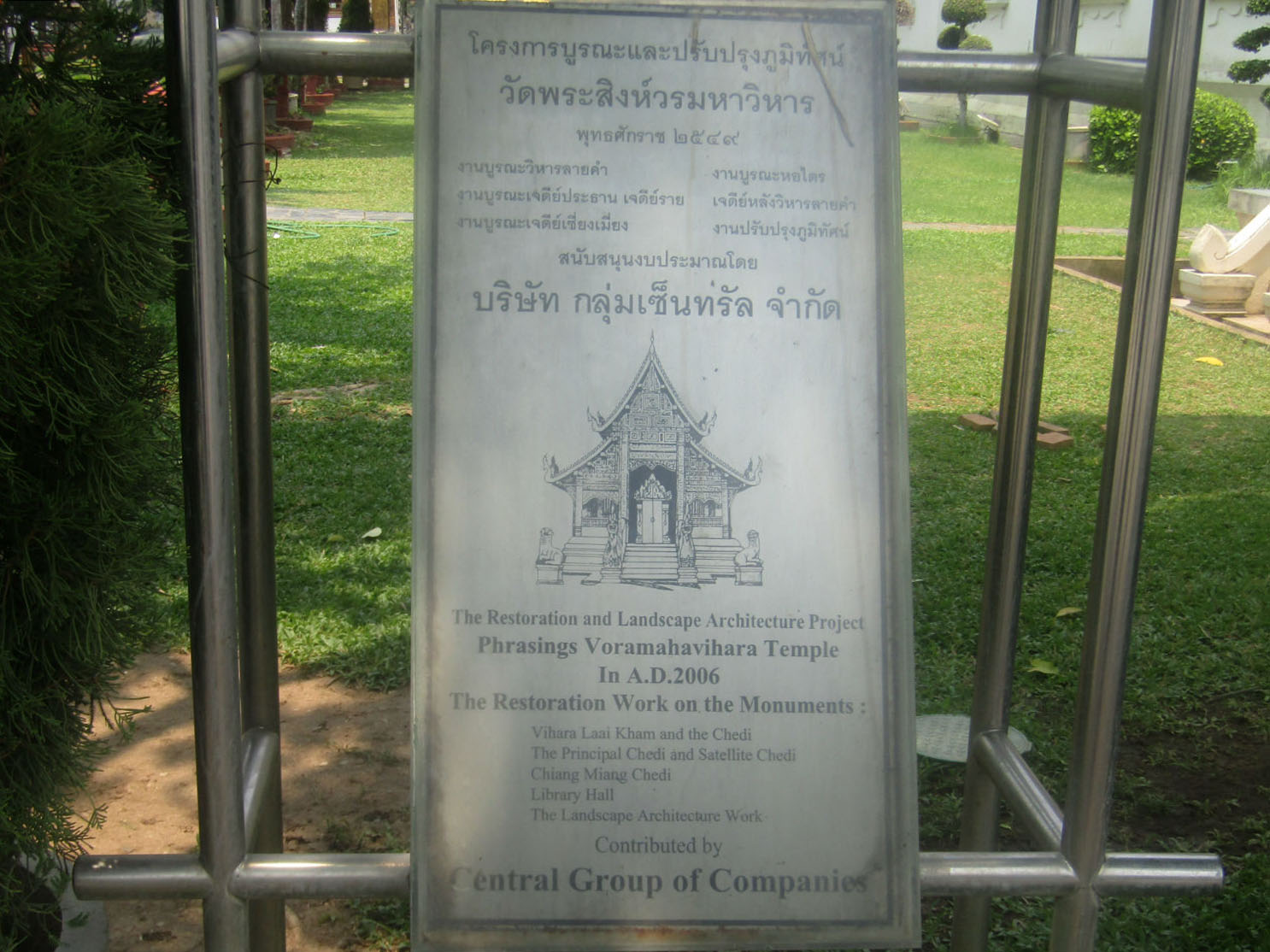
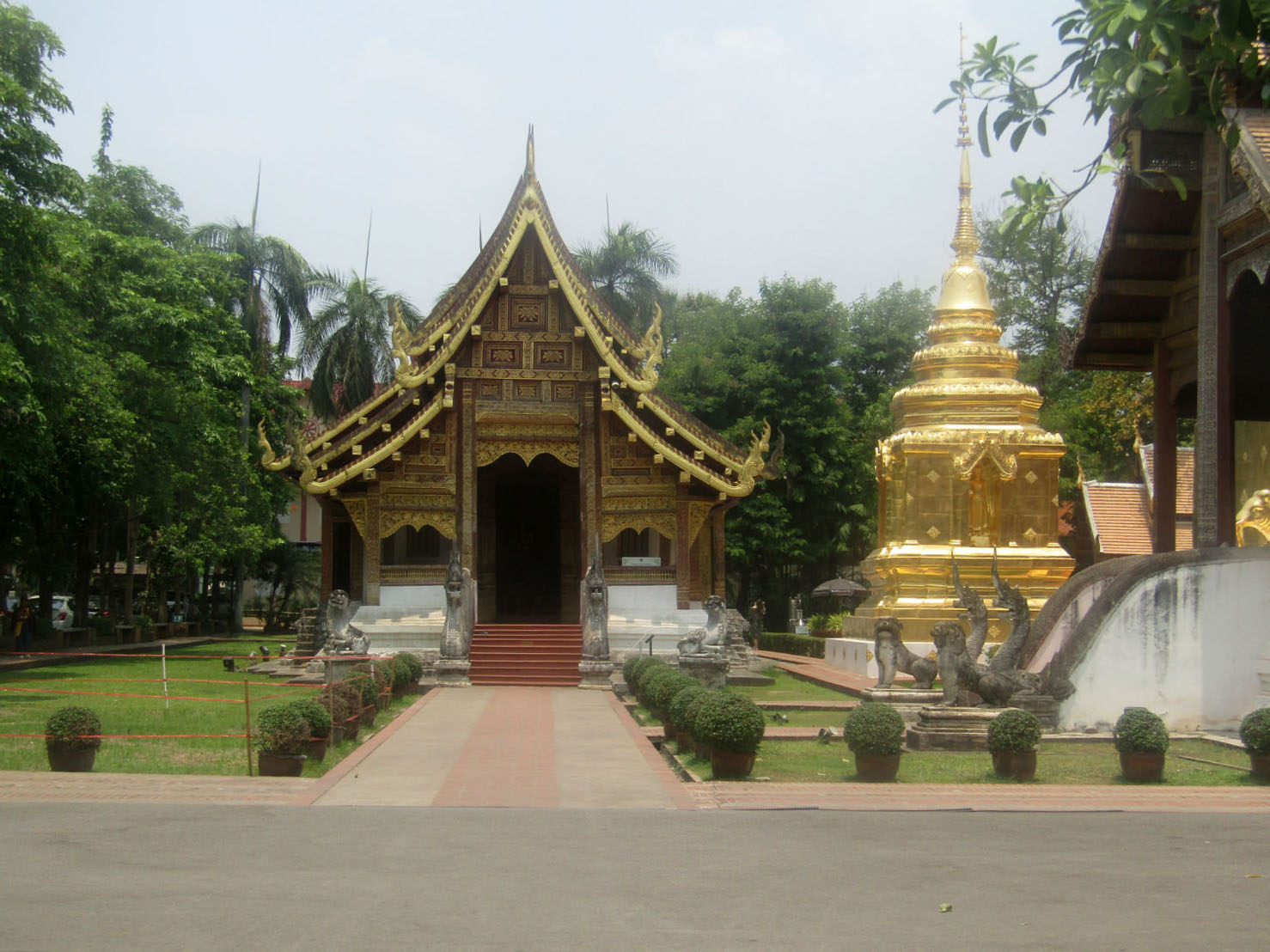
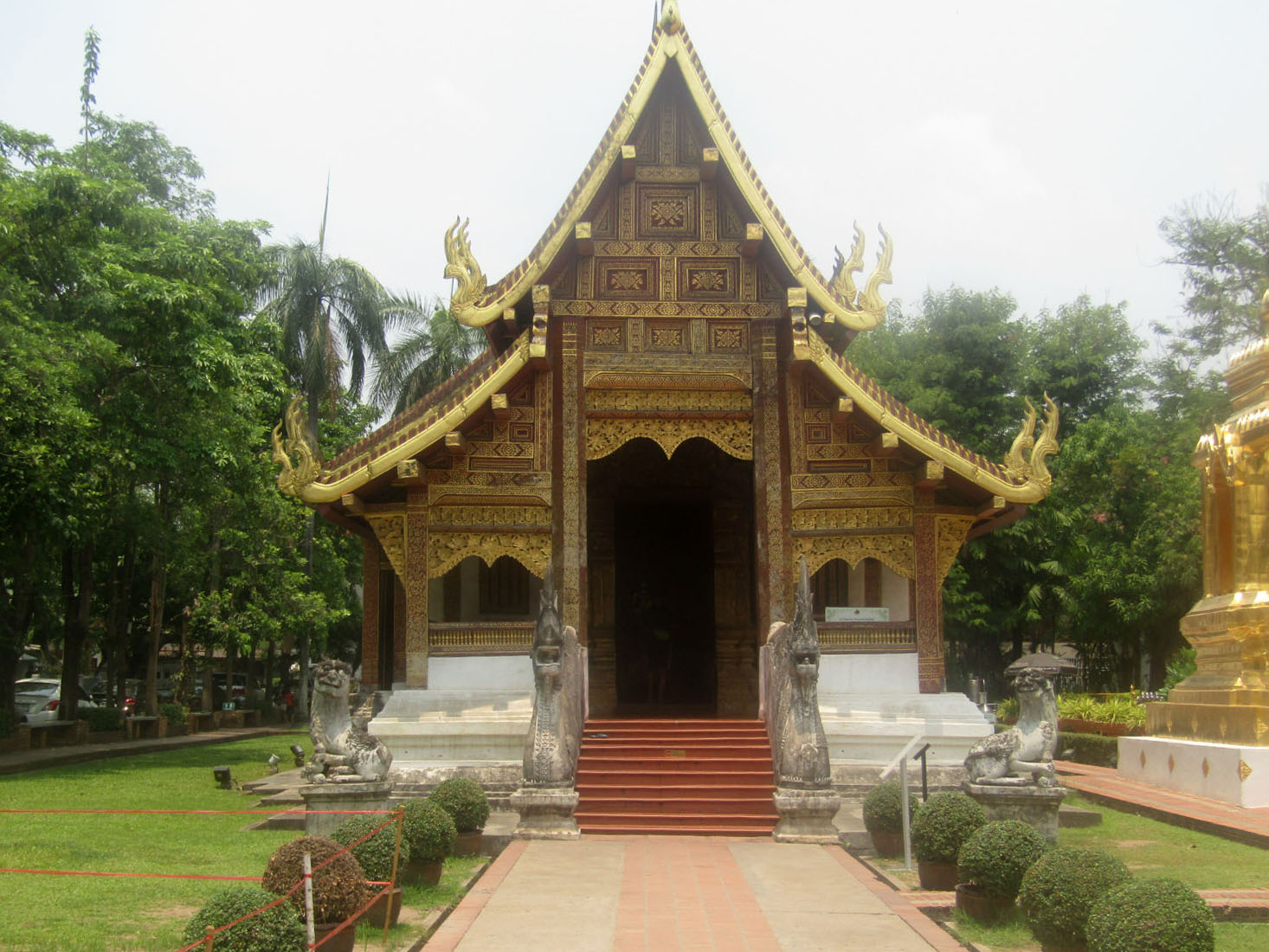
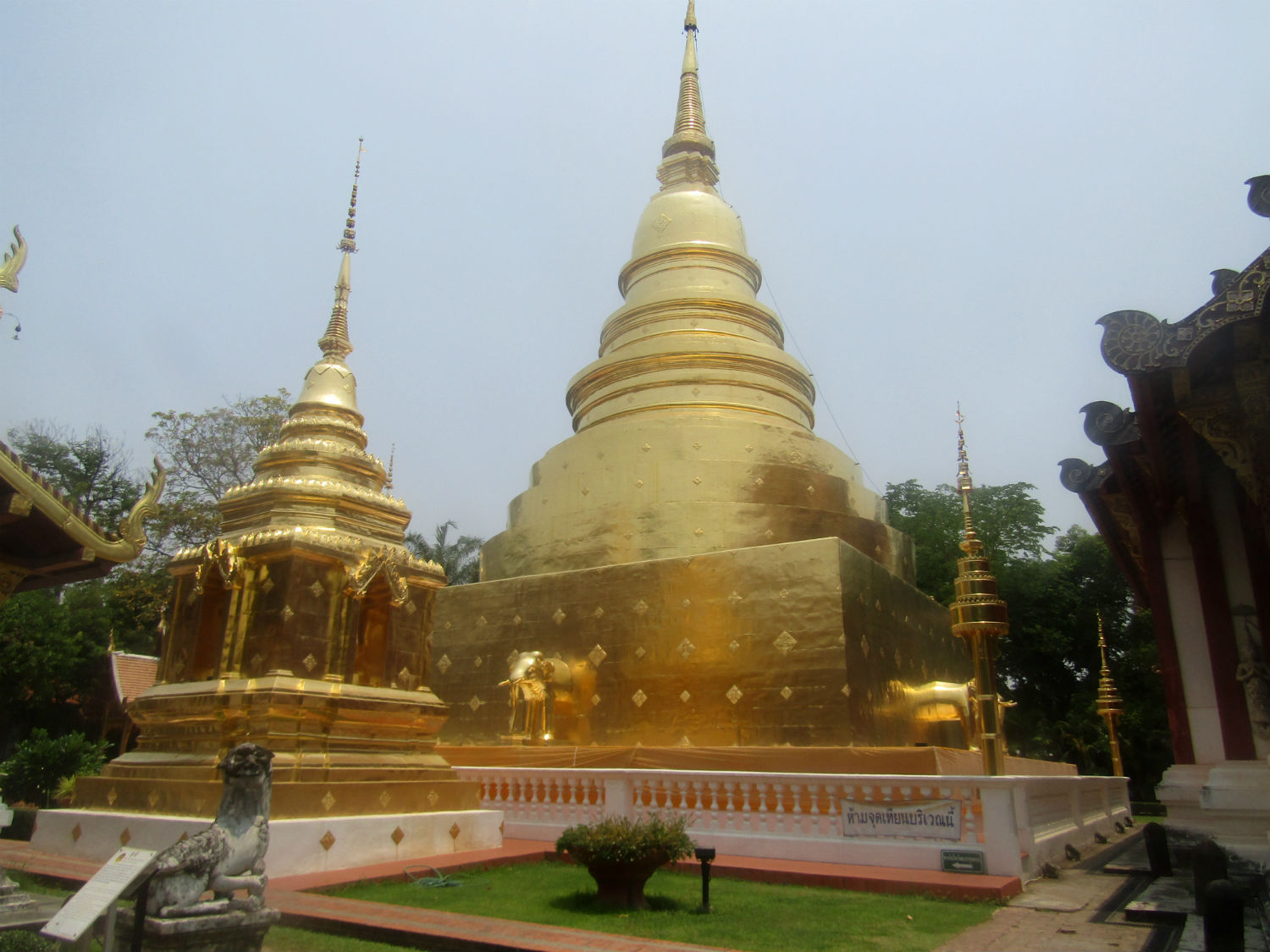
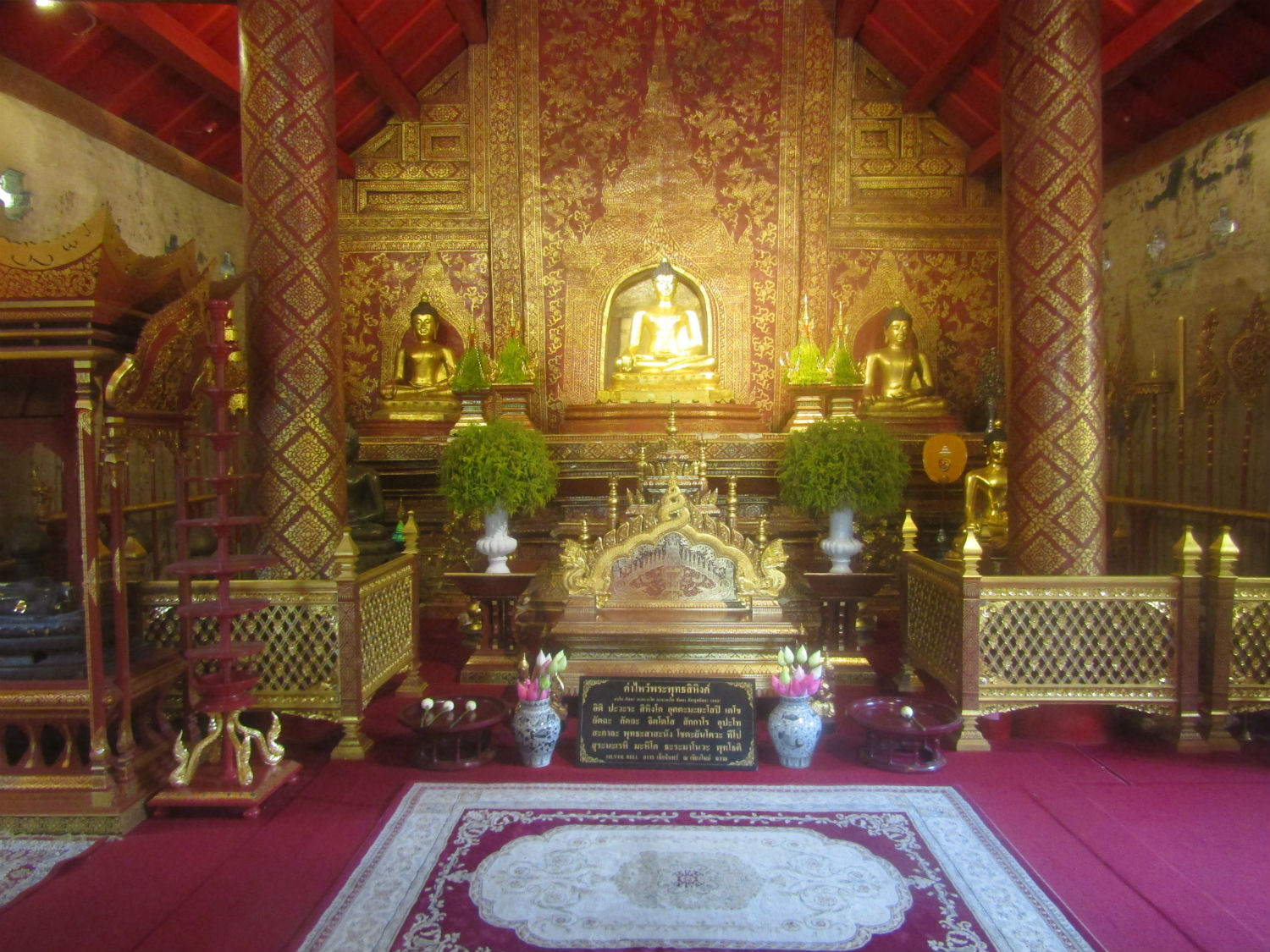
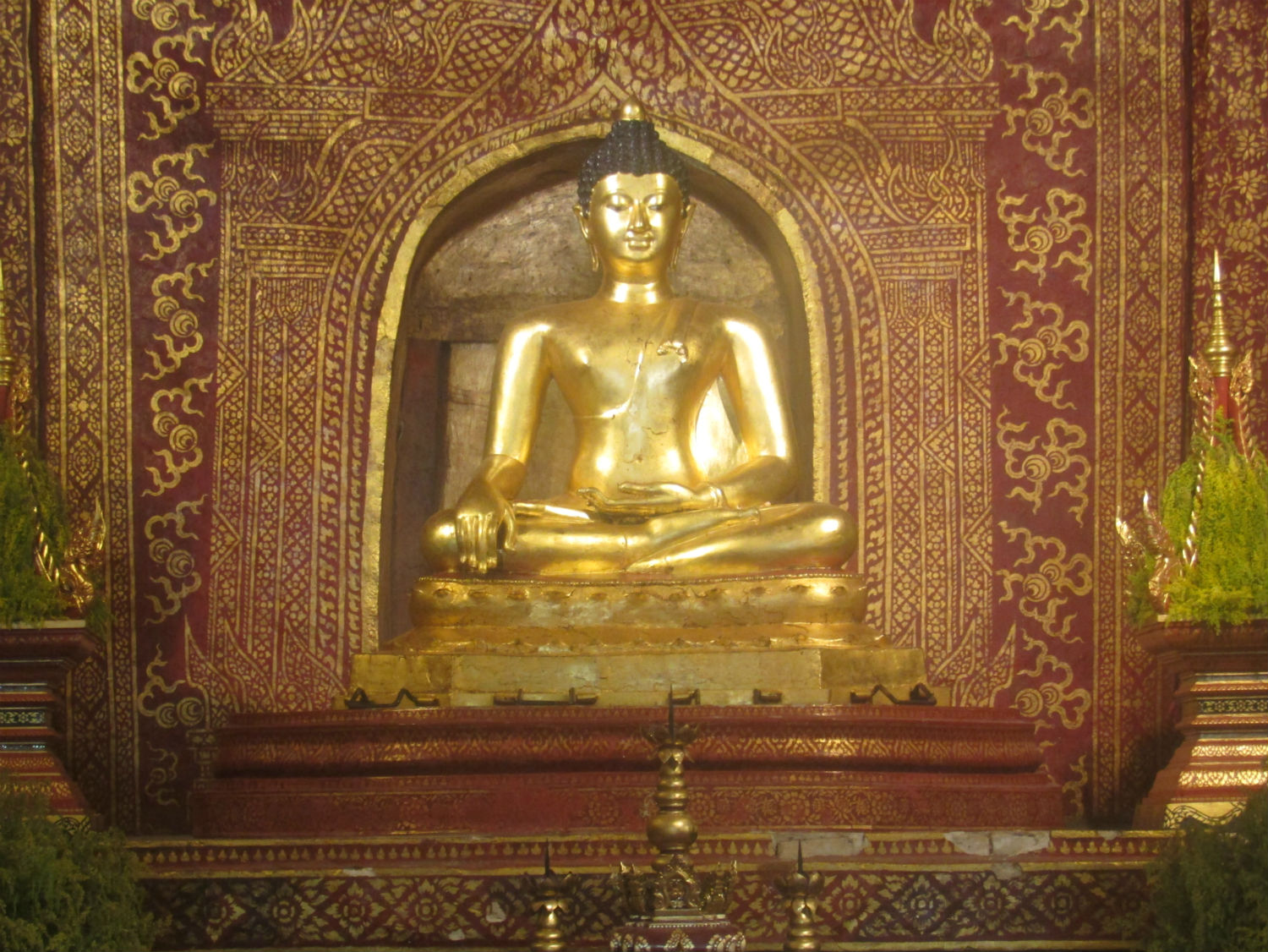
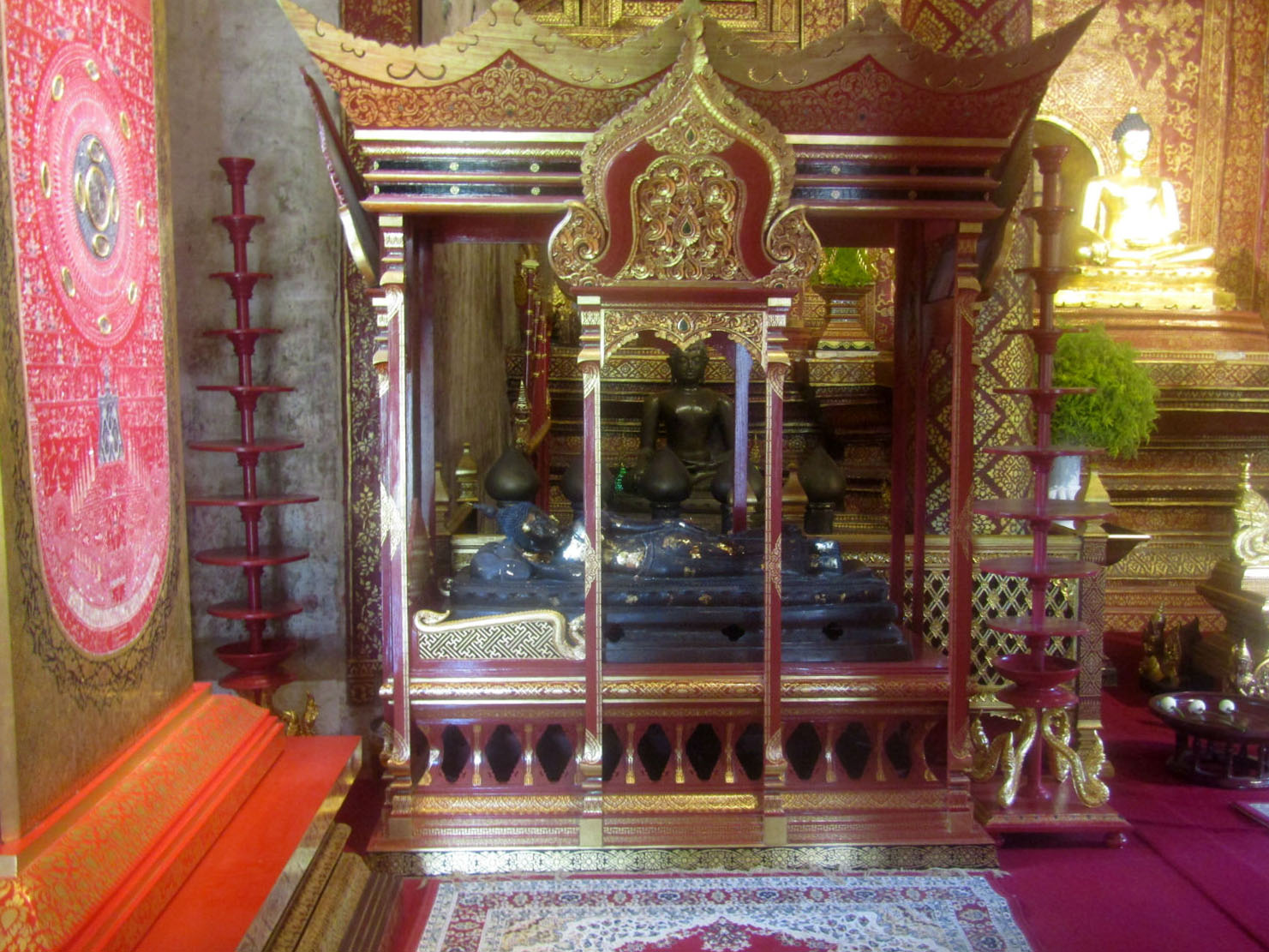




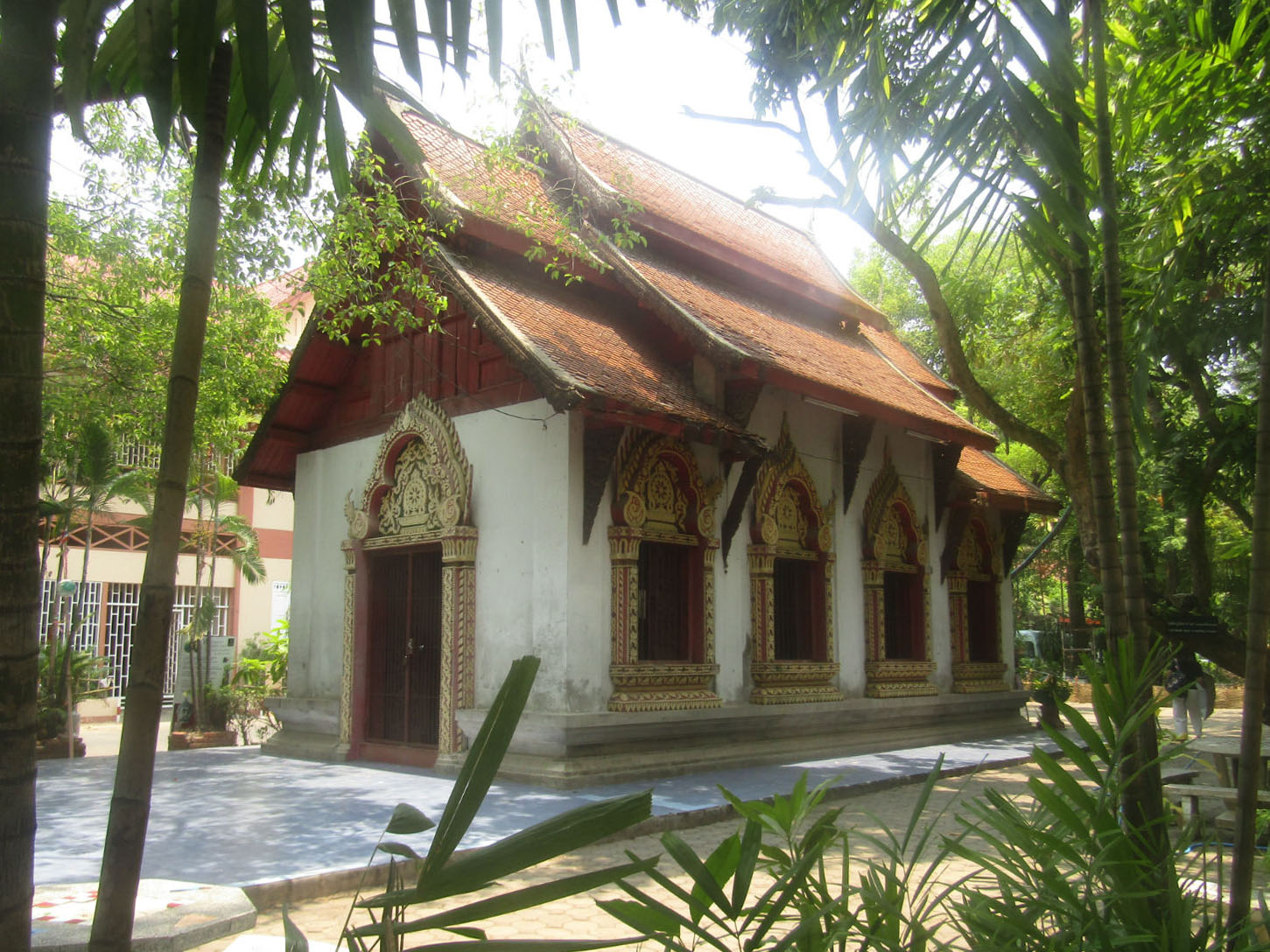
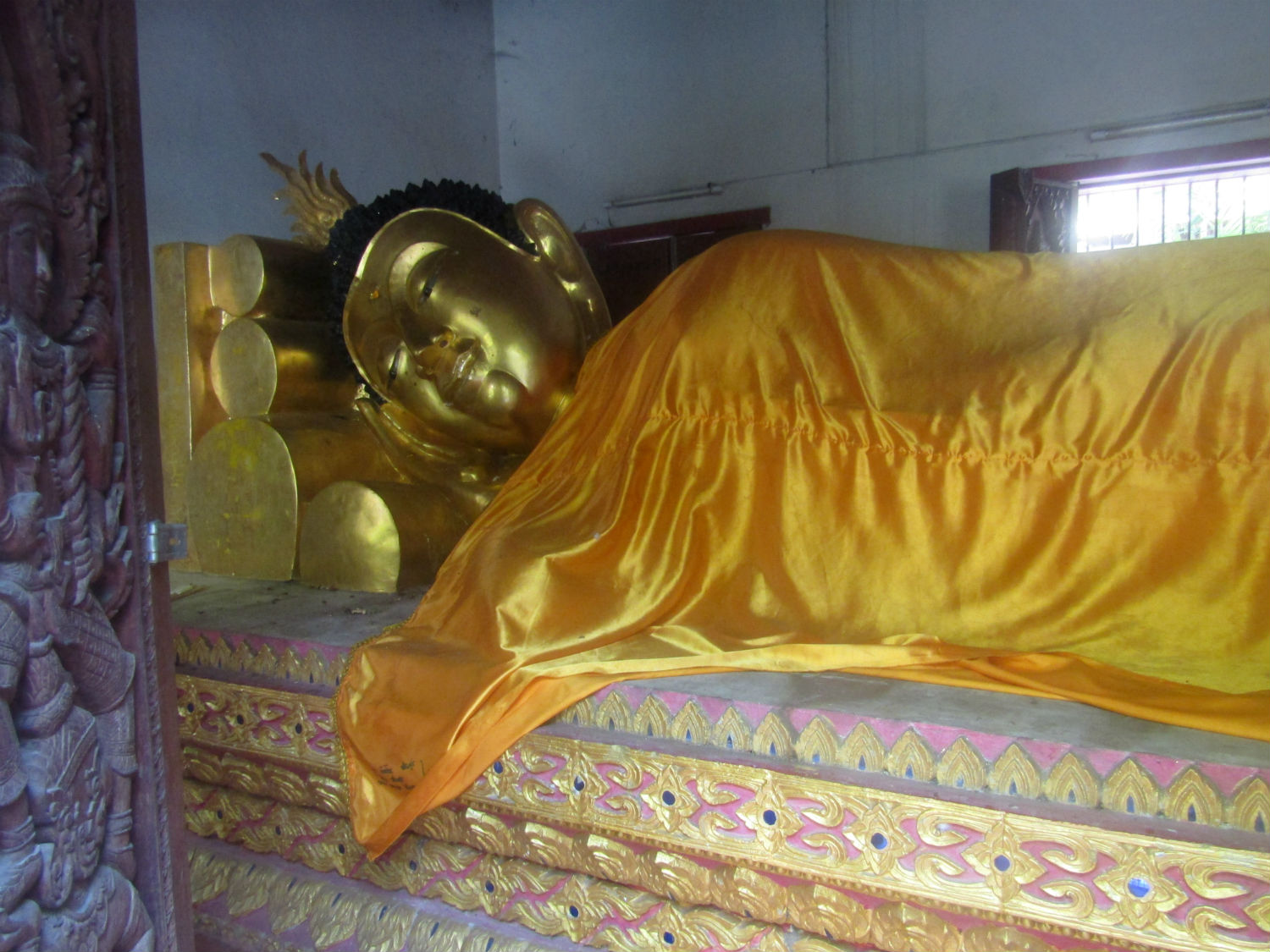
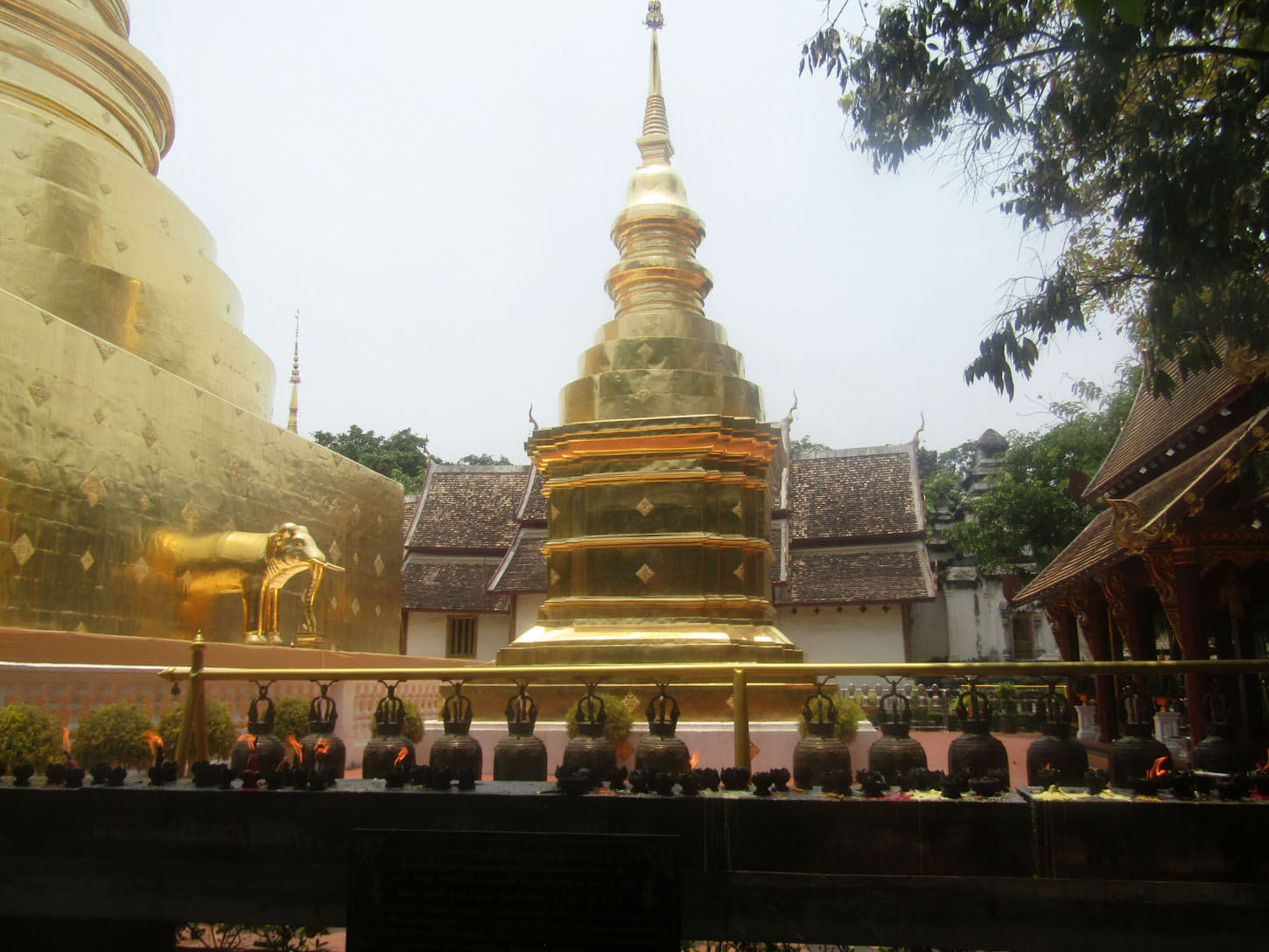
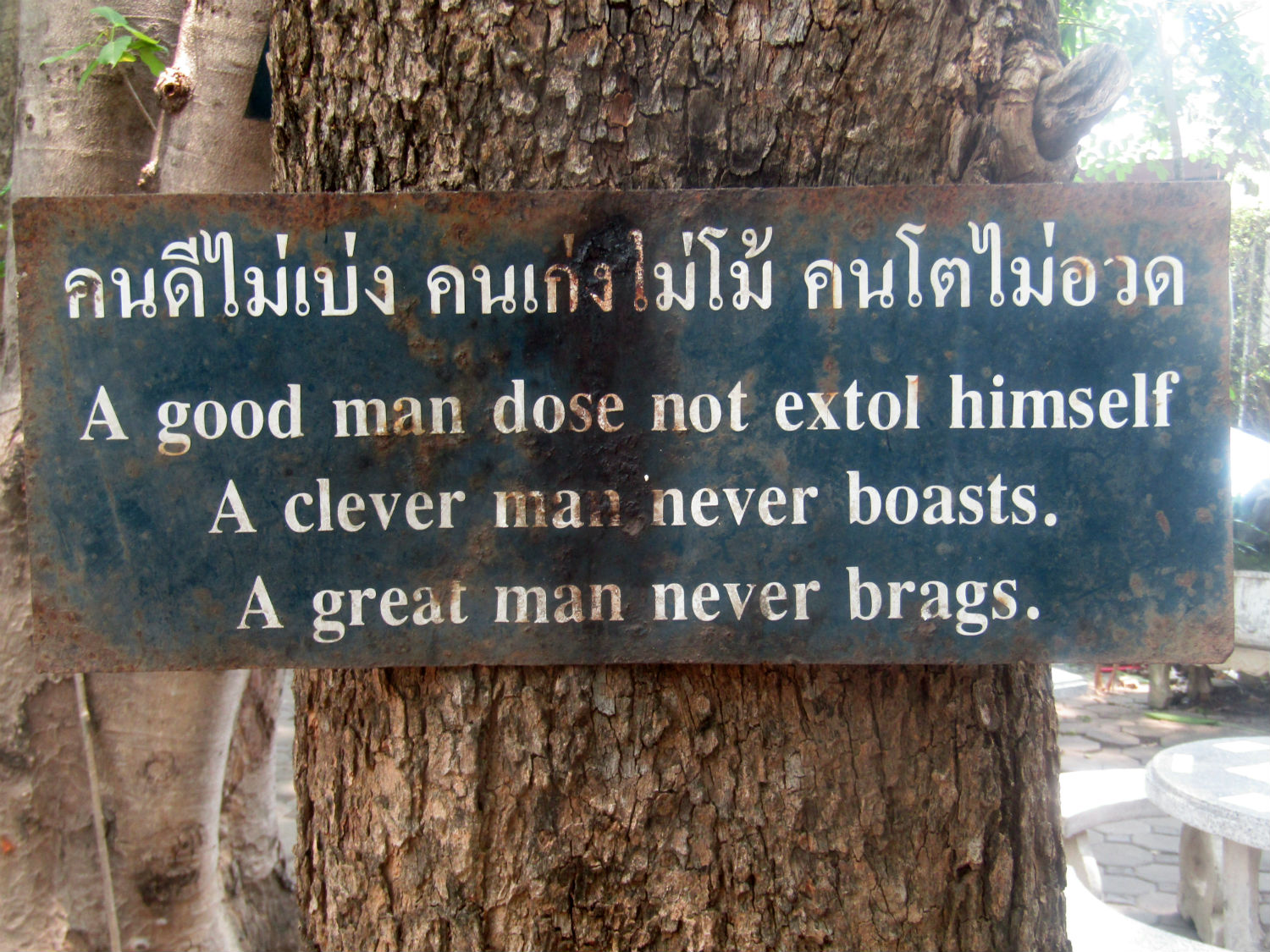 Wat Phra Singh Woramahaviharn, Chiang Mai
Wat Phra Singh Woramahaviharn, Chiang Mai
Wat Chedi Luang……..
At Wat Chedi Luang Katoon drives up to one of the entrances and receives a pass. Entering through the gate it soon becomes apparent that this 'entrance' is in fact the exit but Katoon is let in anyway. At the main entrance there is a fee to pay of 100 baht so for the second time in quick succession, I’ve dodged a bullet. For reasons I’ve already mentioned that doesn’t concern me at all.
Wat Chedi Luang is a Buddhist temple in the historic centre of Chiang Mai. The current temple grounds were originally made up of three temples — Wat Chedi Luang, Wat Ho Tham and Wat Sukmin.
The construction of the temple started in the 14th century, when King Saen Muang Ma planned to bury the ashes of his father there. After 10 years of building time it was left unfinished, later to be continued after the death of the king by his widow. Probably due to stability problems it took until the mid-15th century to be finished during the reign of king Tilokaraj. It was then 82 m high and had a base diameter of 54 m, at that time the largest building of all Lanna. In 1468, the Emerald Buddha was installed in the eastern niche. In 1545, the upper 30 m of the structure collapsed after an earthquake, and shortly thereafter, in 1551, the Emerald Buddha was moved to Luang Prabang.
In the early 1990s the chedi was reconstructed, financed by UNESCO and the Japanese government. However the result is somewhat controversial, as some claim the new elements are in Central Thai style, not Lanna style. For the 600th anniversary of the chedi in 1995, a copy of the Emerald Buddha made from black jade was placed in the reconstructed eastern niche. The icon is named officially as Phra Phut Chaloem Sirirat, but is commonly known as Phra Yok (Yok meaning jade).
Also in the temple grounds is the city pillar (Lak Mueang) of Chiang Mai, named Sao Inthakin. It was moved to this location in 1800 by King Chao Kawila; it was originally located in Wat Sadeu Muang. He also planted three dipterocarp trees there, which are supposed to assist the city pillar to protect the town. A festival in honor of the city pillar is held every year in May and lasts 6–8 days.
In a viharn near the entrance to the temple is the Buddha statue named Phra Chao Attarot (Eighteen-cubit Buddha), which was cast in the late 14th century. On the other side of the chedi is another pavilion housing a reclining Buddha statue.
Wat Chedi Luang is a Buddhist temple in the historic centre of Chiang Mai. The current temple grounds were originally made up of three temples — Wat Chedi Luang, Wat Ho Tham and Wat Sukmin.
The construction of the temple started in the 14th century, when King Saen Muang Ma planned to bury the ashes of his father there. After 10 years of building time it was left unfinished, later to be continued after the death of the king by his widow. Probably due to stability problems it took until the mid-15th century to be finished during the reign of king Tilokaraj. It was then 82 m high and had a base diameter of 54 m, at that time the largest building of all Lanna. In 1468, the Emerald Buddha was installed in the eastern niche. In 1545, the upper 30 m of the structure collapsed after an earthquake, and shortly thereafter, in 1551, the Emerald Buddha was moved to Luang Prabang.
In the early 1990s the chedi was reconstructed, financed by UNESCO and the Japanese government. However the result is somewhat controversial, as some claim the new elements are in Central Thai style, not Lanna style. For the 600th anniversary of the chedi in 1995, a copy of the Emerald Buddha made from black jade was placed in the reconstructed eastern niche. The icon is named officially as Phra Phut Chaloem Sirirat, but is commonly known as Phra Yok (Yok meaning jade).
Also in the temple grounds is the city pillar (Lak Mueang) of Chiang Mai, named Sao Inthakin. It was moved to this location in 1800 by King Chao Kawila; it was originally located in Wat Sadeu Muang. He also planted three dipterocarp trees there, which are supposed to assist the city pillar to protect the town. A festival in honor of the city pillar is held every year in May and lasts 6–8 days.
In a viharn near the entrance to the temple is the Buddha statue named Phra Chao Attarot (Eighteen-cubit Buddha), which was cast in the late 14th century. On the other side of the chedi is another pavilion housing a reclining Buddha statue.

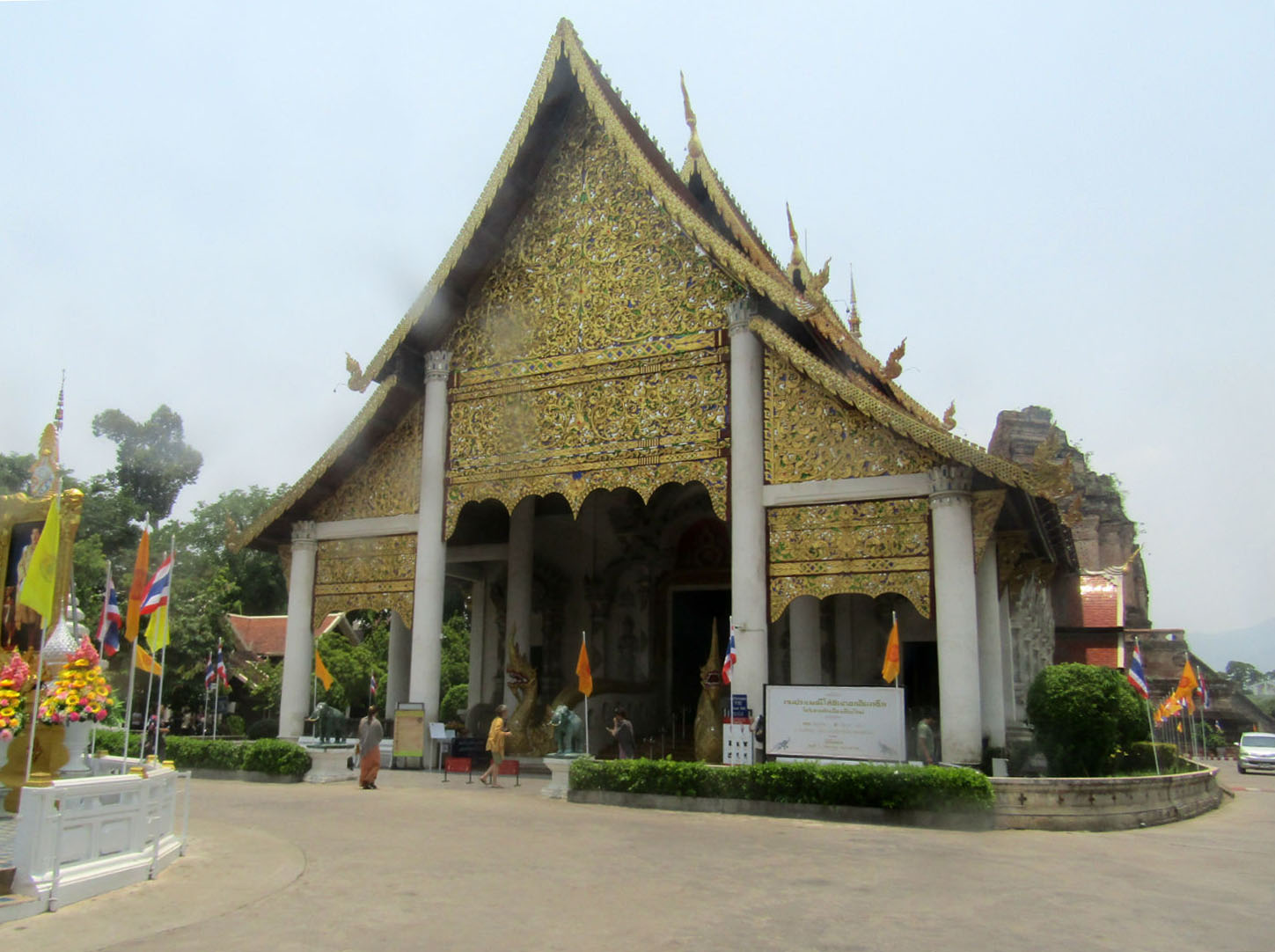
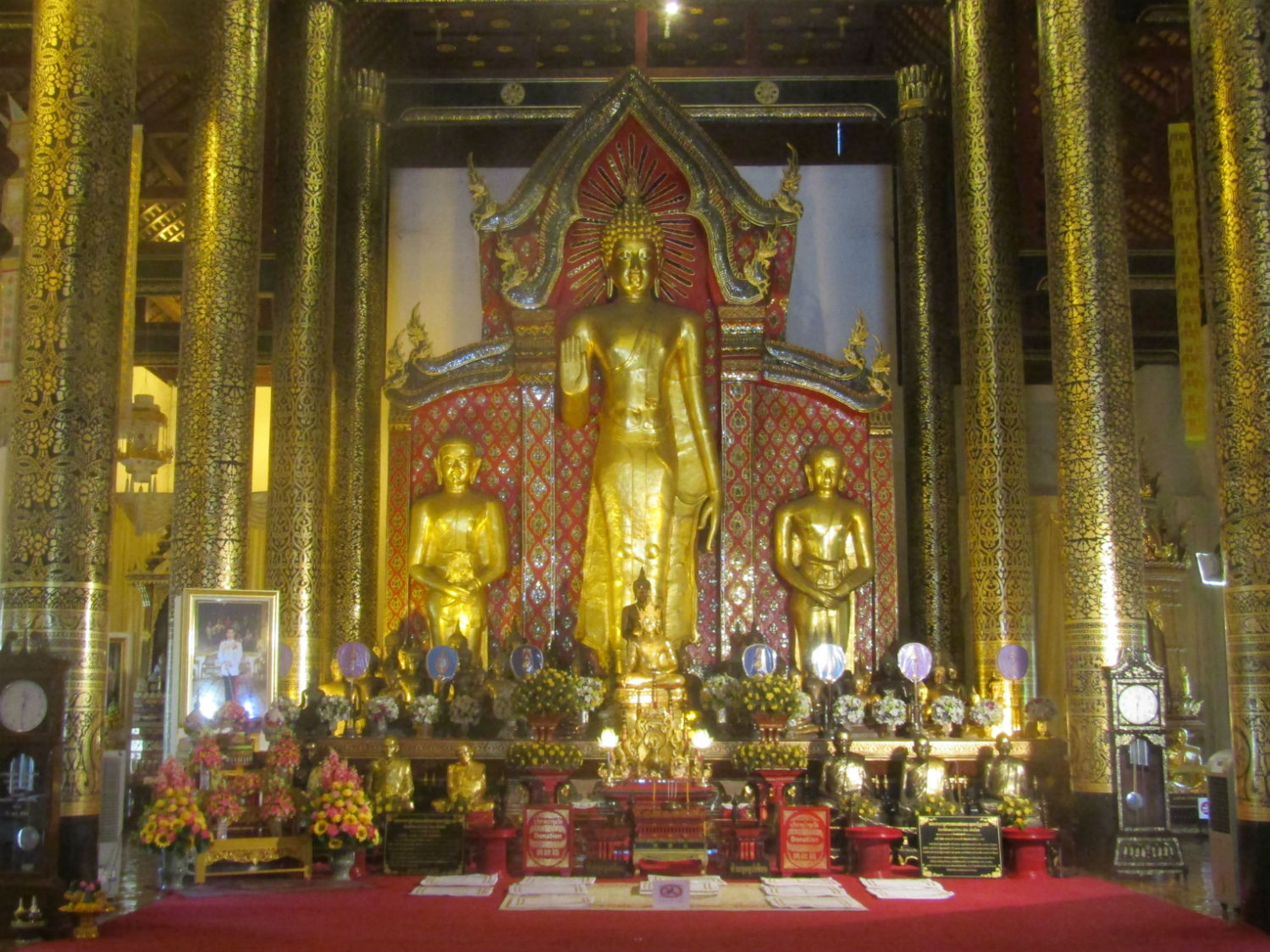
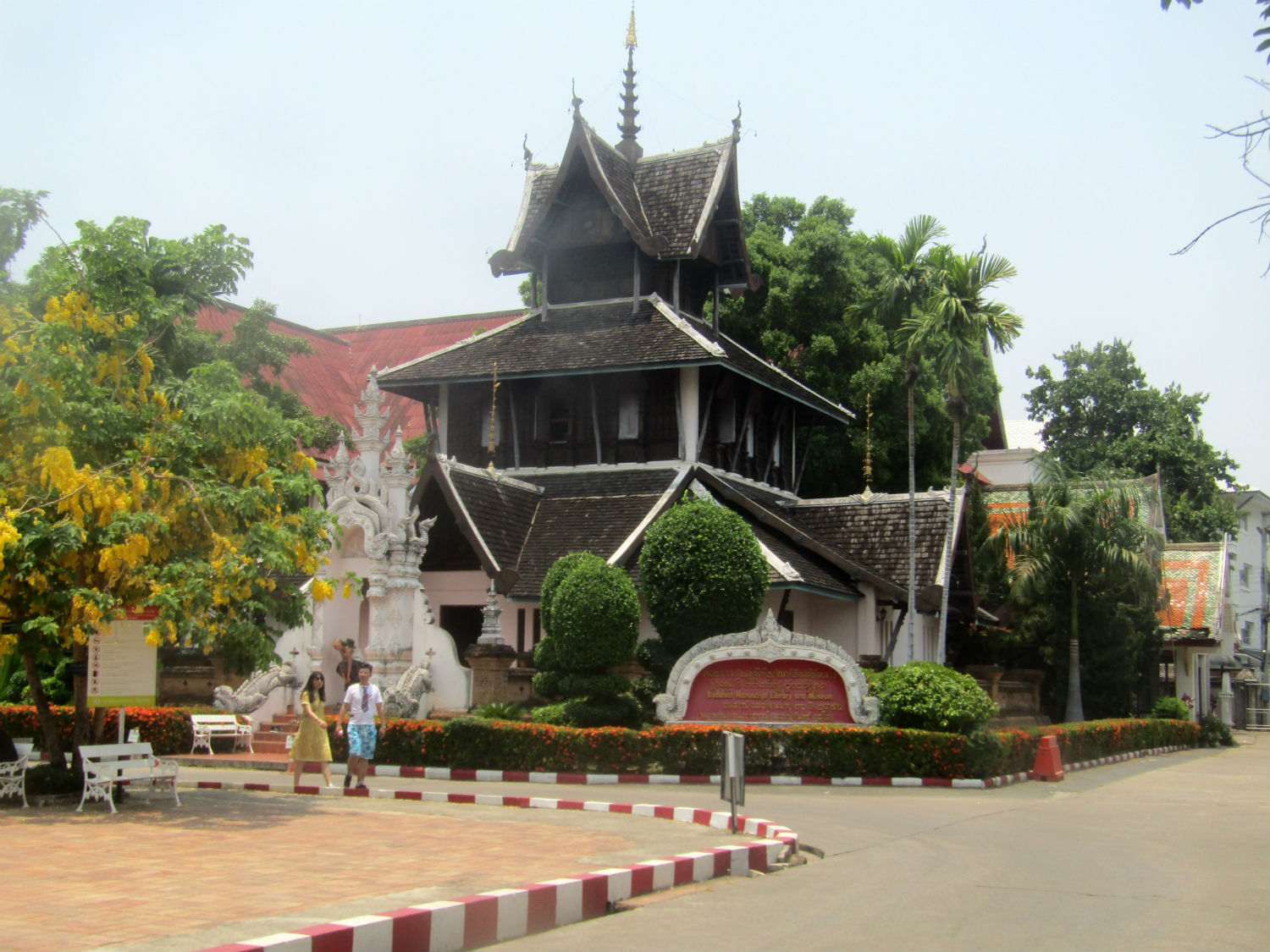
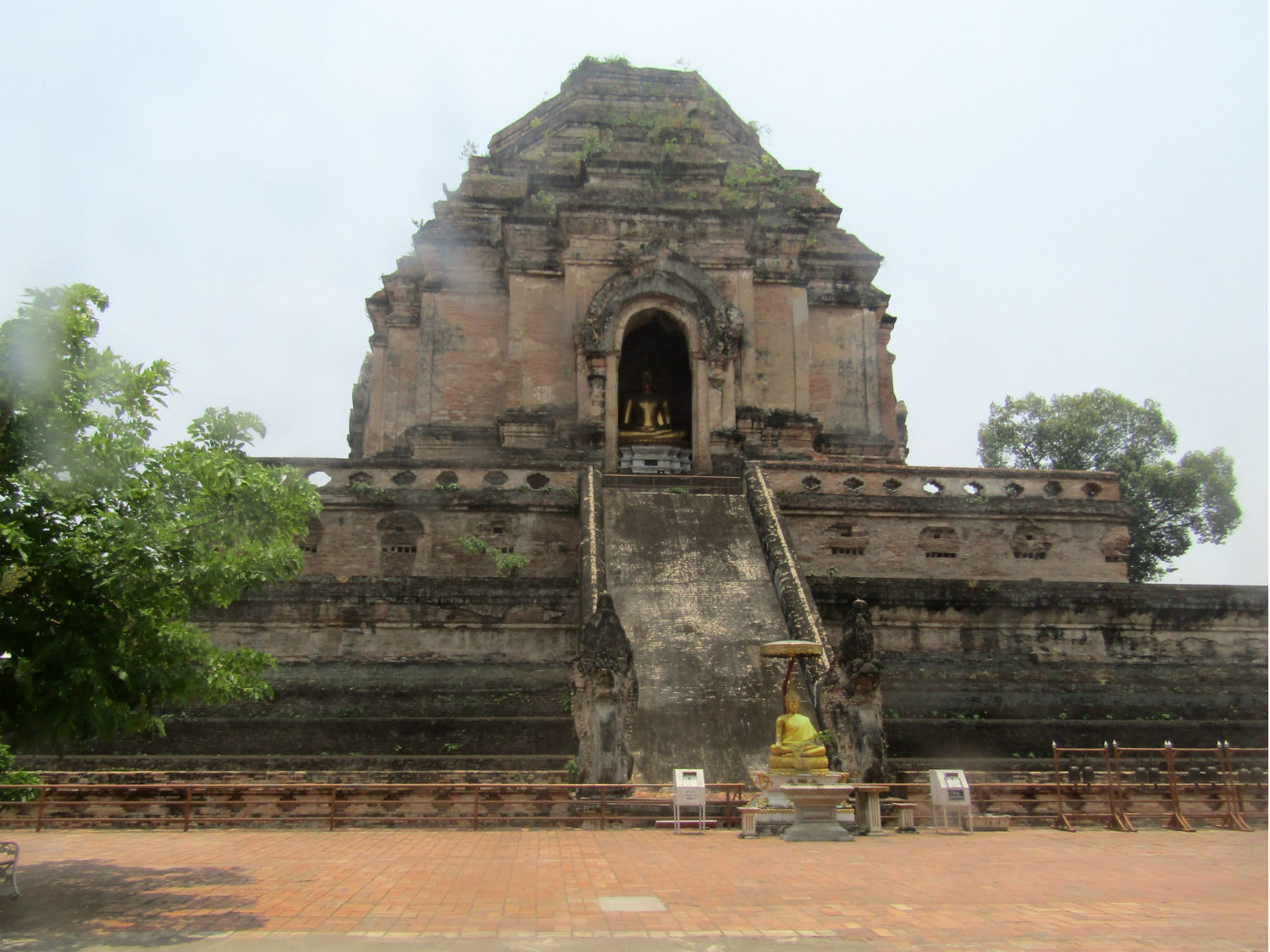
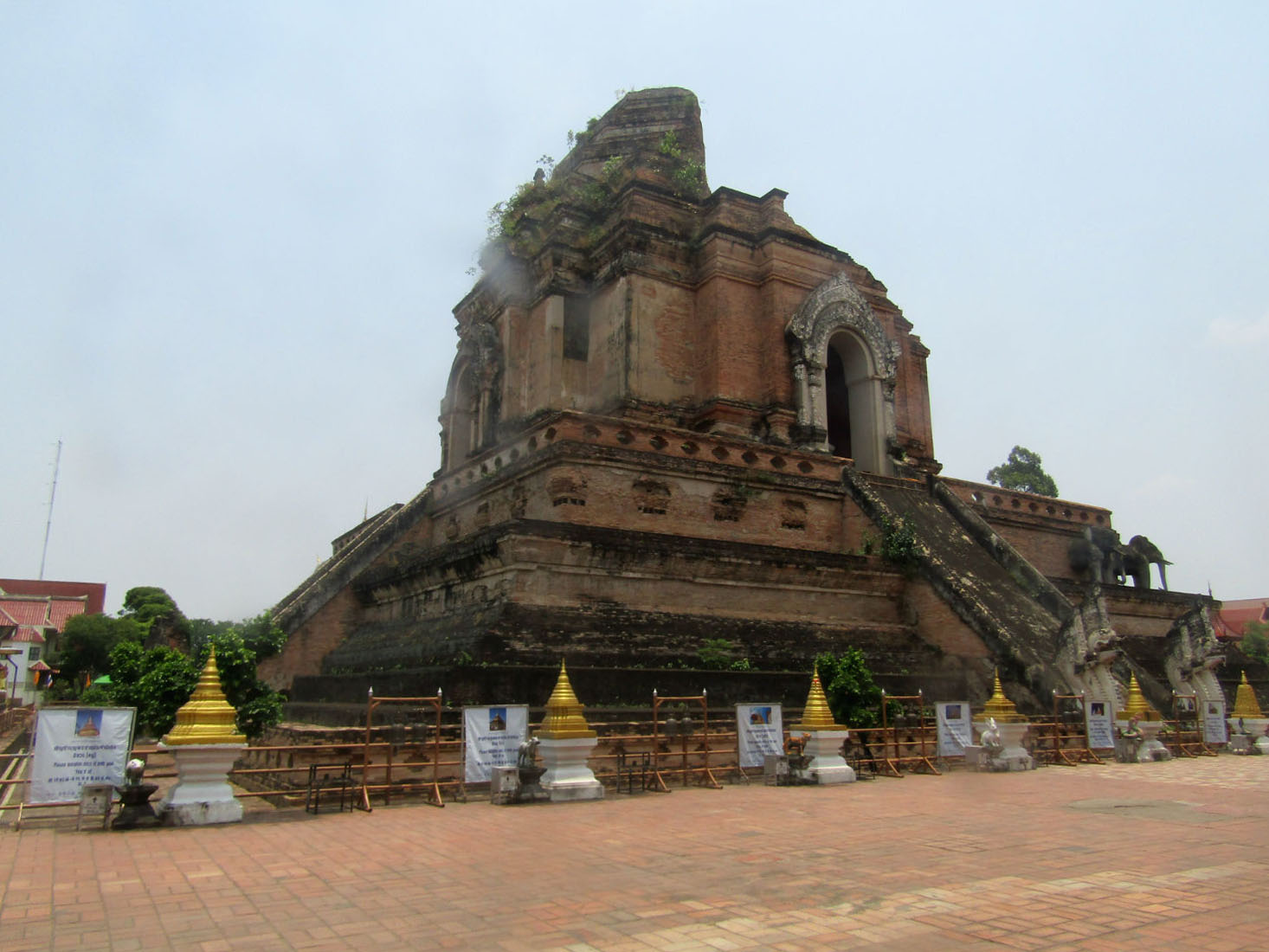
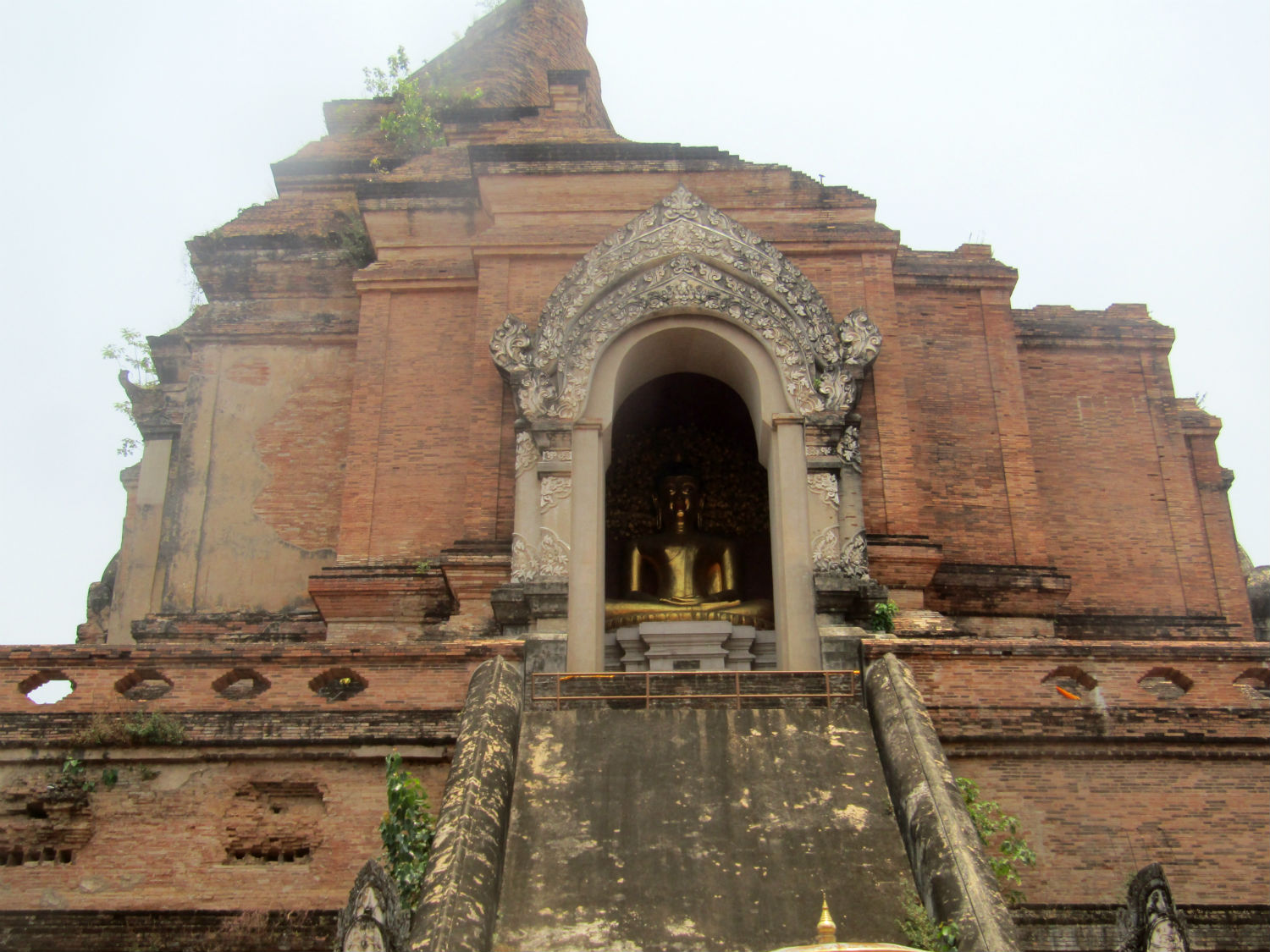

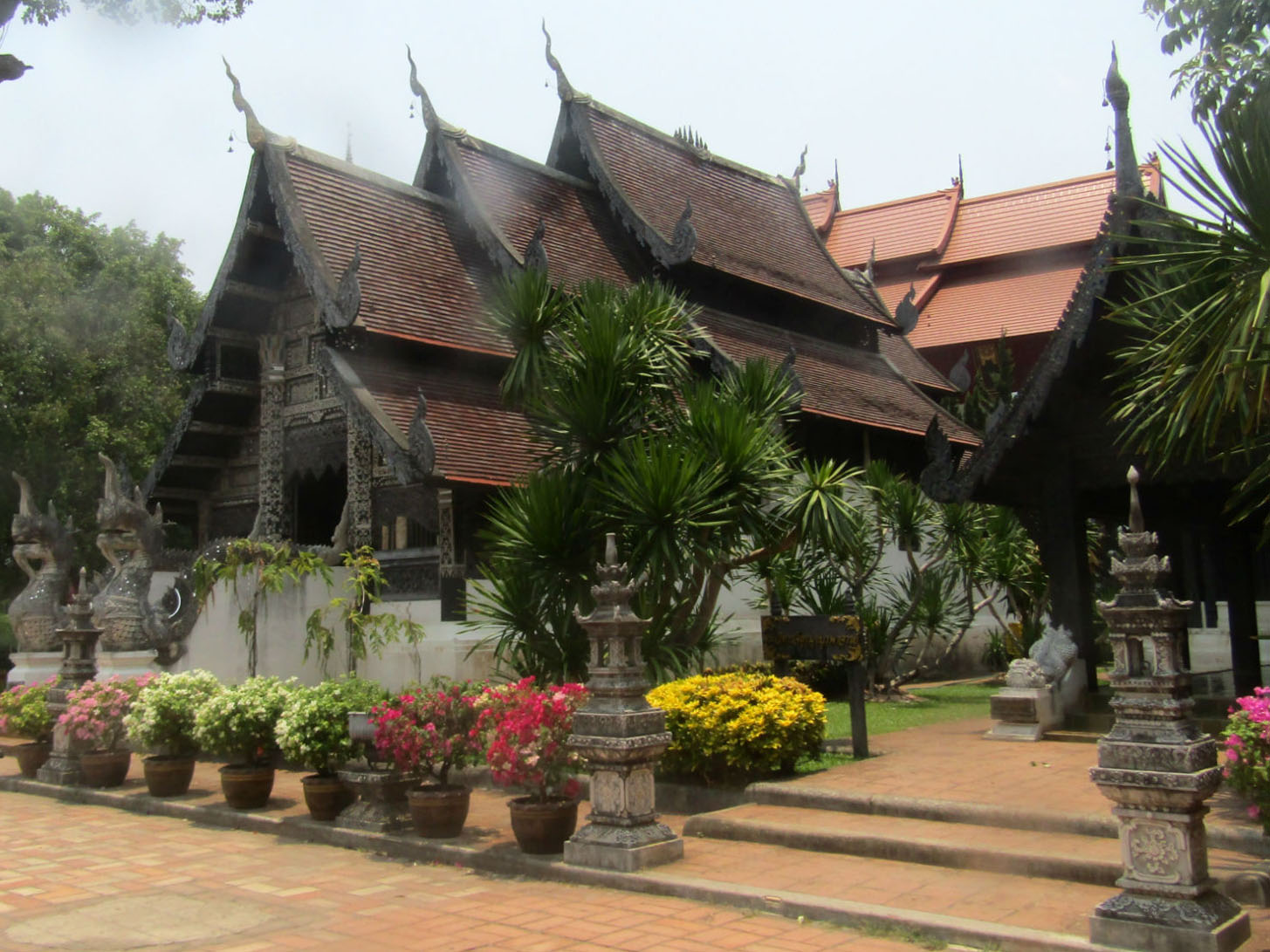
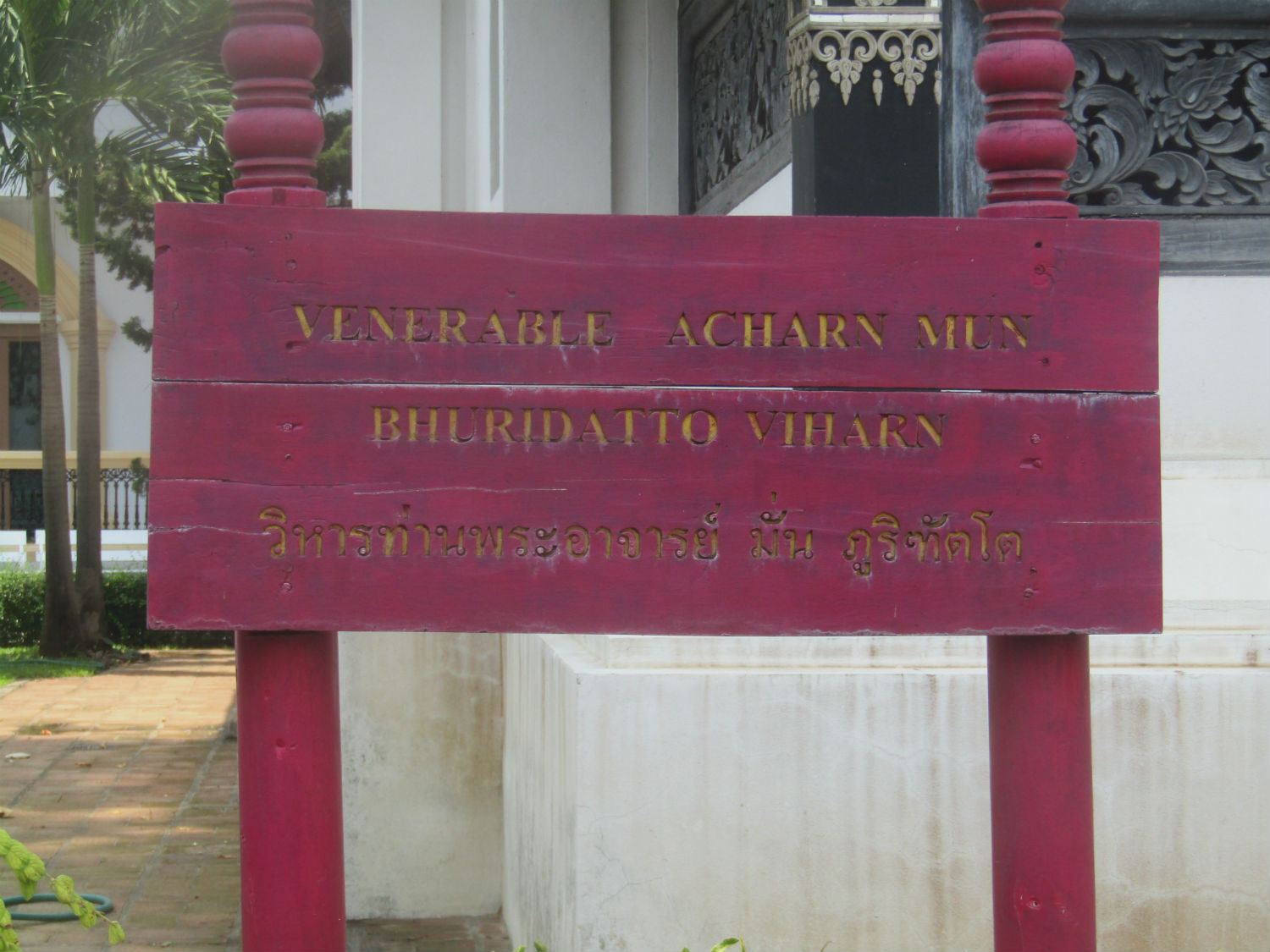
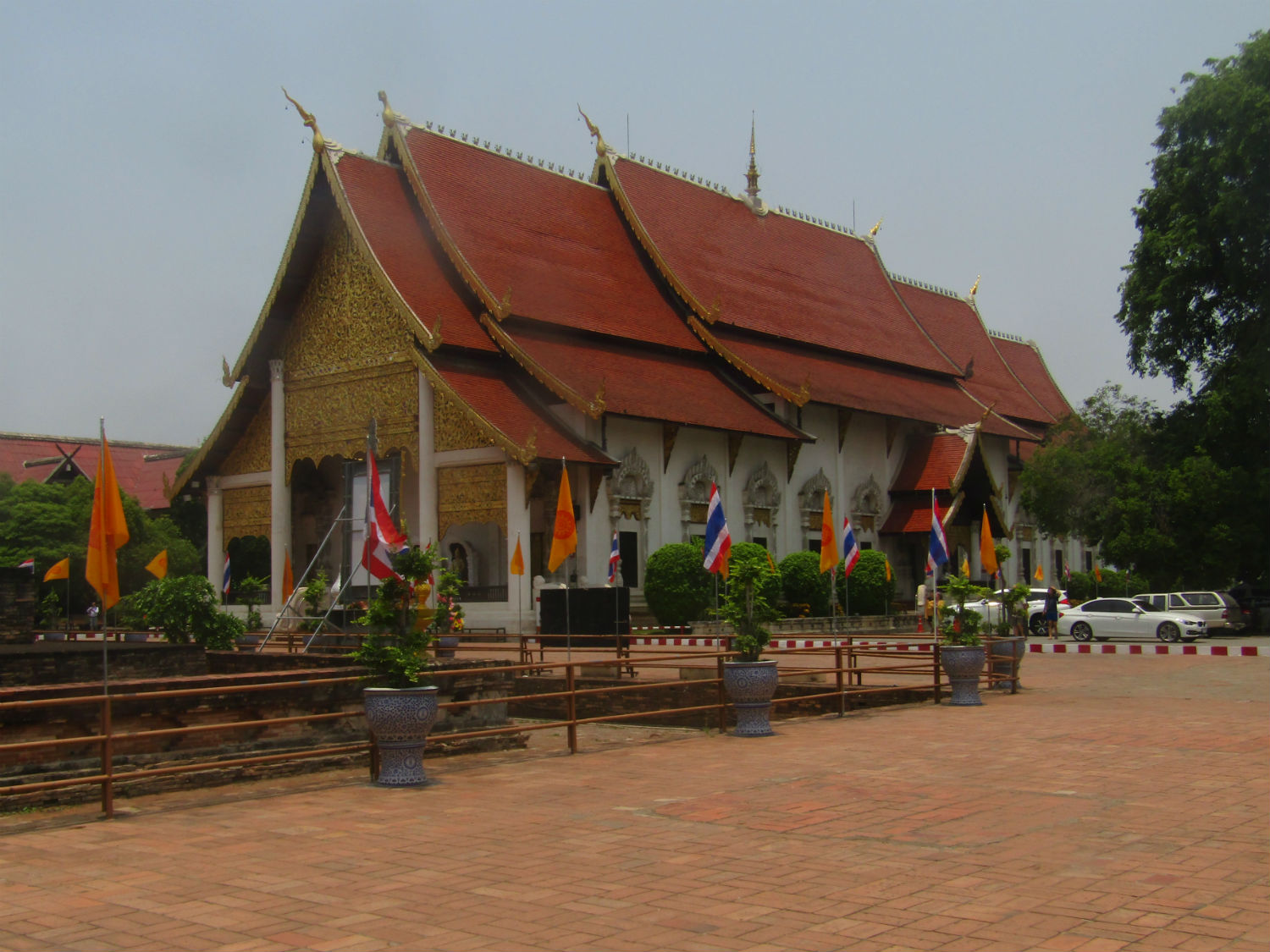
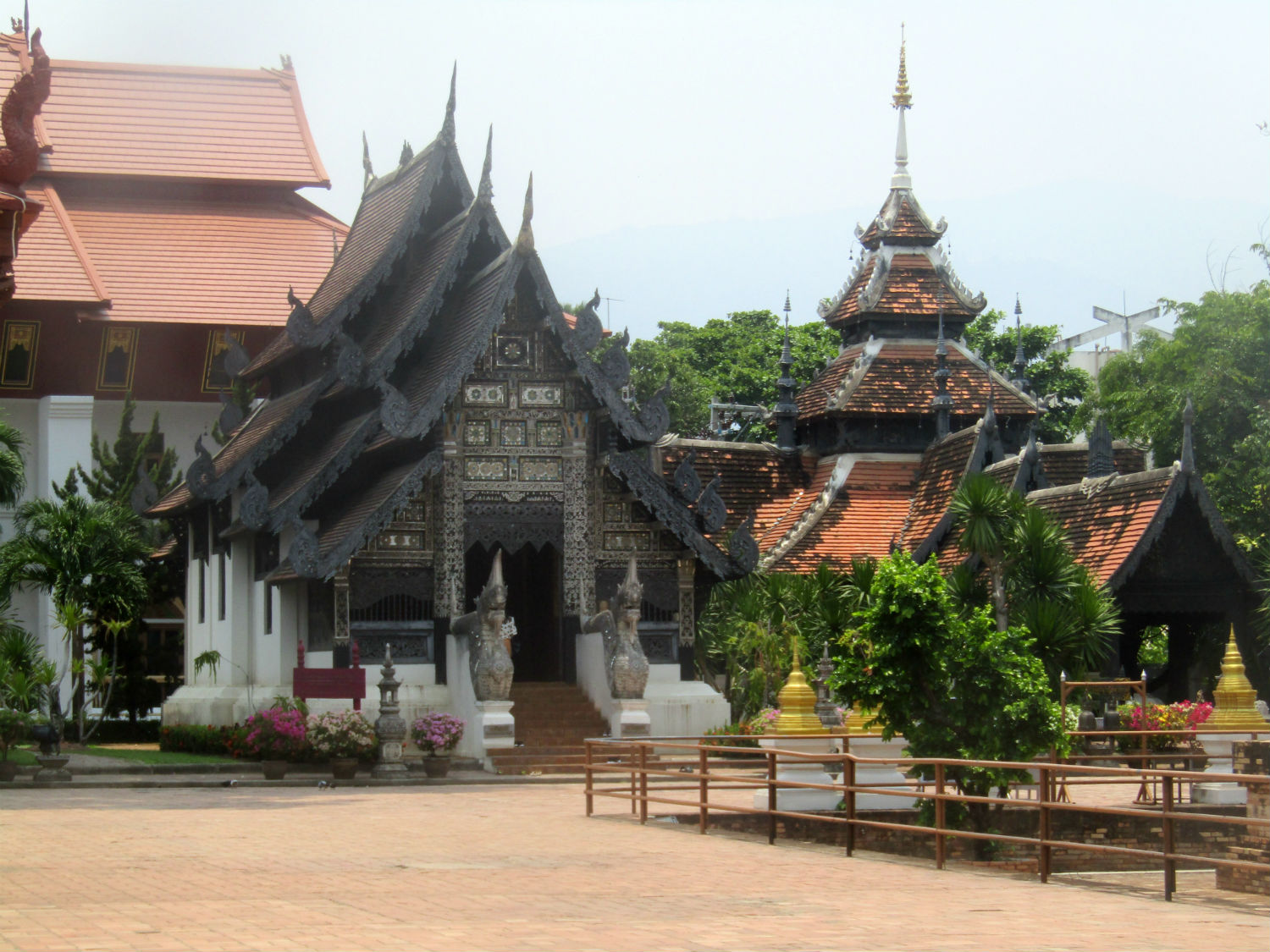 Wat Chedi Luang, Chiang Mai
Wat Chedi Luang, Chiang Mai
Wat Chiang Man……..
Reaching Wat Chiang Man we take a rather late lunch before exploring this temple.
Wat Chiang Man is a Buddhist temple inside the old city (which is contained within the city walls and moat) of Chiang Mai. It was built by Mangrai in 1297 CE as the first temple of Chiang Mai on the location of Wiang Nopburi, a fortified town of the Lawa people which had been used by King Mangrai as a camp during the construction of his new capital city Chiang Mai.
The important features of Wat Chiang Man are:-
Chedi Chang Lom - the 'Elephant Chedi', the oldest construction within the temple complex
Main Wihan - the larger of the two wihans was renovated in the 1920s by the famous monk Khru Ba Srivichai
New Wihan - the smaller of the two wihans houses two important statues of the Buddha, Phra Sae Tang Khamani and Phra Sila
Ubosot - in front of the ubosot one can find a stone stele from the year 1581 CE. This stele contains the oldest mentioning of the founding date of Chiang Mai: the 12th of April, 1296
Ho Trai - the Temple Library (scripture depository)
Lotus Pond - as with Ho Trai, temple ponds do not feature at most Chiang Mai temples
Wat Chiang Man is a Buddhist temple inside the old city (which is contained within the city walls and moat) of Chiang Mai. It was built by Mangrai in 1297 CE as the first temple of Chiang Mai on the location of Wiang Nopburi, a fortified town of the Lawa people which had been used by King Mangrai as a camp during the construction of his new capital city Chiang Mai.
The important features of Wat Chiang Man are:-
Chedi Chang Lom - the 'Elephant Chedi', the oldest construction within the temple complex
Main Wihan - the larger of the two wihans was renovated in the 1920s by the famous monk Khru Ba Srivichai
New Wihan - the smaller of the two wihans houses two important statues of the Buddha, Phra Sae Tang Khamani and Phra Sila
Ubosot - in front of the ubosot one can find a stone stele from the year 1581 CE. This stele contains the oldest mentioning of the founding date of Chiang Mai: the 12th of April, 1296
Ho Trai - the Temple Library (scripture depository)
Lotus Pond - as with Ho Trai, temple ponds do not feature at most Chiang Mai temples
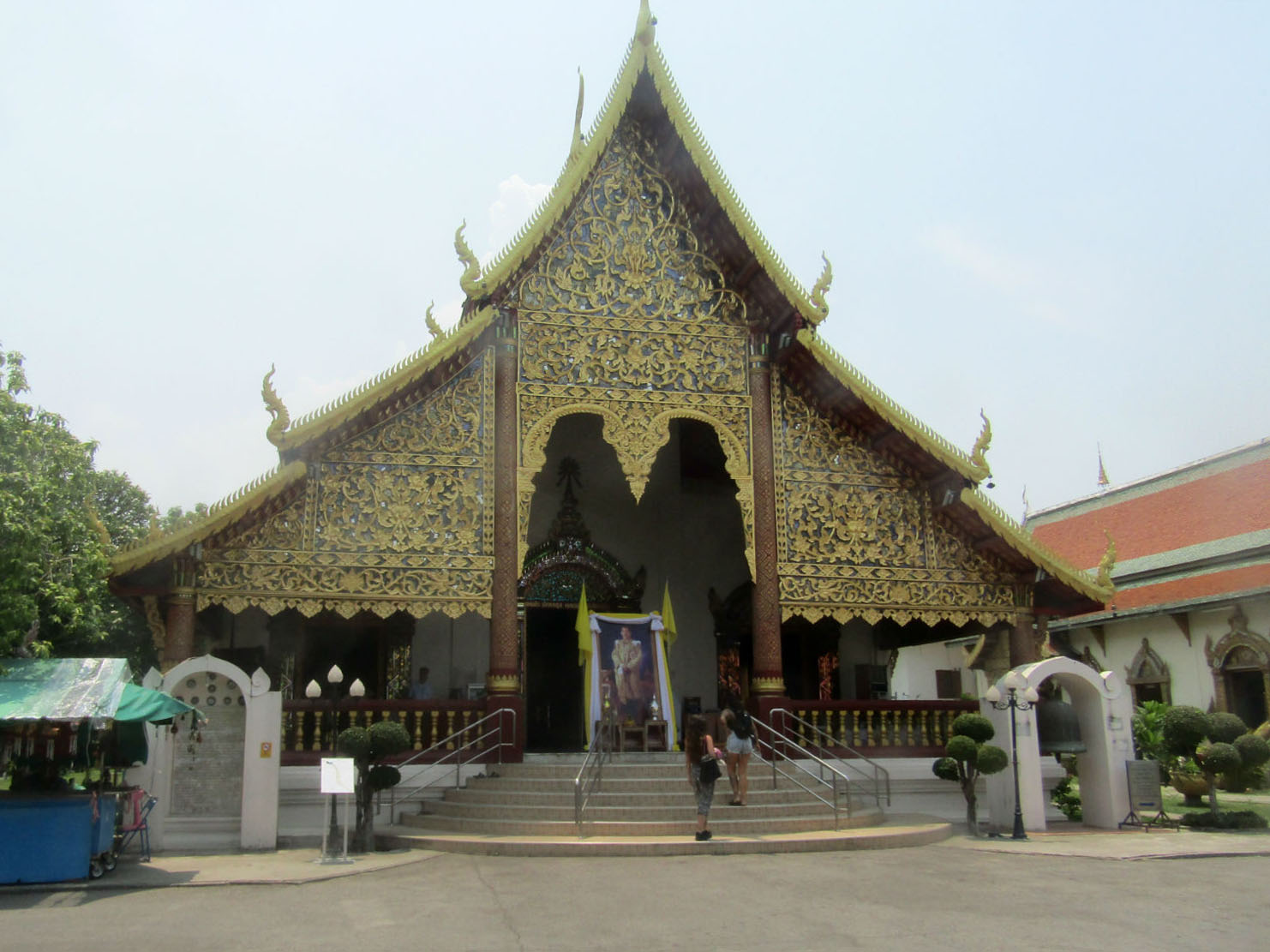
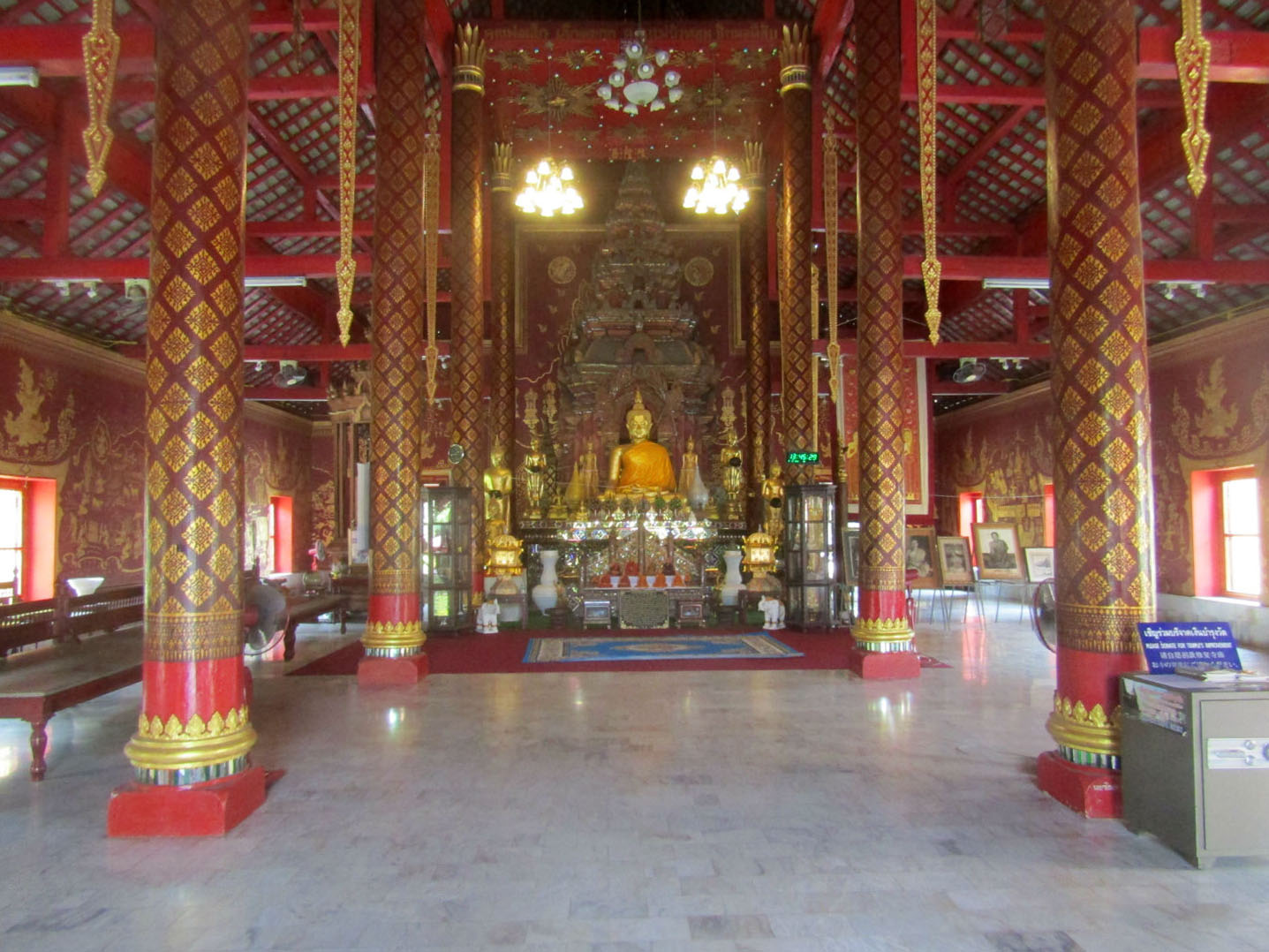
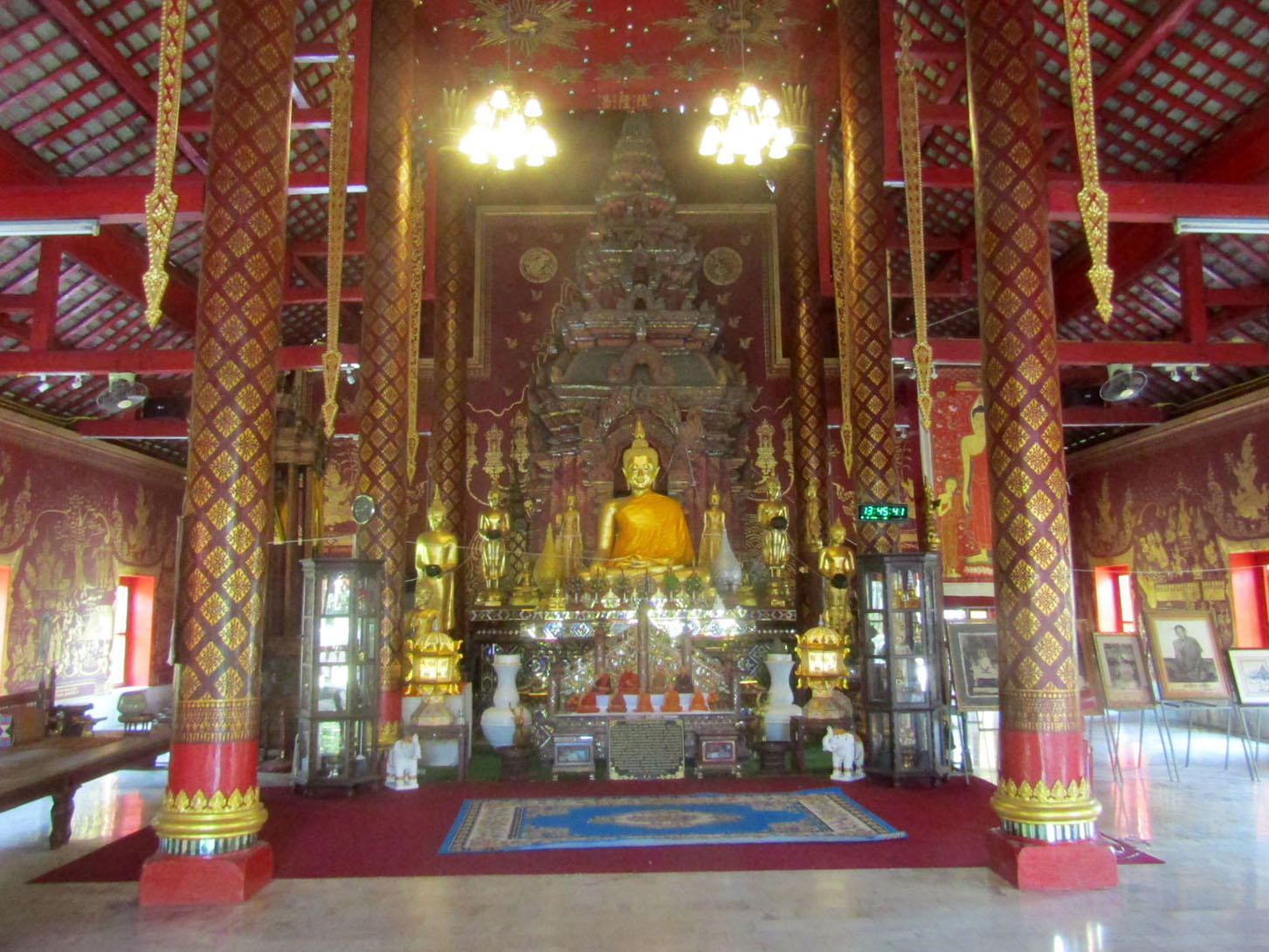
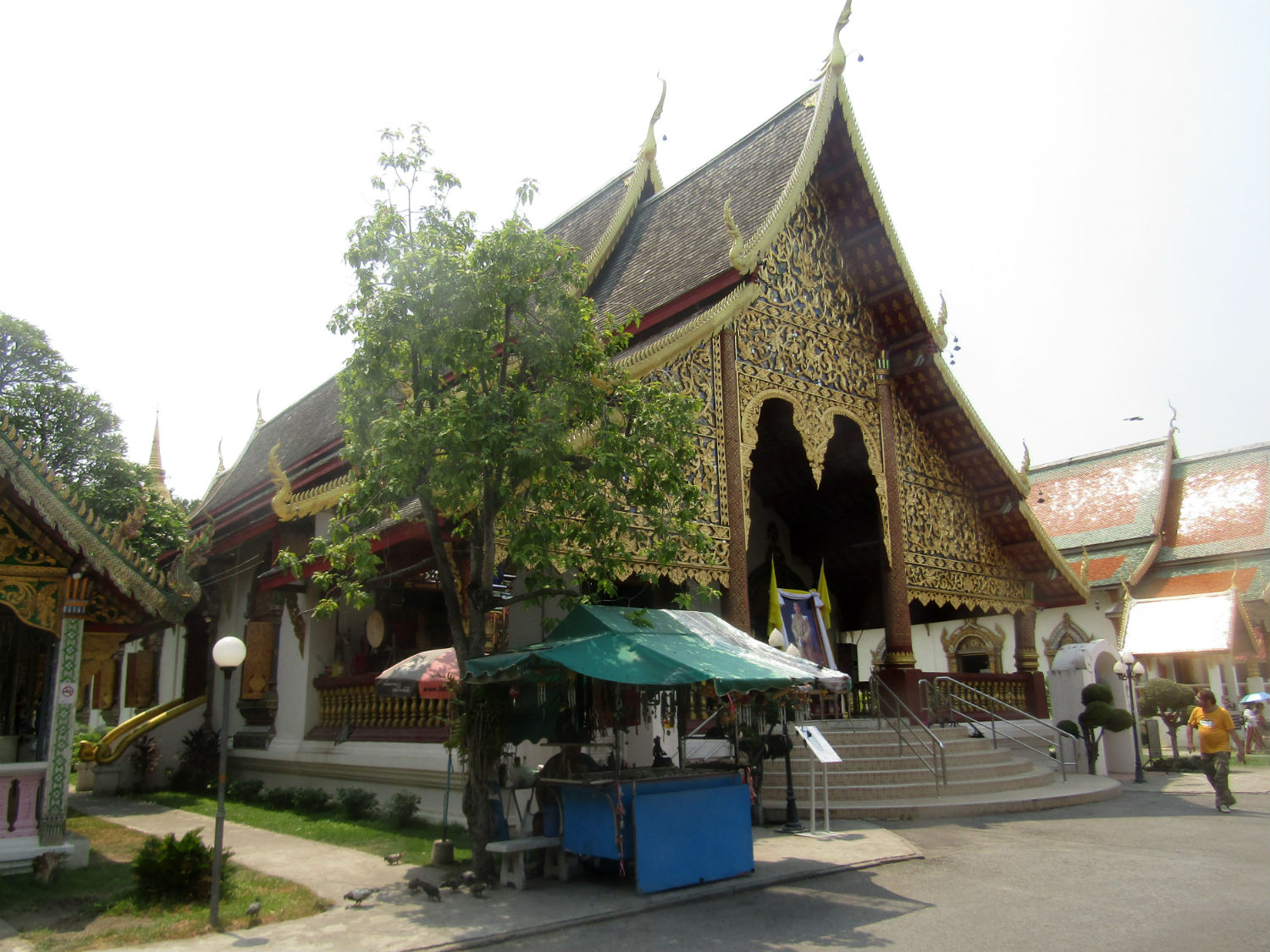
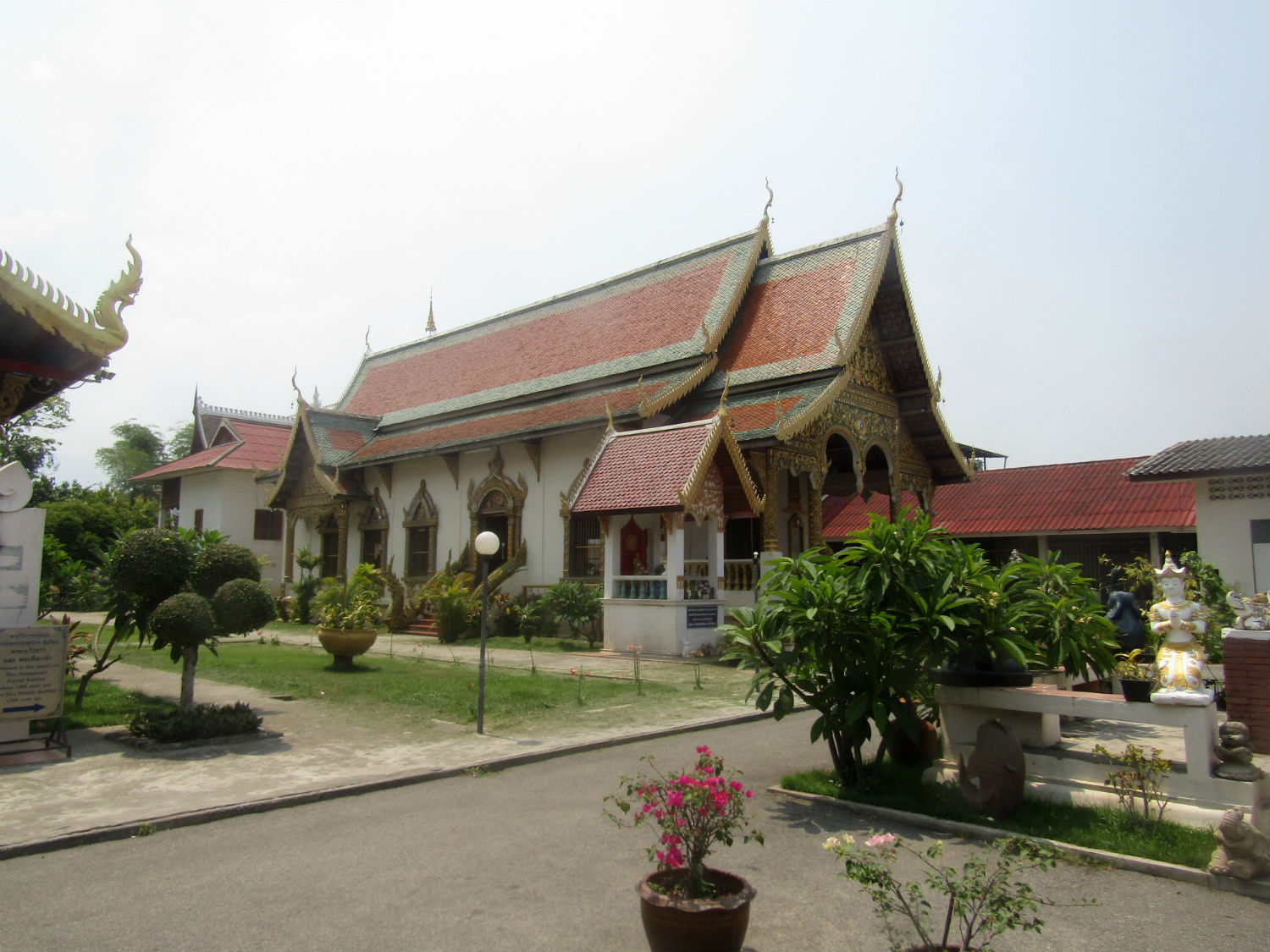
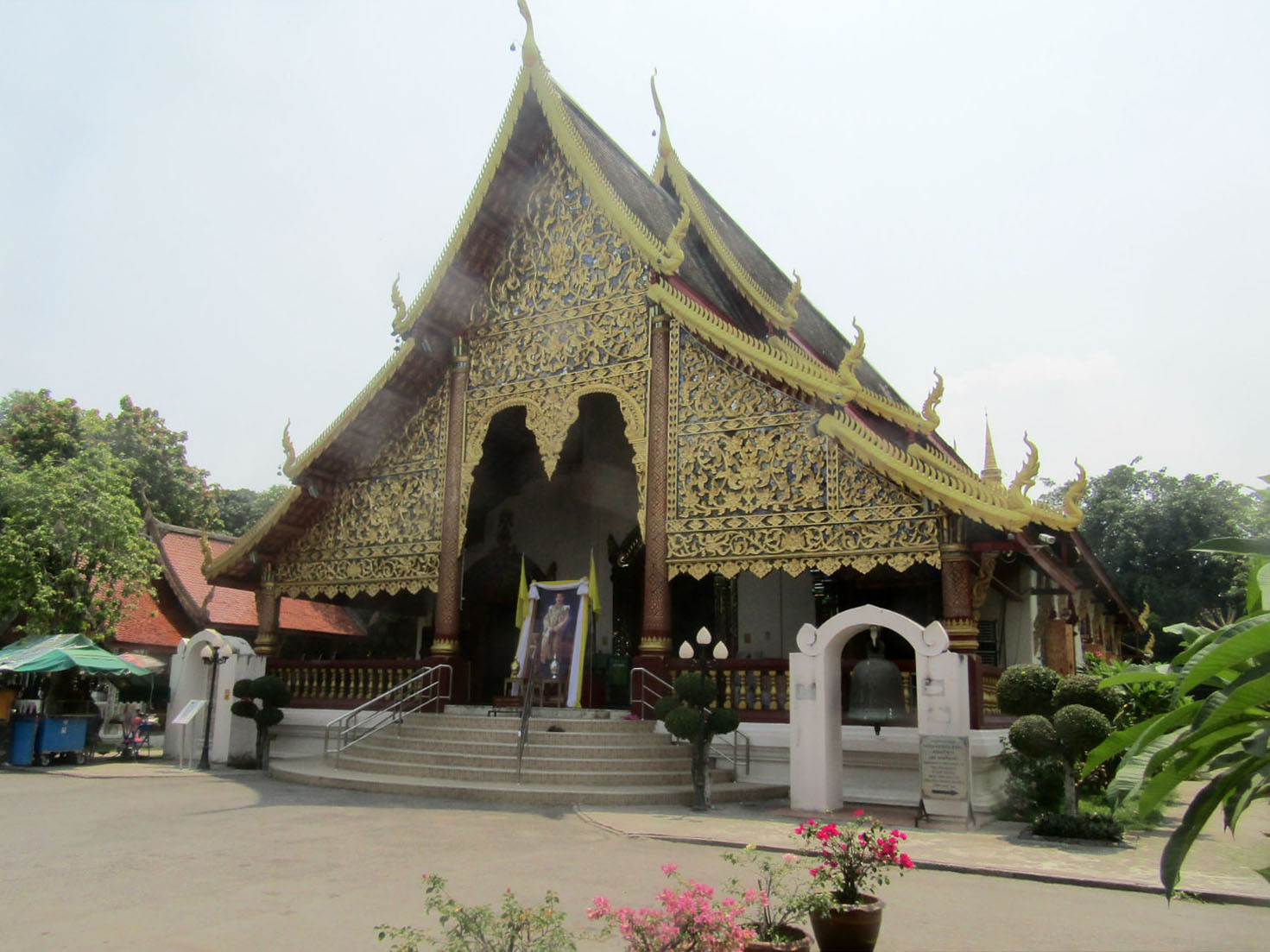
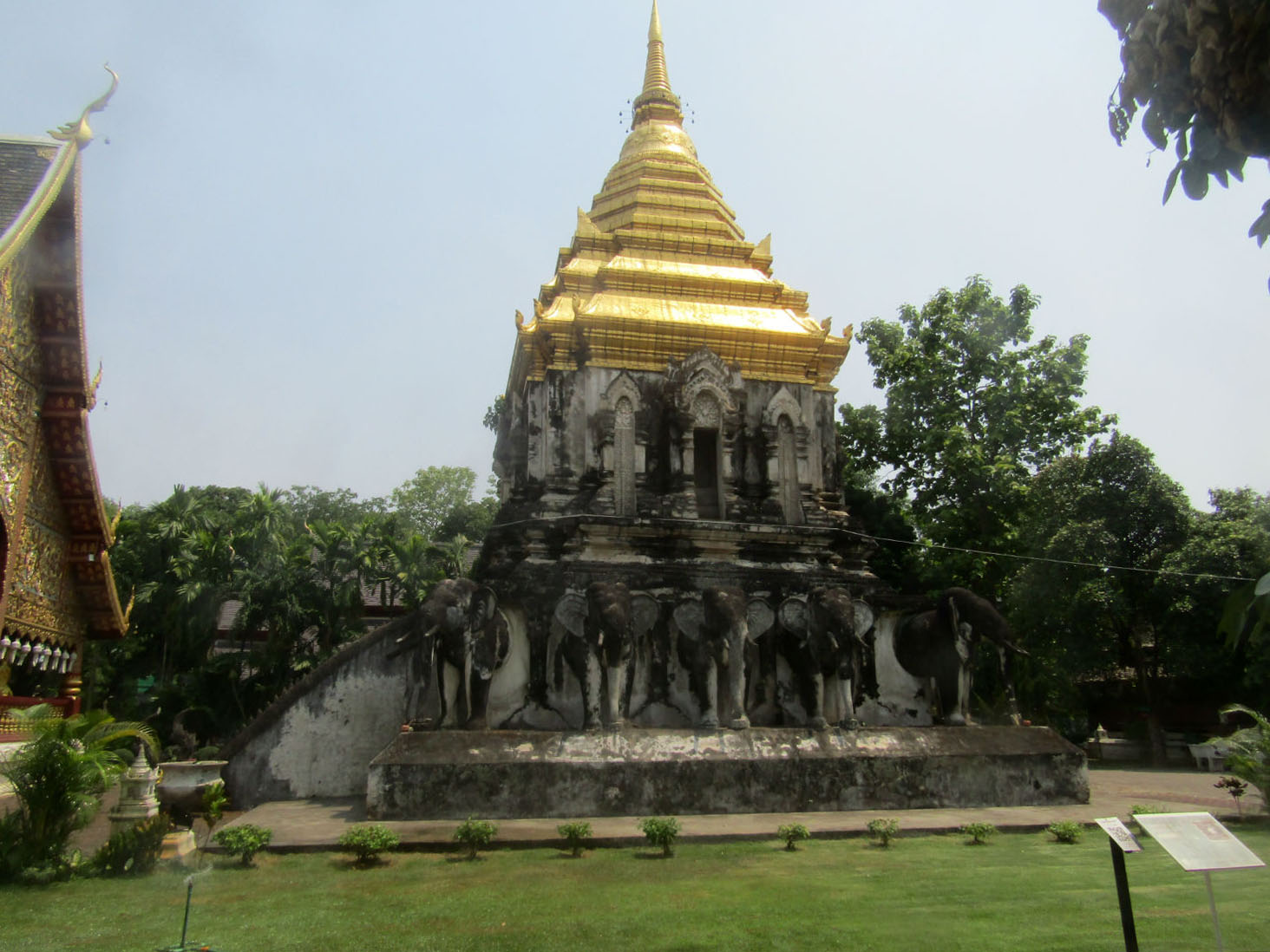
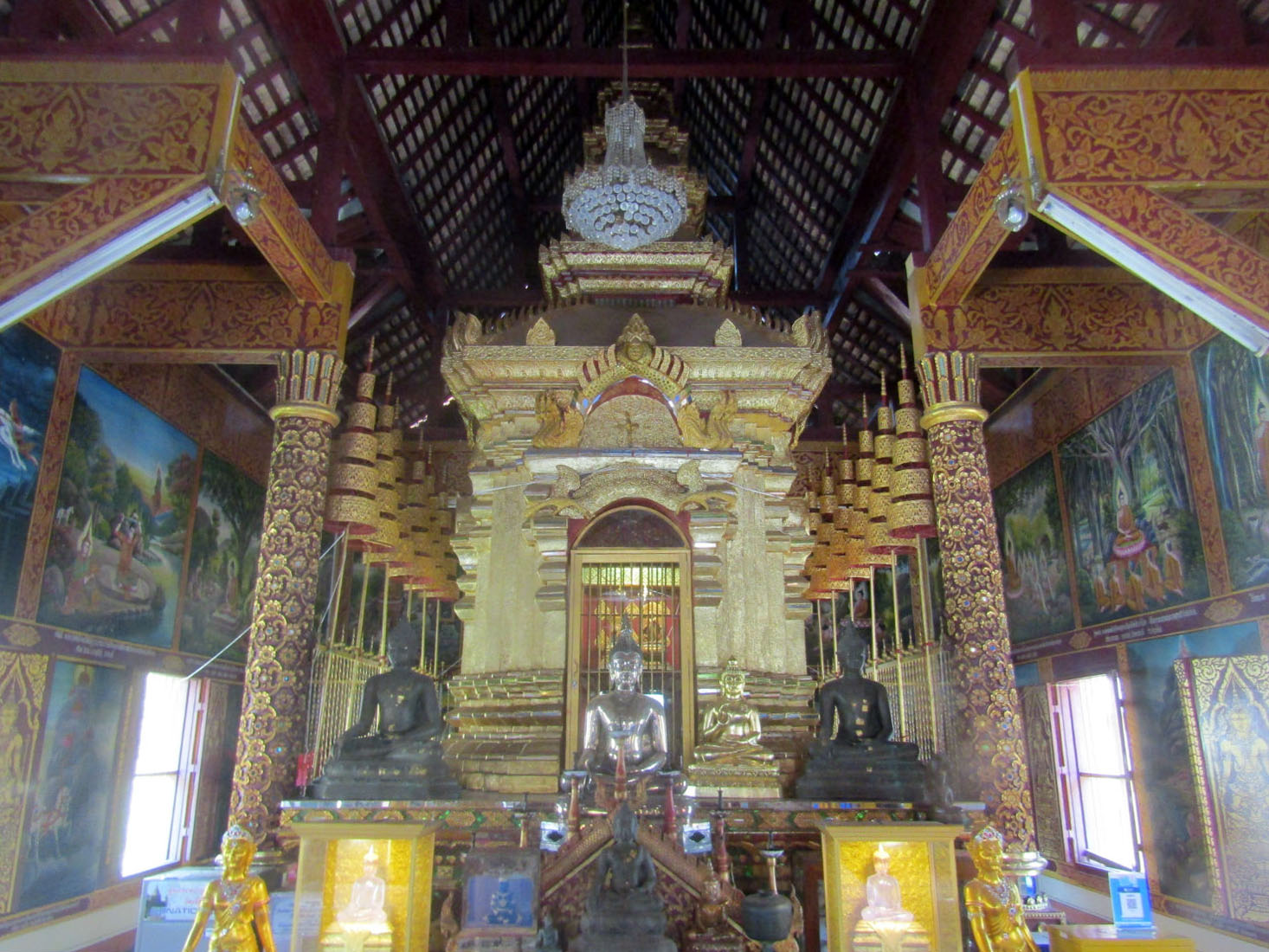
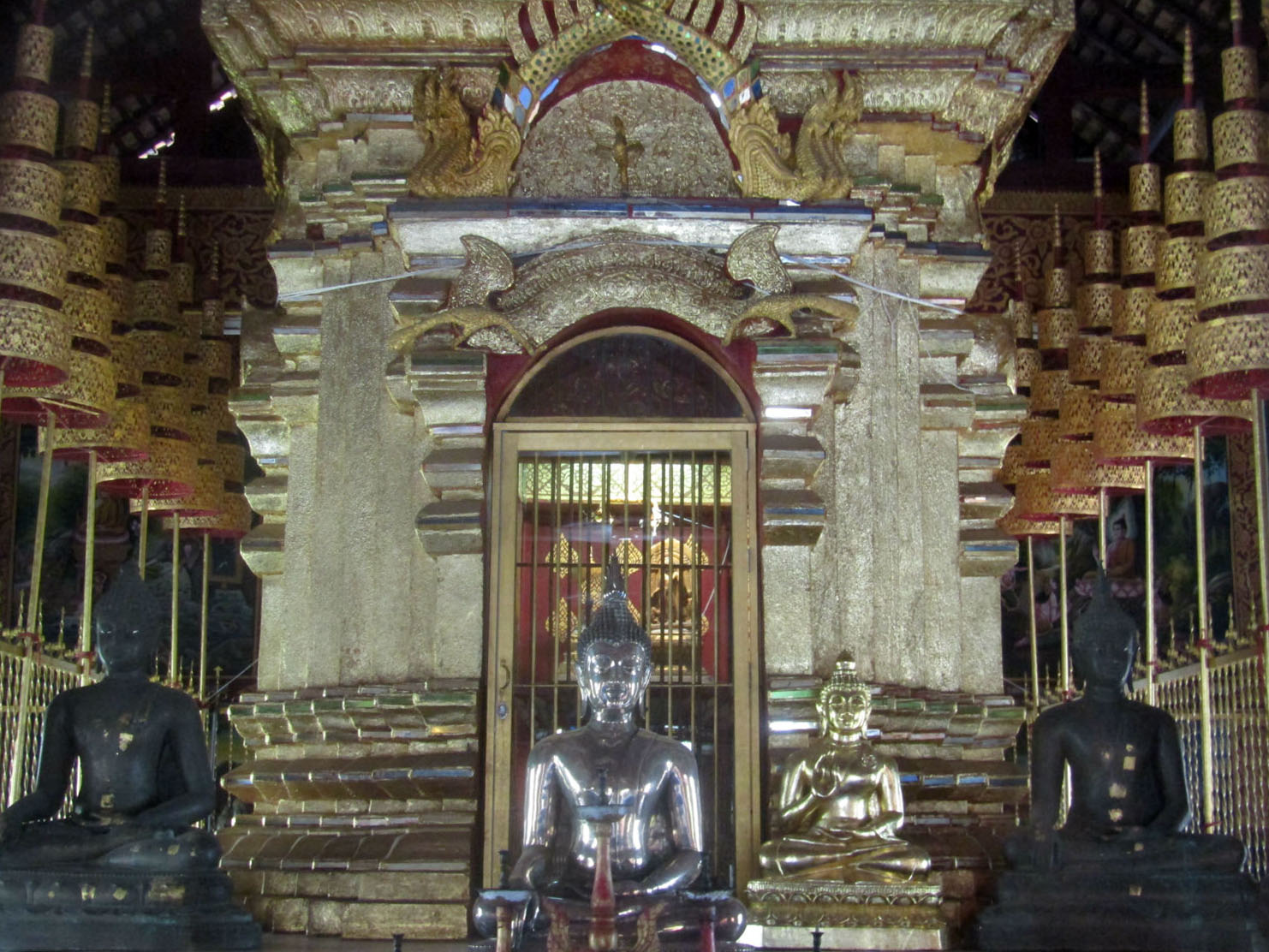 Wat Chiang Man, Chiang Mai
Wat Chiang Man, Chiang Mai
Three Kings Monument……..
Considering we’re covered the most holy sites in the old city, it’s time to take a look outside the city walls but first it’s a quick stop to take photographs of the Three Kings Monument. The three Kings that are represented are King Mengrai, the founder of Chiang Mai; King Ramkamhaeng of Sukothai; and King Ngam Muang of Payao. According to legend, the three Kings worked together to lay out the city of Chiang Mai. The sculpture has become something of an iconic image representing Chiang Mai.
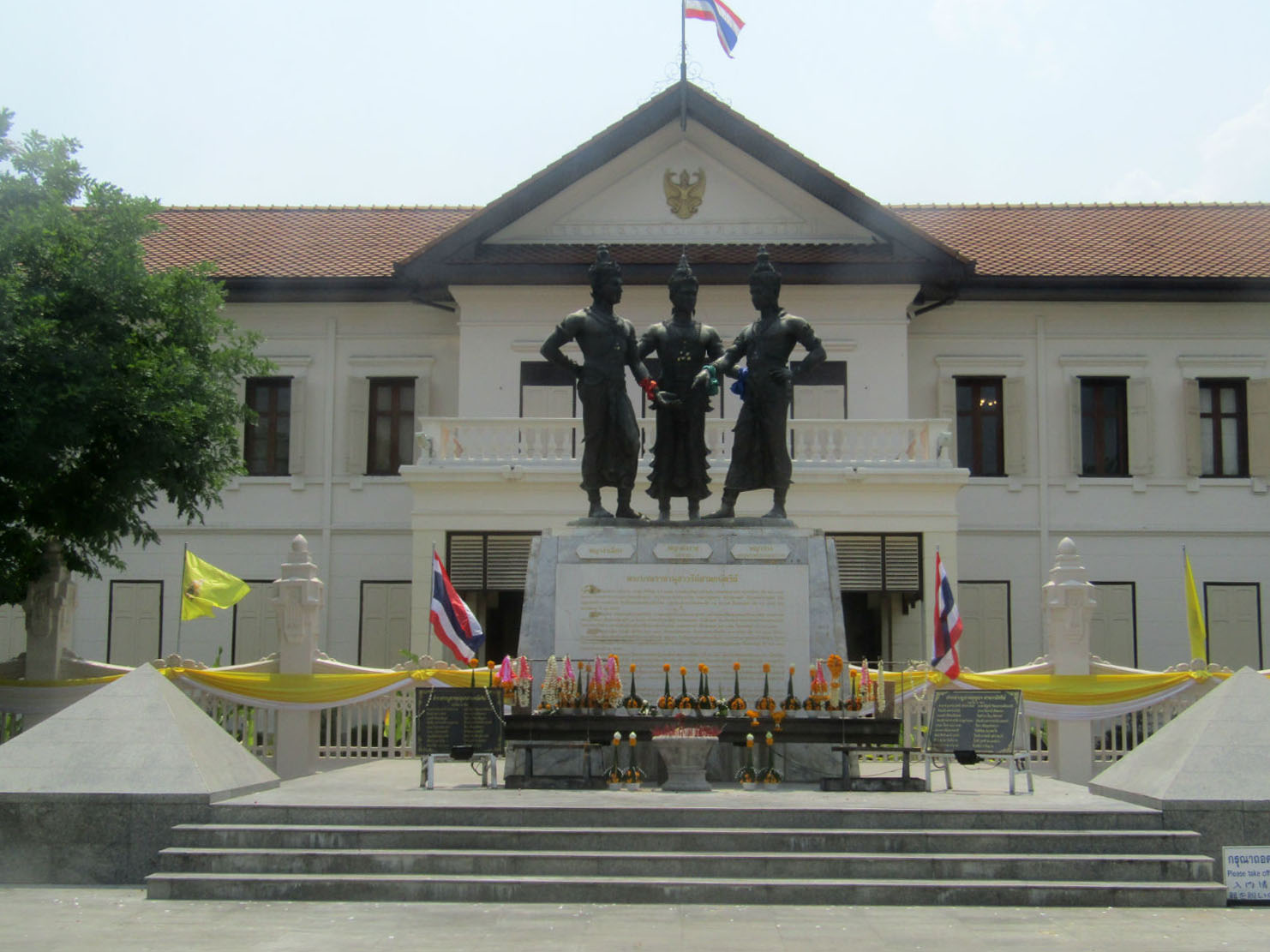
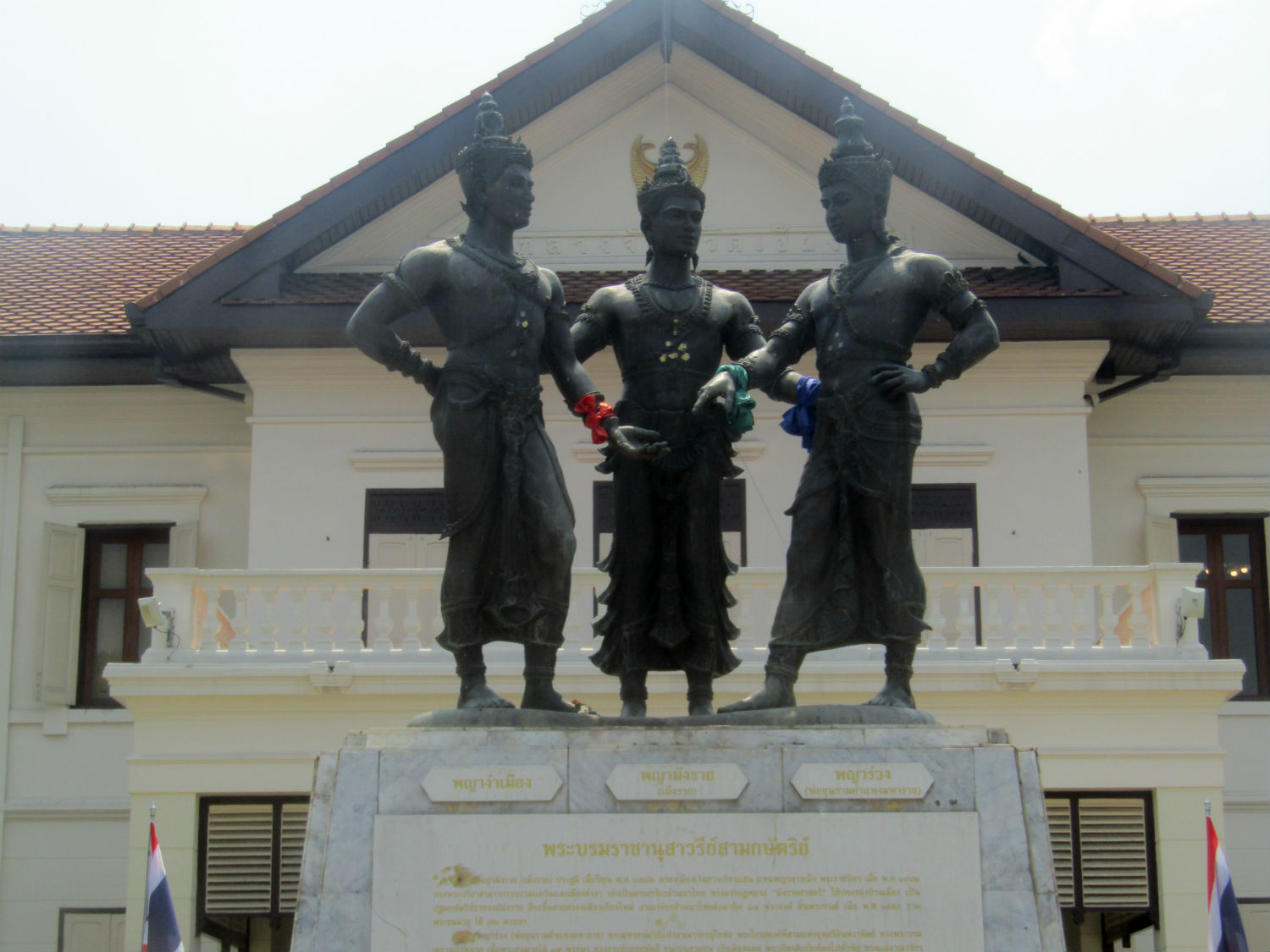
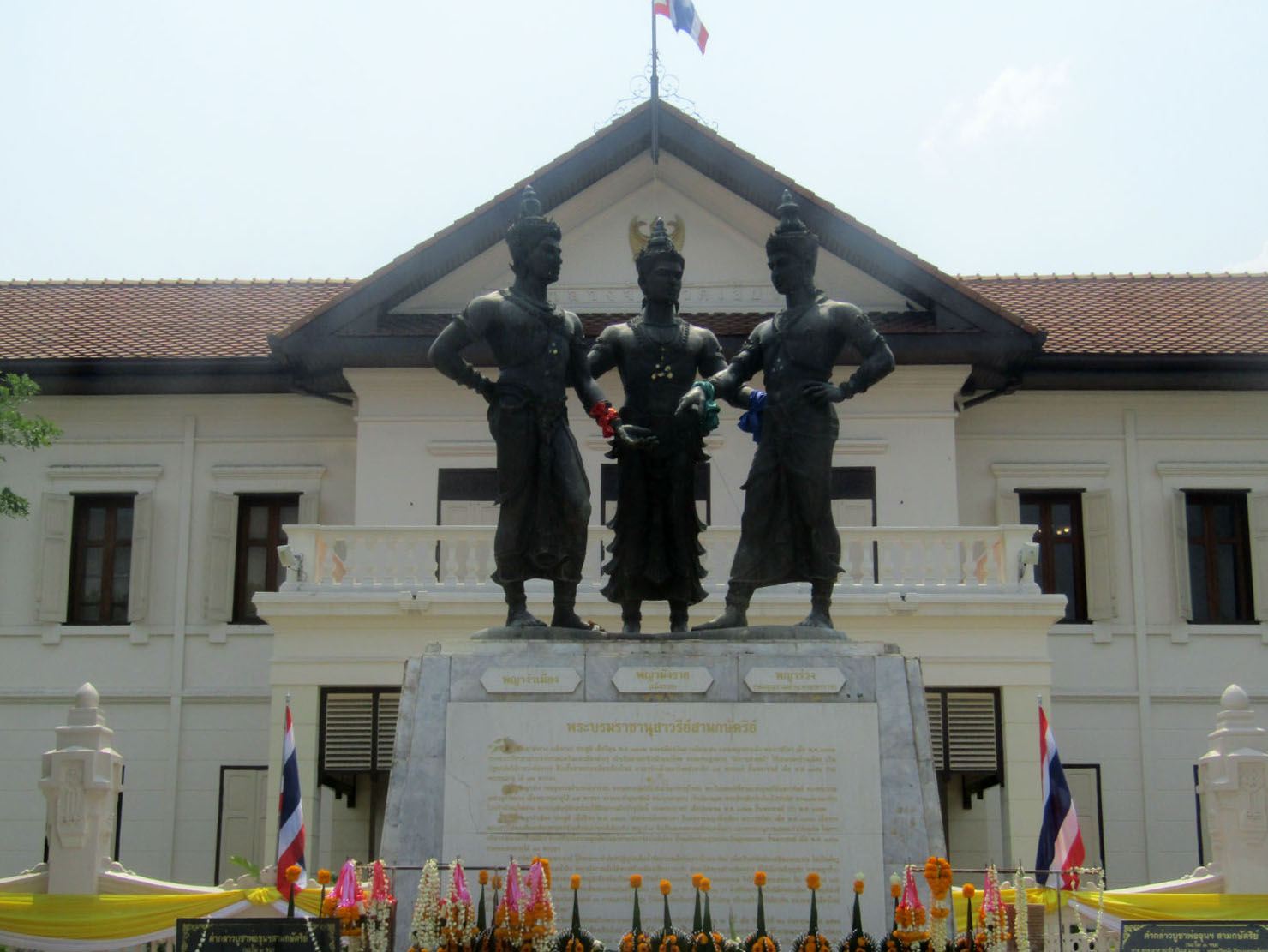 Three Kings Monument, Chiang Mai
Three Kings Monument, Chiang Mai
Wat Suan Dok……..
It’s time to exit the old city. Heading west we locate Wat Suan Dok. Wat Suan Dok (flower garden temple), also known as Wat Buppharam is a Buddhist temple in Chiang Mai. It is a Royal Temple of the Third Class. The temple is on Suthep Road, approximately one kilometre west of Suan Dok gate at the west side of the moat.
Wat Suan Dok was founded by King Kue Na of Lanna for the monk Sumana Thera in the year 1370. The temple was built in the centre of Wiang Suan Dok, a walled settlement of the Lawa people older than Chiang Mai itself. The outlines of the fortifications can clearly be traced on satellite images, and remains of some of the earthen walls can still be seen north of Suthep road. King Kue Na's flower garden, which was located here, lent the temple its original name: Wat Buppharam or Wat Suan Dok Mai for short.
According to legend, Maha Sumana Thera, a monk from the Sukhothai Kingdom, after having had a vision discovered a relic of the Buddha which, also according to the same vision, was to be housed in Chiang Mai. Sumana Thera stayed two rainy seasons at Wat Phra Yuen just outside Lamphun at the invitation of King Kue Na while the latter had Wat Buppharam Dok Mai built. When the moment arrived for the relic to be housed in the newly built temple, it miraculously duplicated itself. One of the relics was housed, as intended, in a shrine inside Wat Buppharam Dok Mai, while the other relic was placed on the back of a white elephant which then climbed up Doi Suthep, the mountain directly west of Chiang Mai, where it trumpeted three times and died. Wat Phrathat Doi Suthep was built on that spot to house the second relic.
The main features of Wat Suan Dok are:-
The large 48 meter high bell shaped chedi—built in a Sri Lankan style
The large sala kan prian is directly east of the main chedi. It was built in 1932 by the famous monk Phra Krubra Srivichai
The recently renovated ubosot contains a 4.70 m (15.4 ft) high bronze Buddha statue in the Bhumisparsha-Mudra posture, which was cast in 1504 CE during the rule of King Mueang Kaeo
A grouping of white washed mausoleums, which house the cremation ashes of members of the royal family of Chiang Mai
Wat Suan Dok was founded by King Kue Na of Lanna for the monk Sumana Thera in the year 1370. The temple was built in the centre of Wiang Suan Dok, a walled settlement of the Lawa people older than Chiang Mai itself. The outlines of the fortifications can clearly be traced on satellite images, and remains of some of the earthen walls can still be seen north of Suthep road. King Kue Na's flower garden, which was located here, lent the temple its original name: Wat Buppharam or Wat Suan Dok Mai for short.
According to legend, Maha Sumana Thera, a monk from the Sukhothai Kingdom, after having had a vision discovered a relic of the Buddha which, also according to the same vision, was to be housed in Chiang Mai. Sumana Thera stayed two rainy seasons at Wat Phra Yuen just outside Lamphun at the invitation of King Kue Na while the latter had Wat Buppharam Dok Mai built. When the moment arrived for the relic to be housed in the newly built temple, it miraculously duplicated itself. One of the relics was housed, as intended, in a shrine inside Wat Buppharam Dok Mai, while the other relic was placed on the back of a white elephant which then climbed up Doi Suthep, the mountain directly west of Chiang Mai, where it trumpeted three times and died. Wat Phrathat Doi Suthep was built on that spot to house the second relic.
The main features of Wat Suan Dok are:-
The large 48 meter high bell shaped chedi—built in a Sri Lankan style
The large sala kan prian is directly east of the main chedi. It was built in 1932 by the famous monk Phra Krubra Srivichai
The recently renovated ubosot contains a 4.70 m (15.4 ft) high bronze Buddha statue in the Bhumisparsha-Mudra posture, which was cast in 1504 CE during the rule of King Mueang Kaeo
A grouping of white washed mausoleums, which house the cremation ashes of members of the royal family of Chiang Mai
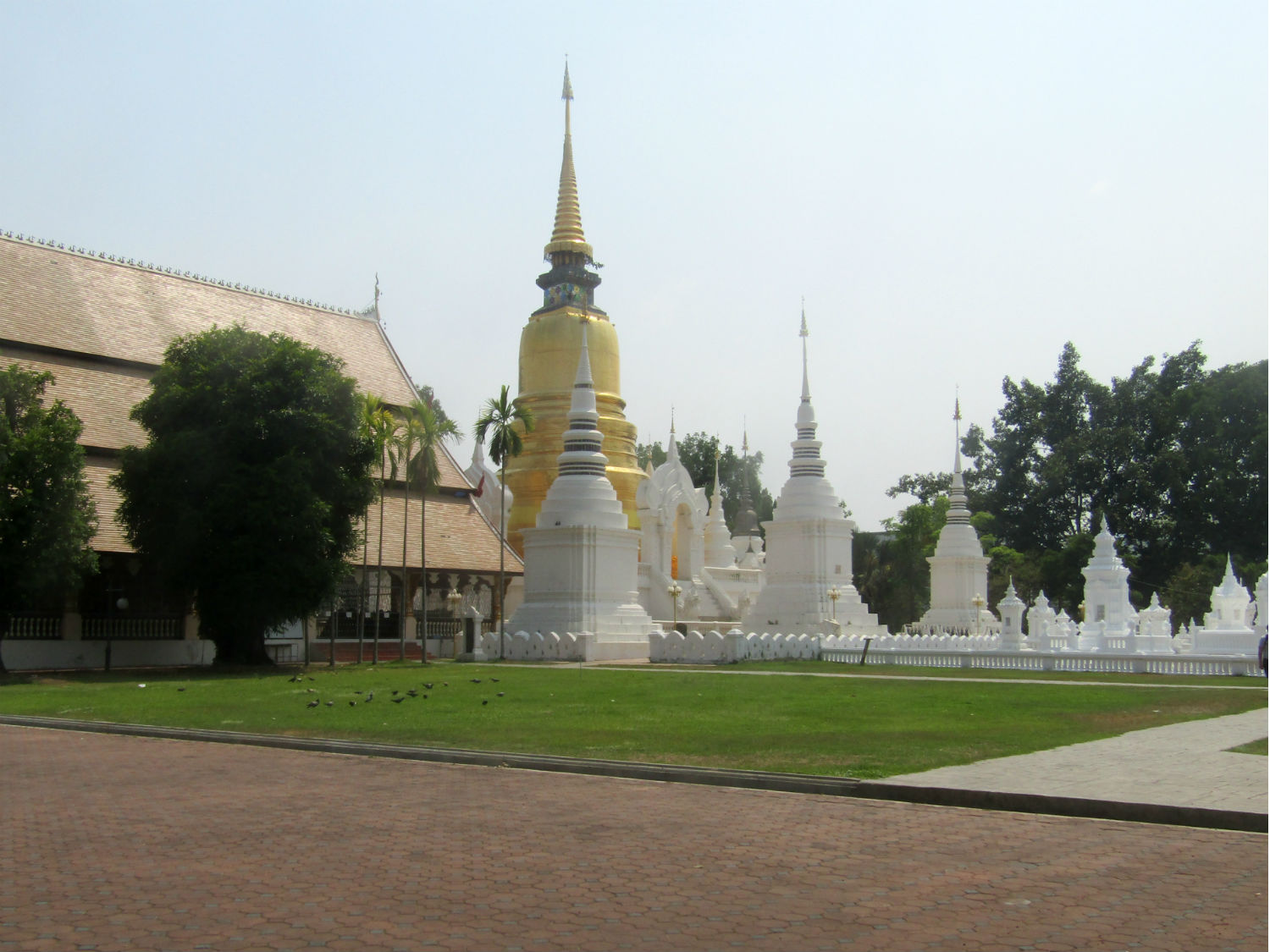

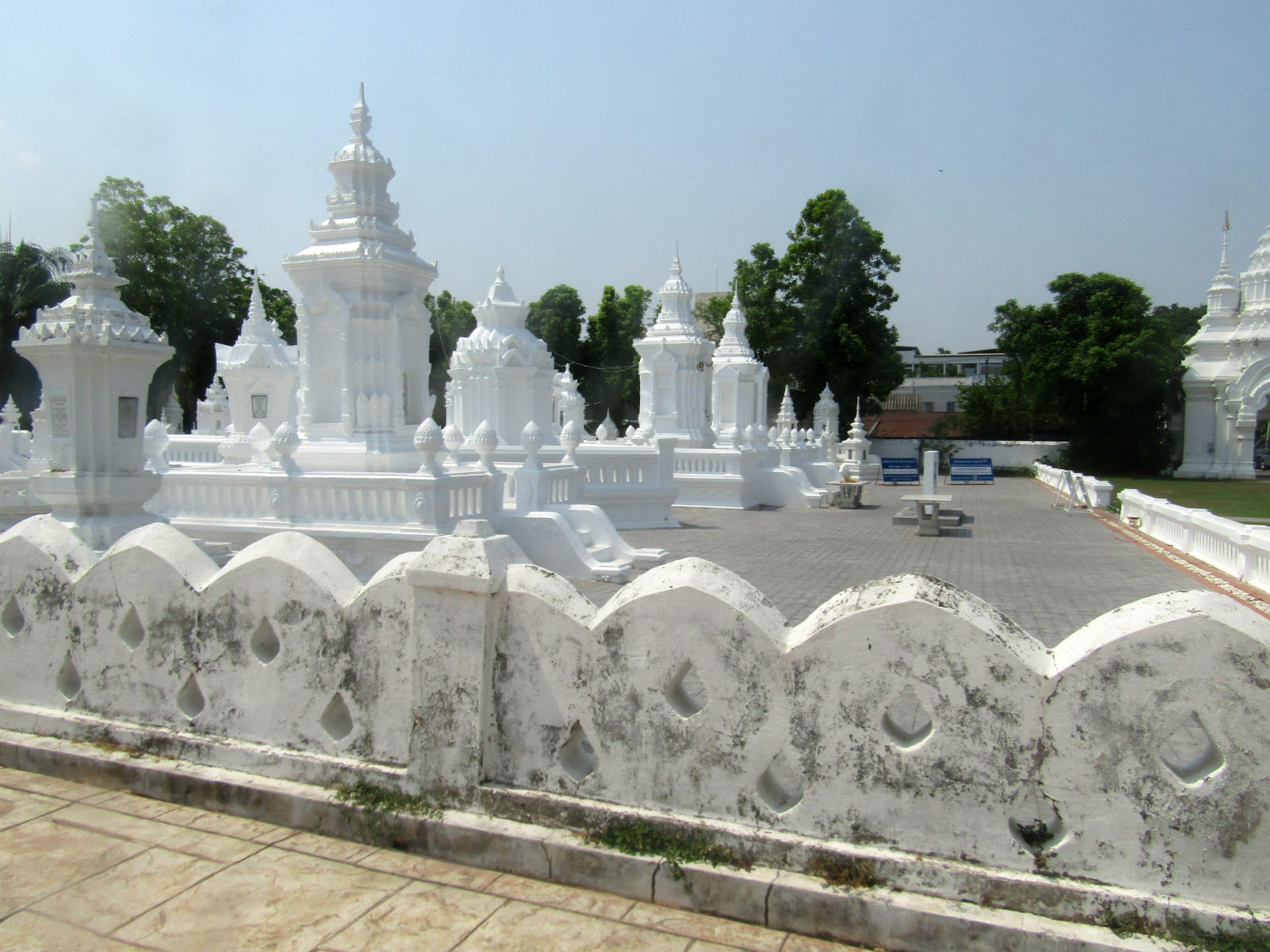
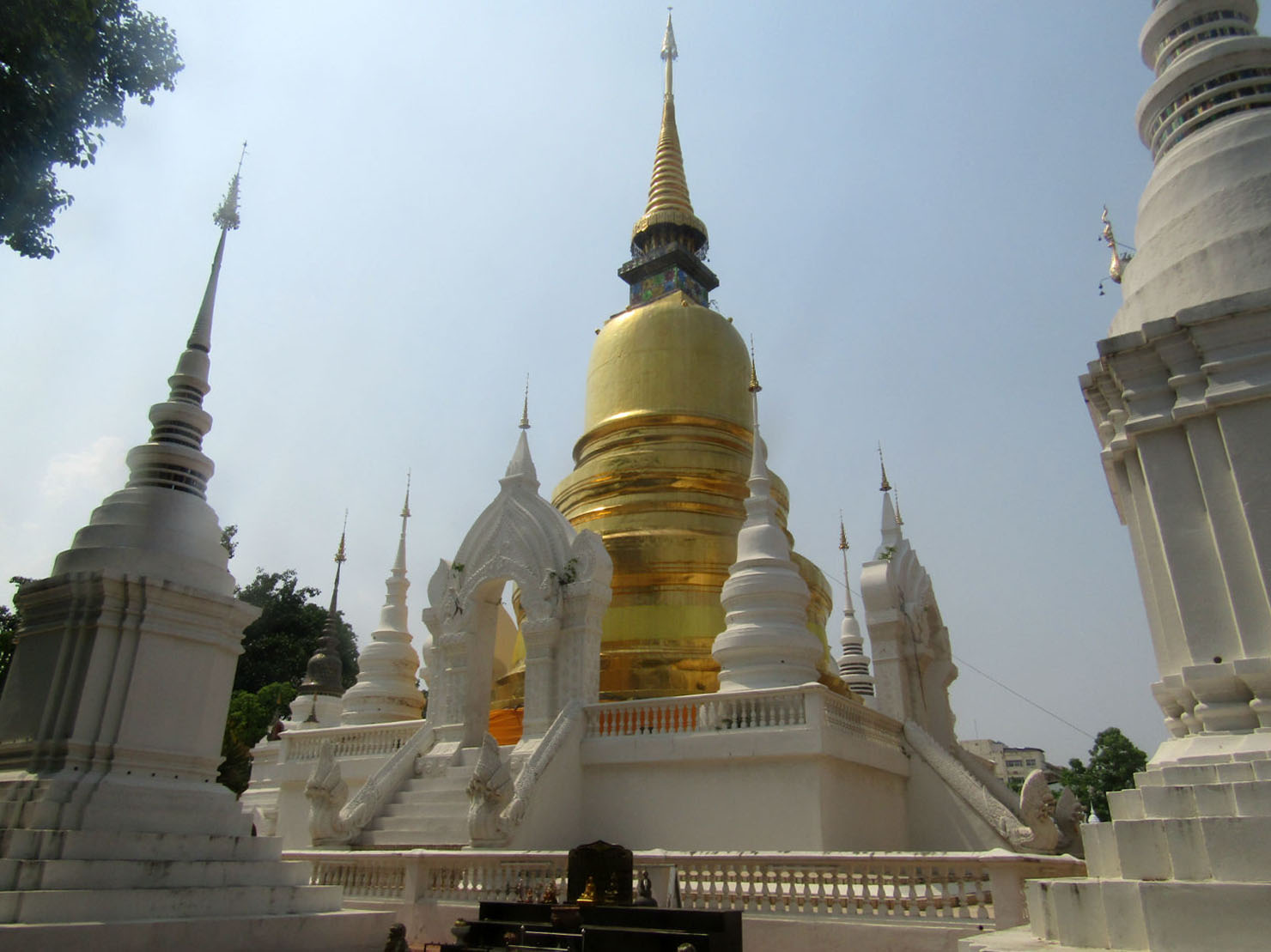
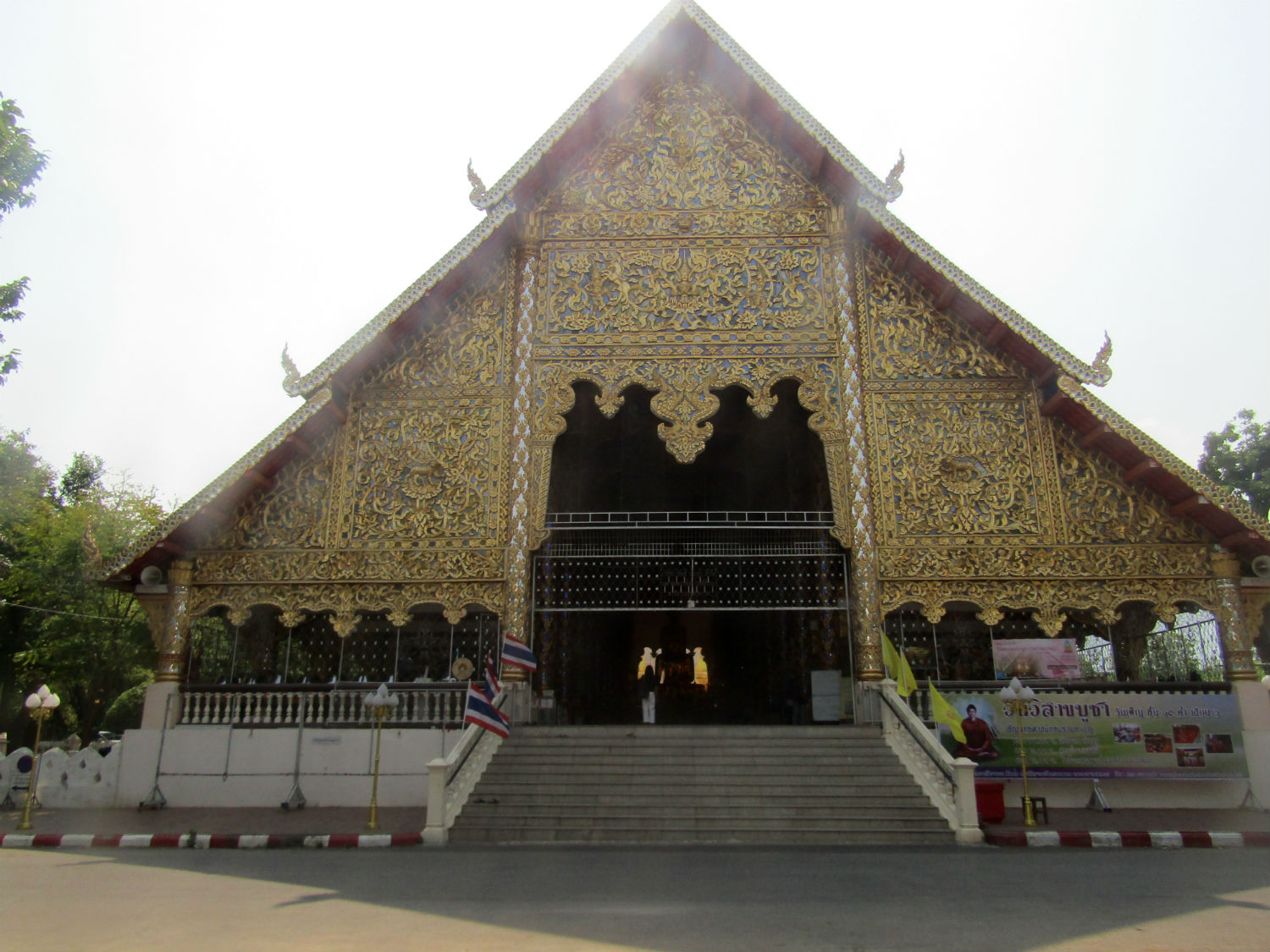
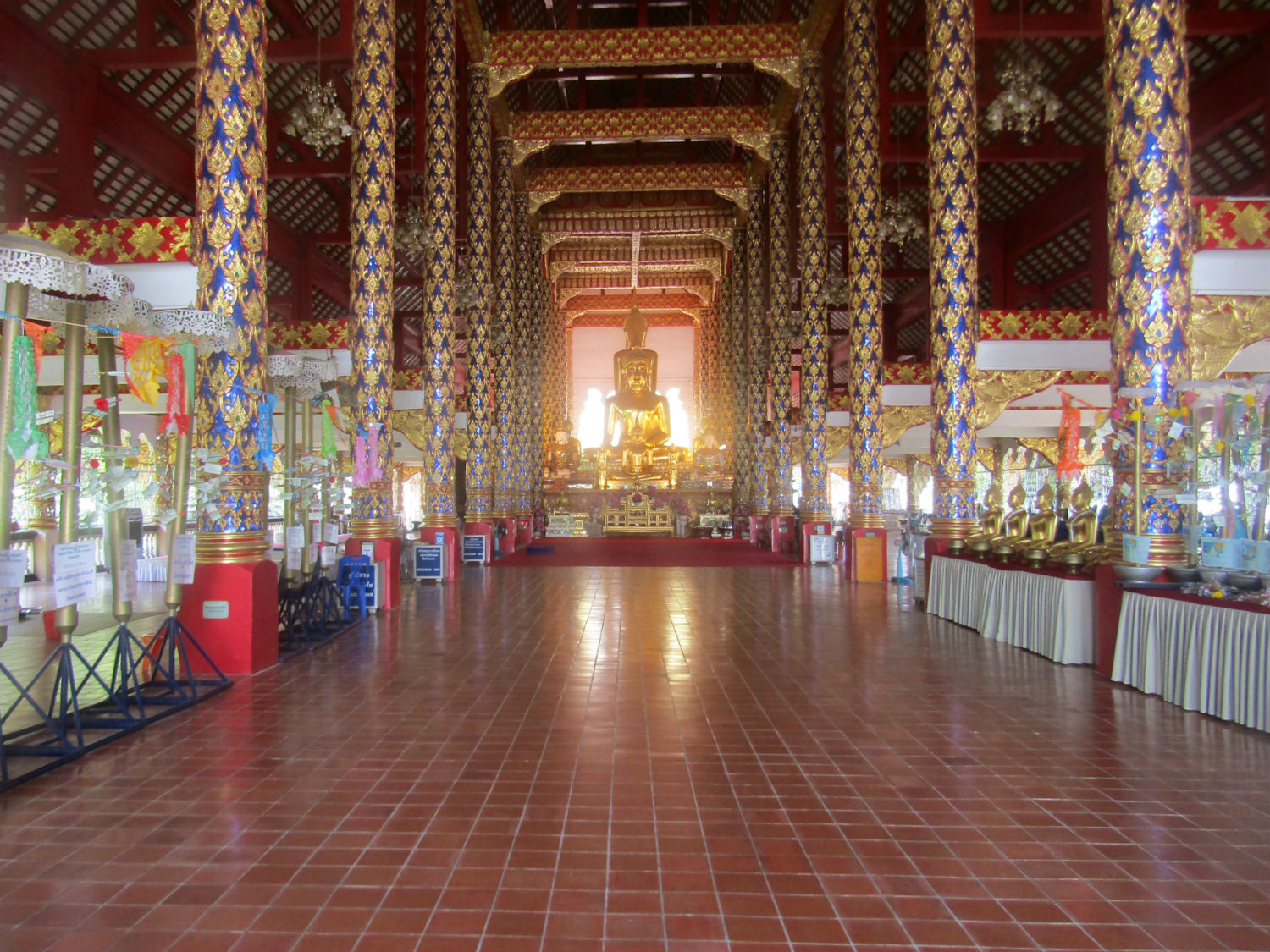 Wat Suan Dok and the Old Lanna Royal Family Burial Site, Chiang Mai
Wat Suan Dok and the Old Lanna Royal Family Burial Site, Chiang Mai
Retreat……..
There’s no question that today there’s been no respite from the baking heat and little protection from the sun. The temples in the city are all close together reducing the amount of time in an air-conditioned vehicle and of course to get the best shots you need the sun at your back. Just as I consider returning to B2 for a break, the battery in my camera is practically depleted during my final shots at Wat Suan Dok so that settles the issue. Returning along the western city wall I can stop and take a few photos of Ku Hueang Fort but retreating into B2 is all I’m really interested in right now. Around 3pm I’m back in the land of bliss figuring that we will be able to pop out again later but that later, becomes nearly 5pm. Still there’s another temple well within range.
Wat Sri Suphan…….. Figuring that I’ve now seen the best of the temples in or near the old city, I’m quite surprised to find this beautiful temple, Wat Sri Suphan, also known as ‘the Silver Temple’. The temple consists of a viharn, ubosot and chedi. The beautifully ornate viharn is in traditional Lanna style but at the ubosot there is an entry fee of 50 baht but worth every penny to view the bot (ubosot or ordination hall) the only all silver temple building in the world. It is worth mentioning that the bot is the most sacred building in a Buddhist temple, not even novice monks are allowed to enter before they are ordained. For the public, entry is permitted but in Lanna tradition, women of any nationality are not allowed inside including Thai women but they are not required to pay the fee.
A more detailed description of the ‘Silver Temple’ refers to the impressive hand crafted silver decoration. The temple is completely covered in silver, from the walls to the roof to the floor and display some detailed silver carvings of Buddhist legends. Even the statues of Buddha are covered in silver. Wat Sri Suphan was originally built around 1500 to serve as the main temple for a silversmith village. While over the years parts of the temple were repaired with silver from the local village the process of completely covering the temple in silver only began in 2008. The inside of the temple is even more interesting with silver decoration, mirrors and bright colours mixed together. The area around Wat Sri Suphan has lots of small silver studios and you can see real artists at work within the grounds of the temple. You can also buy or commission works of silver from these artists. On Tuesday, Thursday and Saturday evenings the temple holds a monk chat where visitors can ask questions about Buddhism and meditate with the monks. The monk chats start from 17:30 till 19:00 and then until 21:00 there is a group talk and meditation for everyone. The monk chats are free but donations are welcomed.
Wat Sri Suphan…….. Figuring that I’ve now seen the best of the temples in or near the old city, I’m quite surprised to find this beautiful temple, Wat Sri Suphan, also known as ‘the Silver Temple’. The temple consists of a viharn, ubosot and chedi. The beautifully ornate viharn is in traditional Lanna style but at the ubosot there is an entry fee of 50 baht but worth every penny to view the bot (ubosot or ordination hall) the only all silver temple building in the world. It is worth mentioning that the bot is the most sacred building in a Buddhist temple, not even novice monks are allowed to enter before they are ordained. For the public, entry is permitted but in Lanna tradition, women of any nationality are not allowed inside including Thai women but they are not required to pay the fee.
A more detailed description of the ‘Silver Temple’ refers to the impressive hand crafted silver decoration. The temple is completely covered in silver, from the walls to the roof to the floor and display some detailed silver carvings of Buddhist legends. Even the statues of Buddha are covered in silver. Wat Sri Suphan was originally built around 1500 to serve as the main temple for a silversmith village. While over the years parts of the temple were repaired with silver from the local village the process of completely covering the temple in silver only began in 2008. The inside of the temple is even more interesting with silver decoration, mirrors and bright colours mixed together. The area around Wat Sri Suphan has lots of small silver studios and you can see real artists at work within the grounds of the temple. You can also buy or commission works of silver from these artists. On Tuesday, Thursday and Saturday evenings the temple holds a monk chat where visitors can ask questions about Buddhism and meditate with the monks. The monk chats start from 17:30 till 19:00 and then until 21:00 there is a group talk and meditation for everyone. The monk chats are free but donations are welcomed.
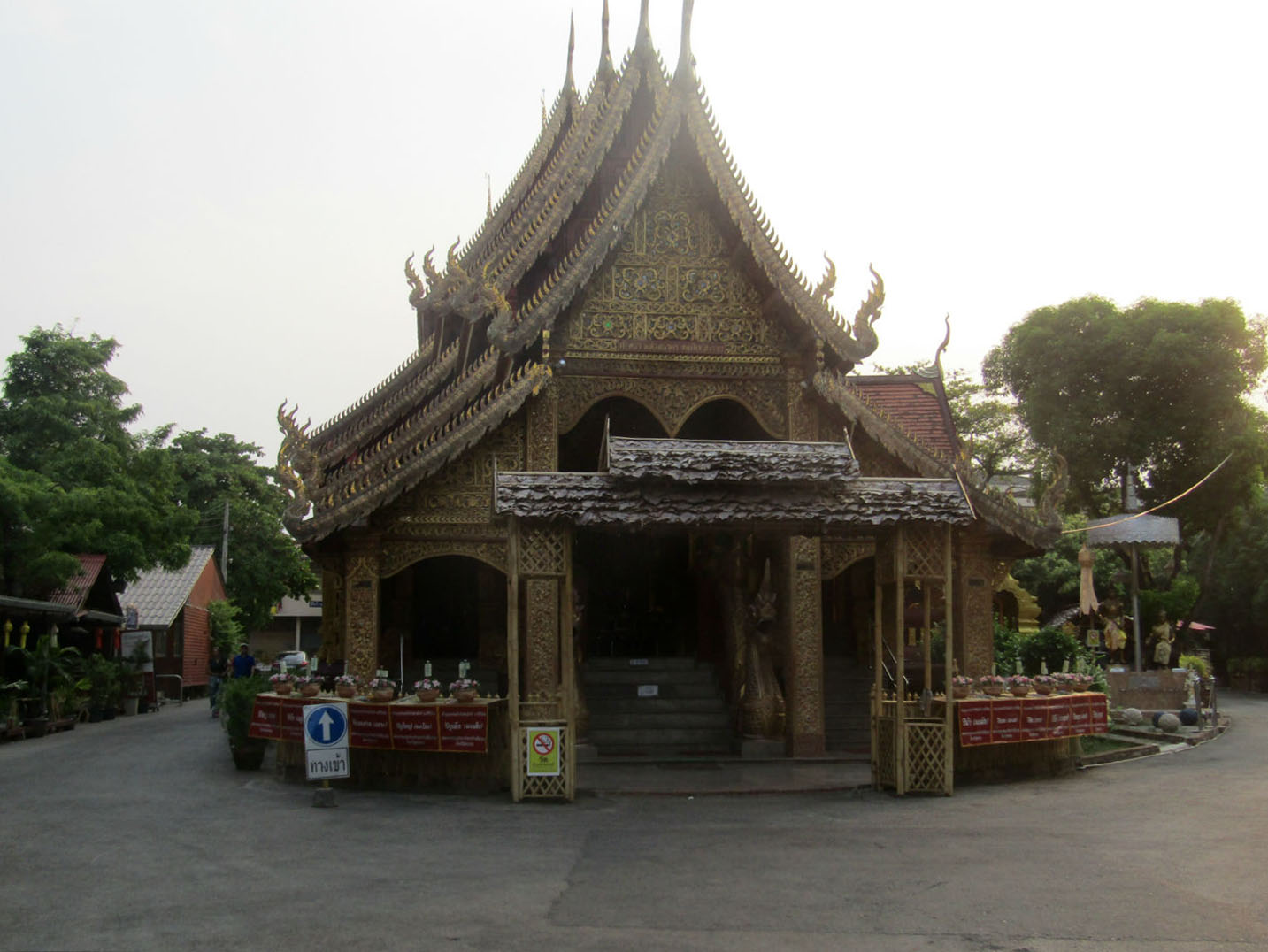
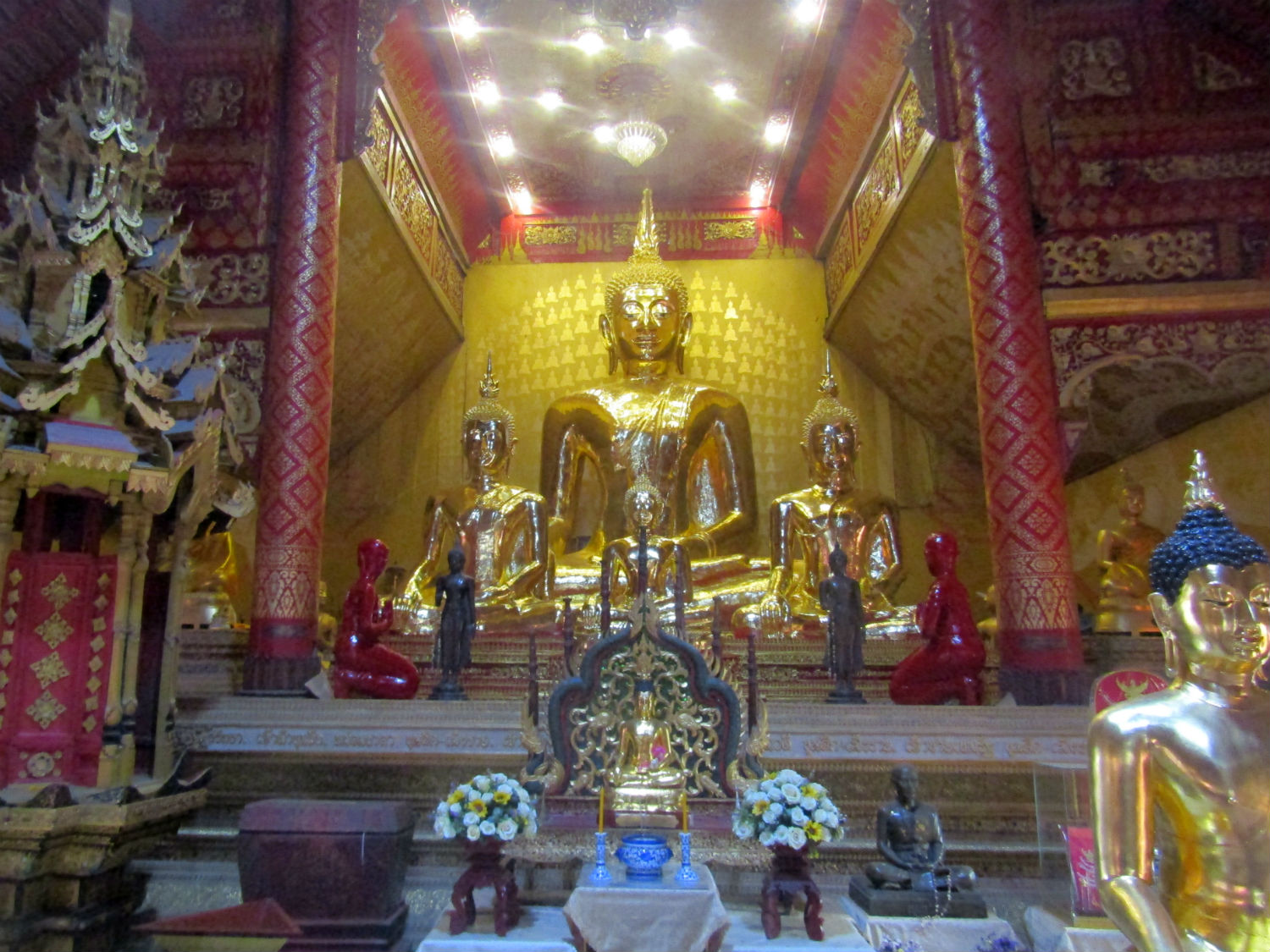
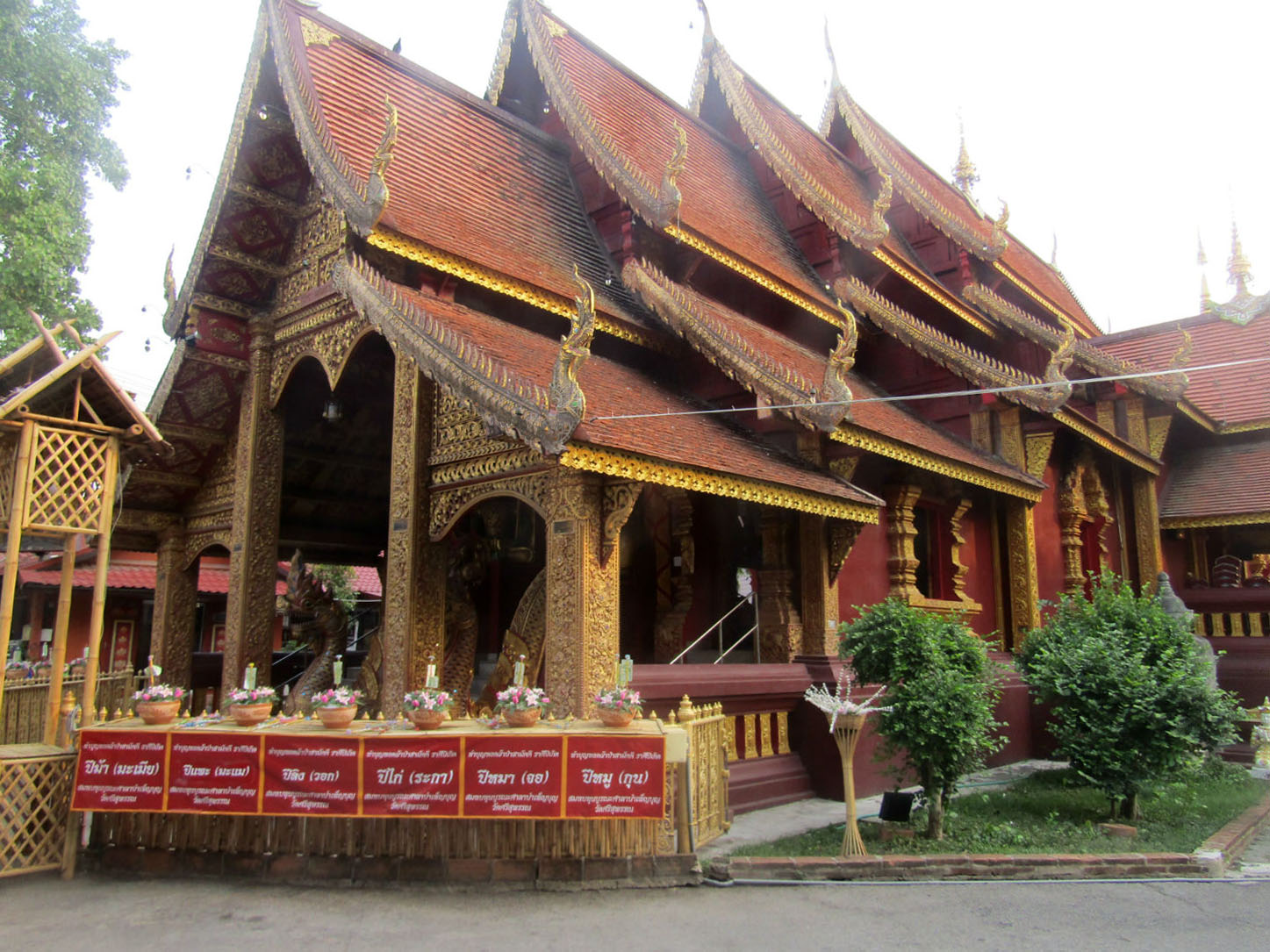
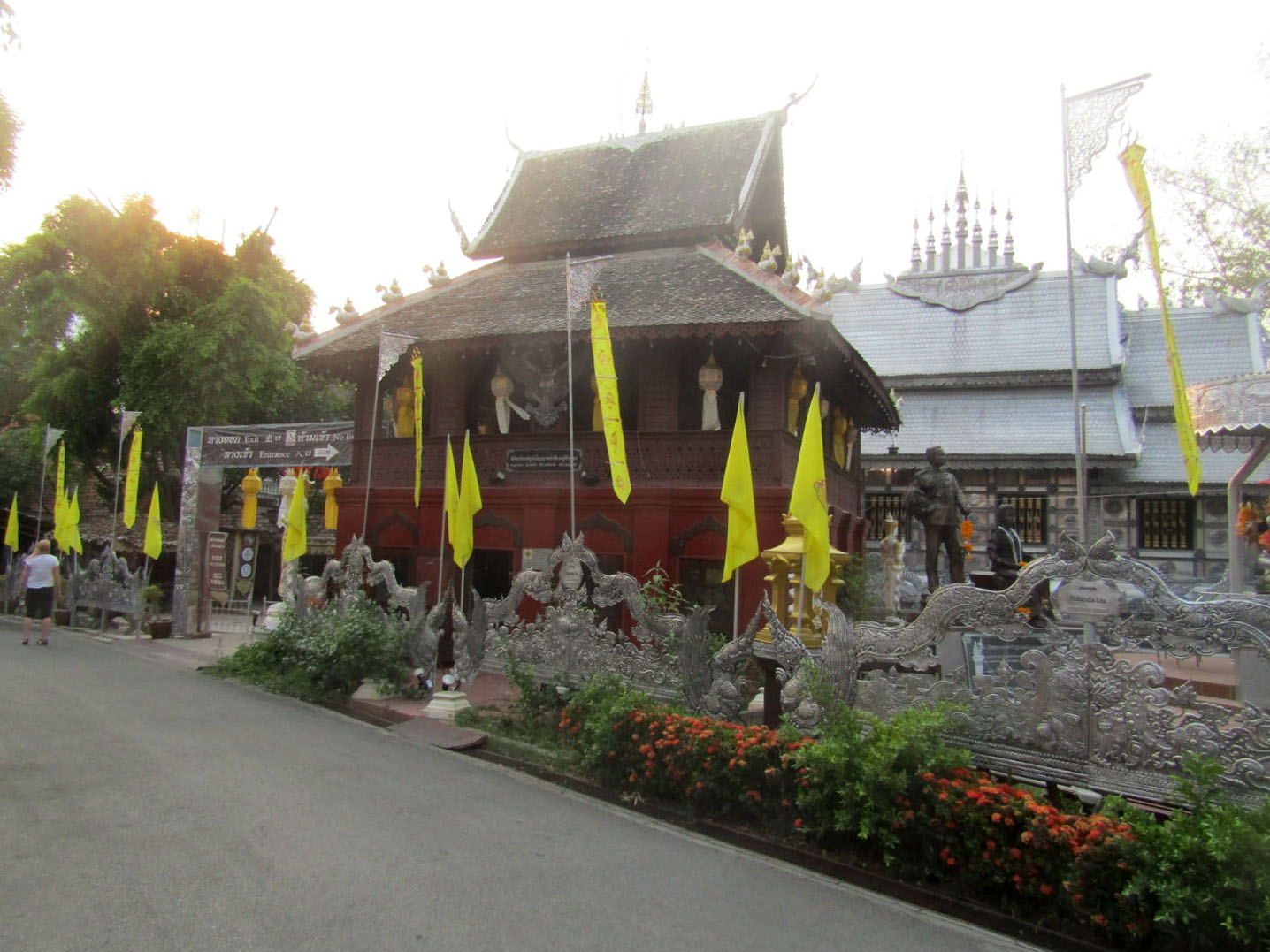

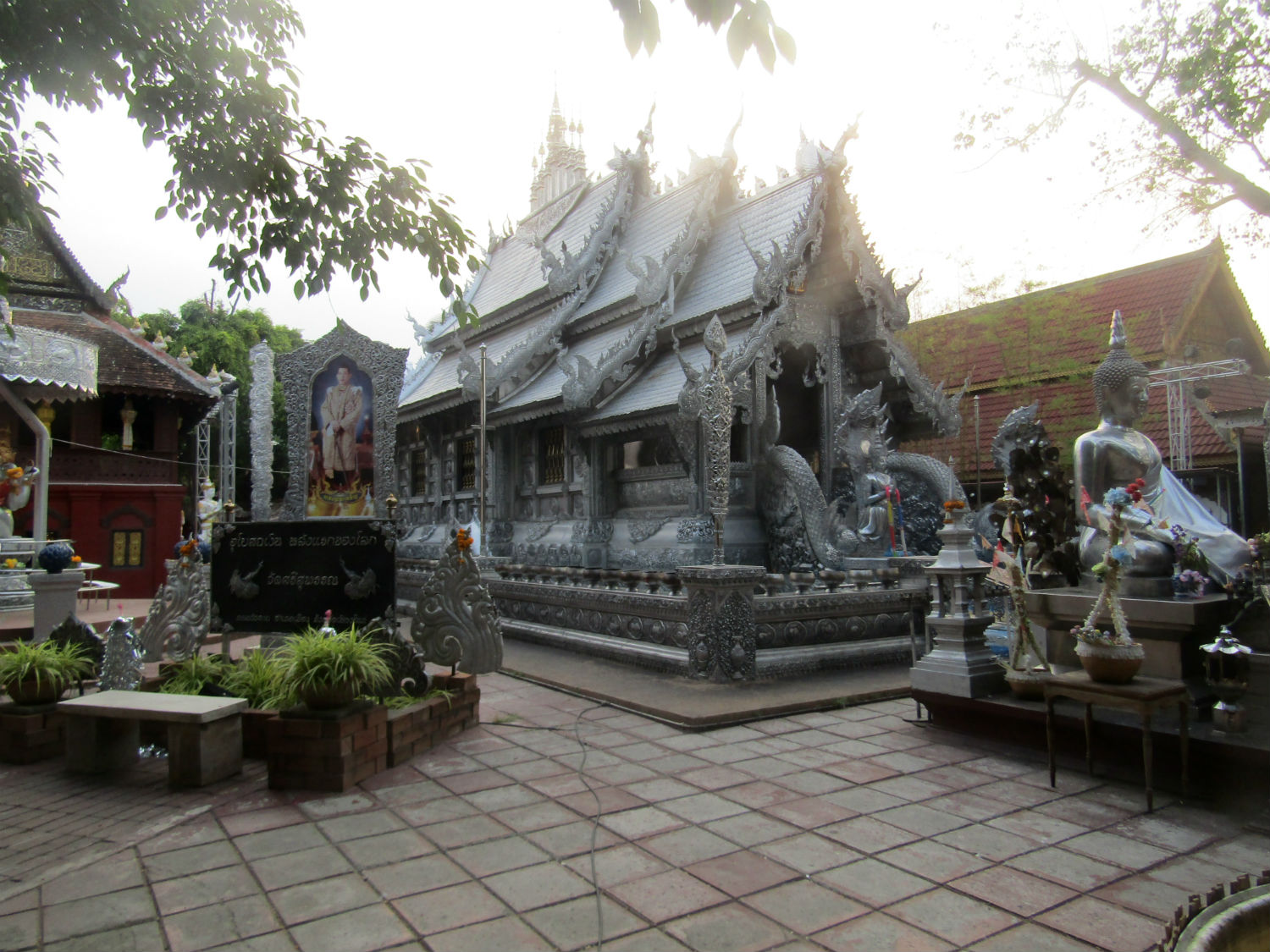
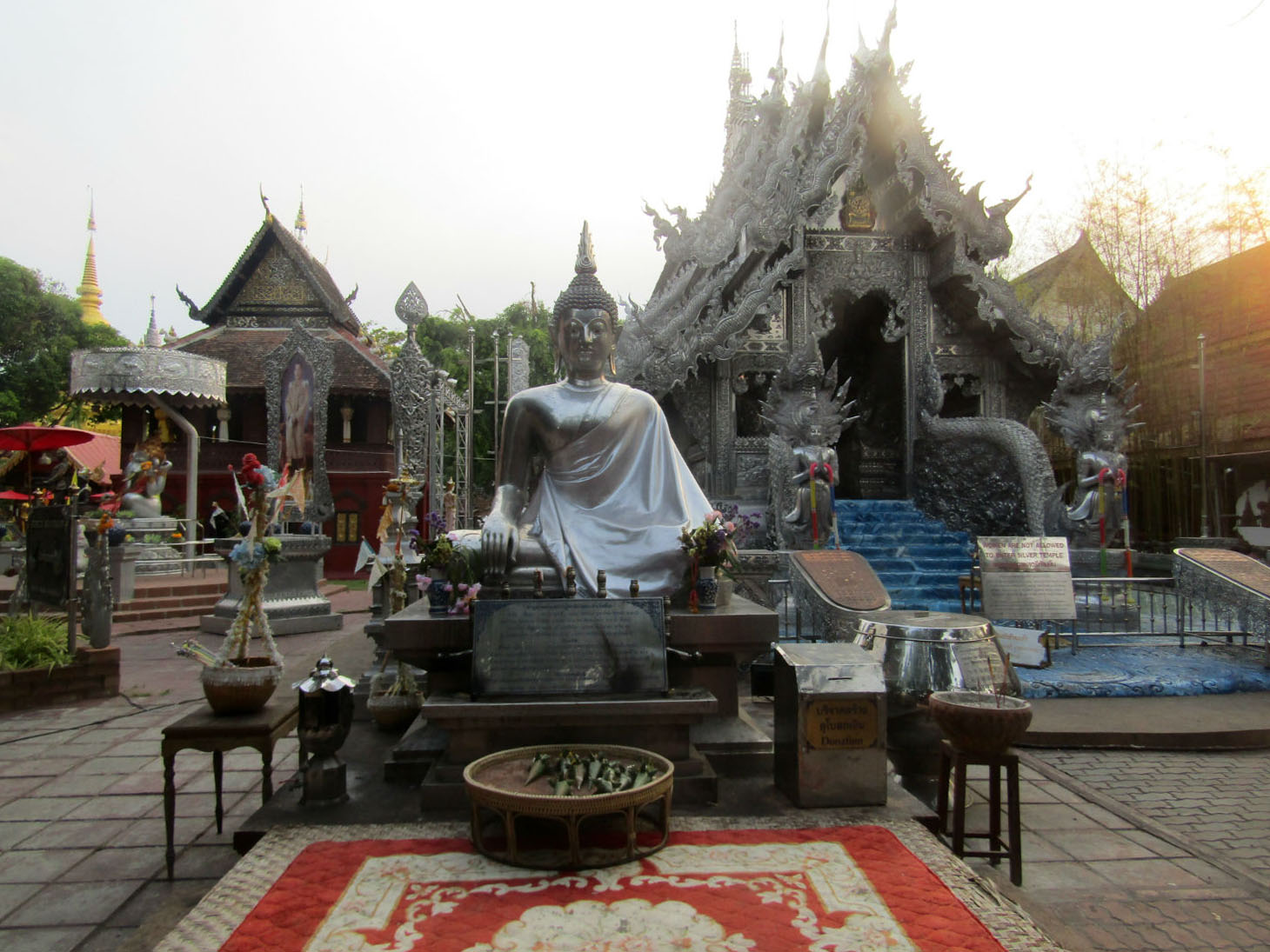
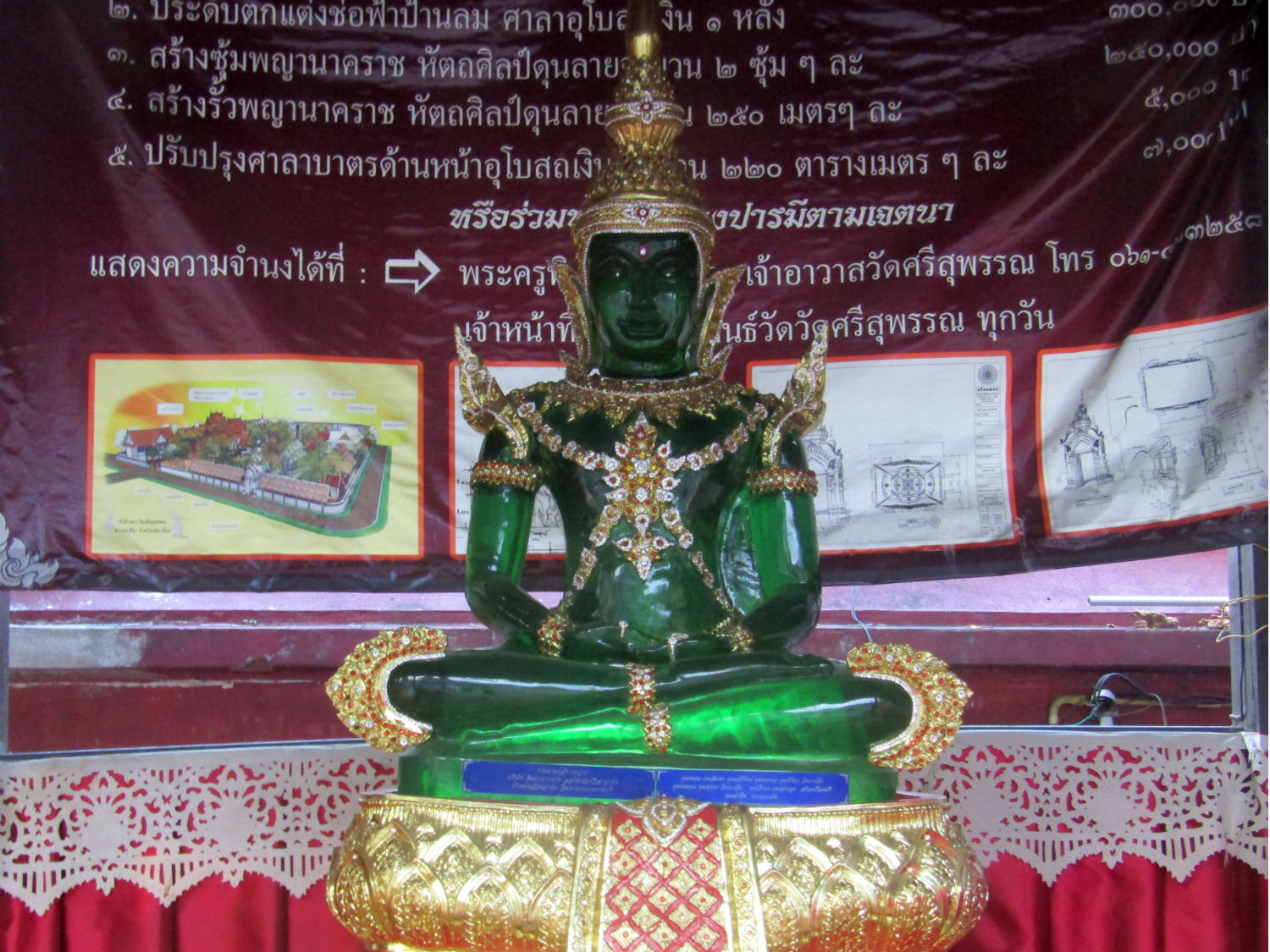

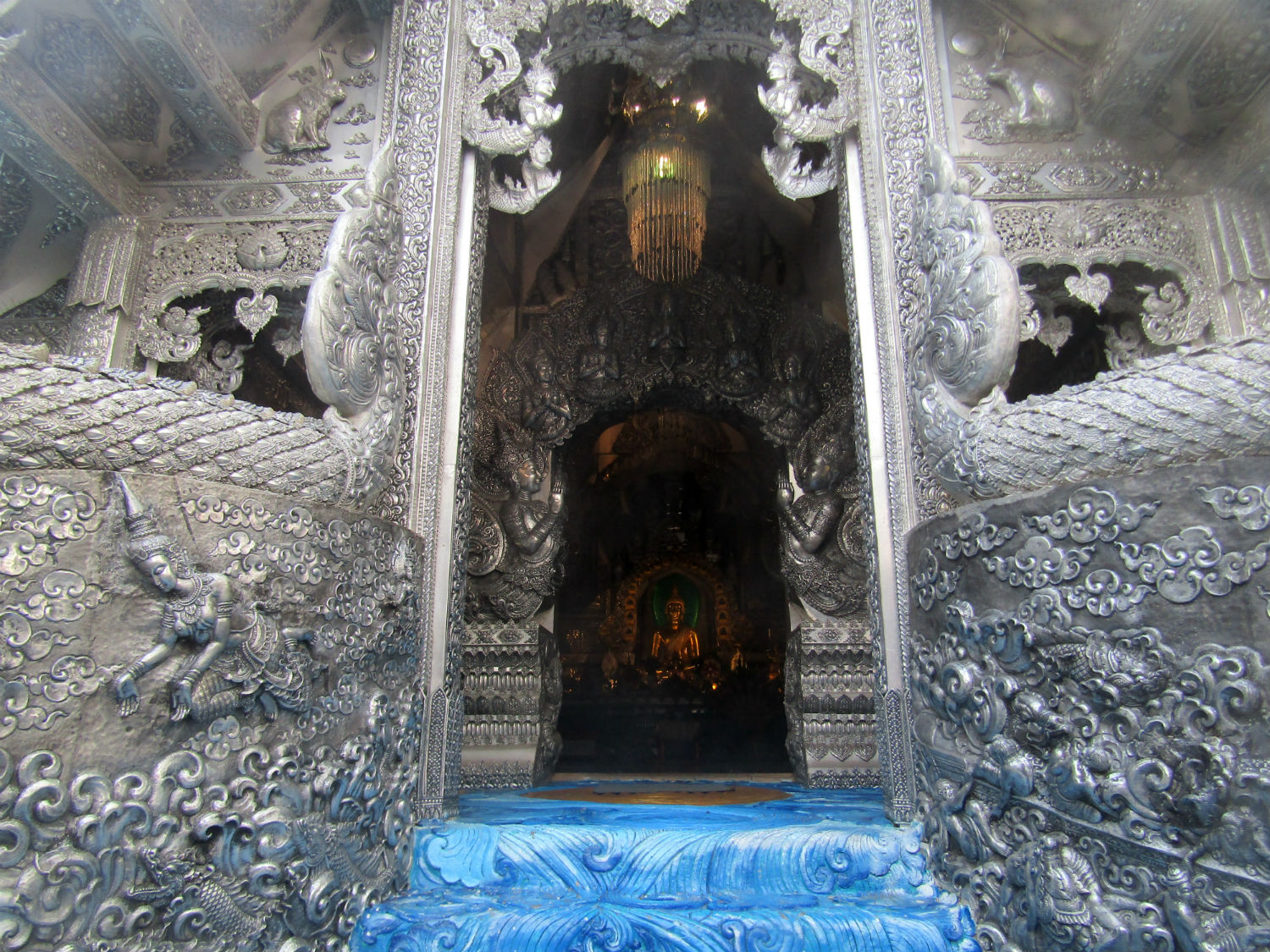
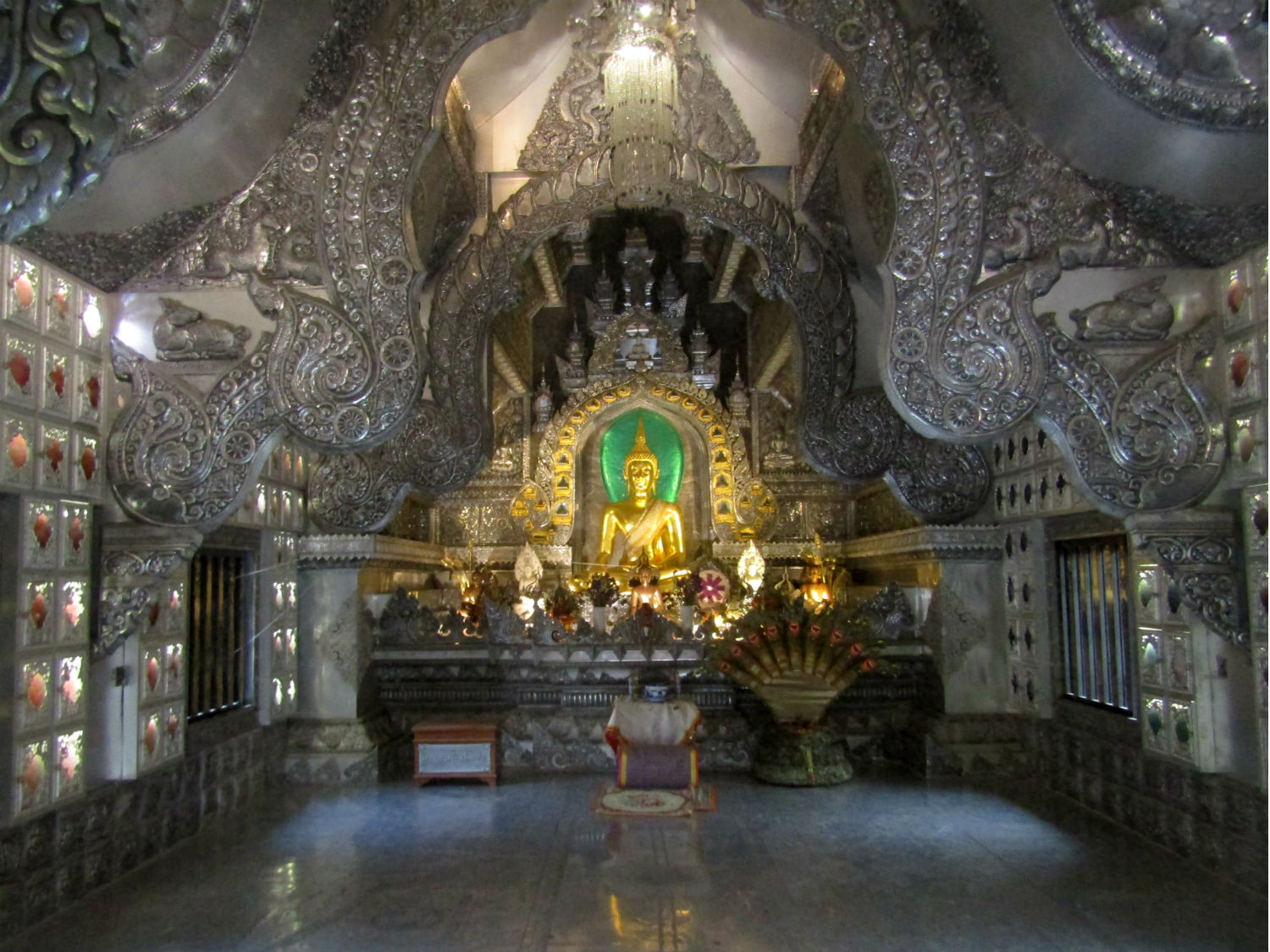
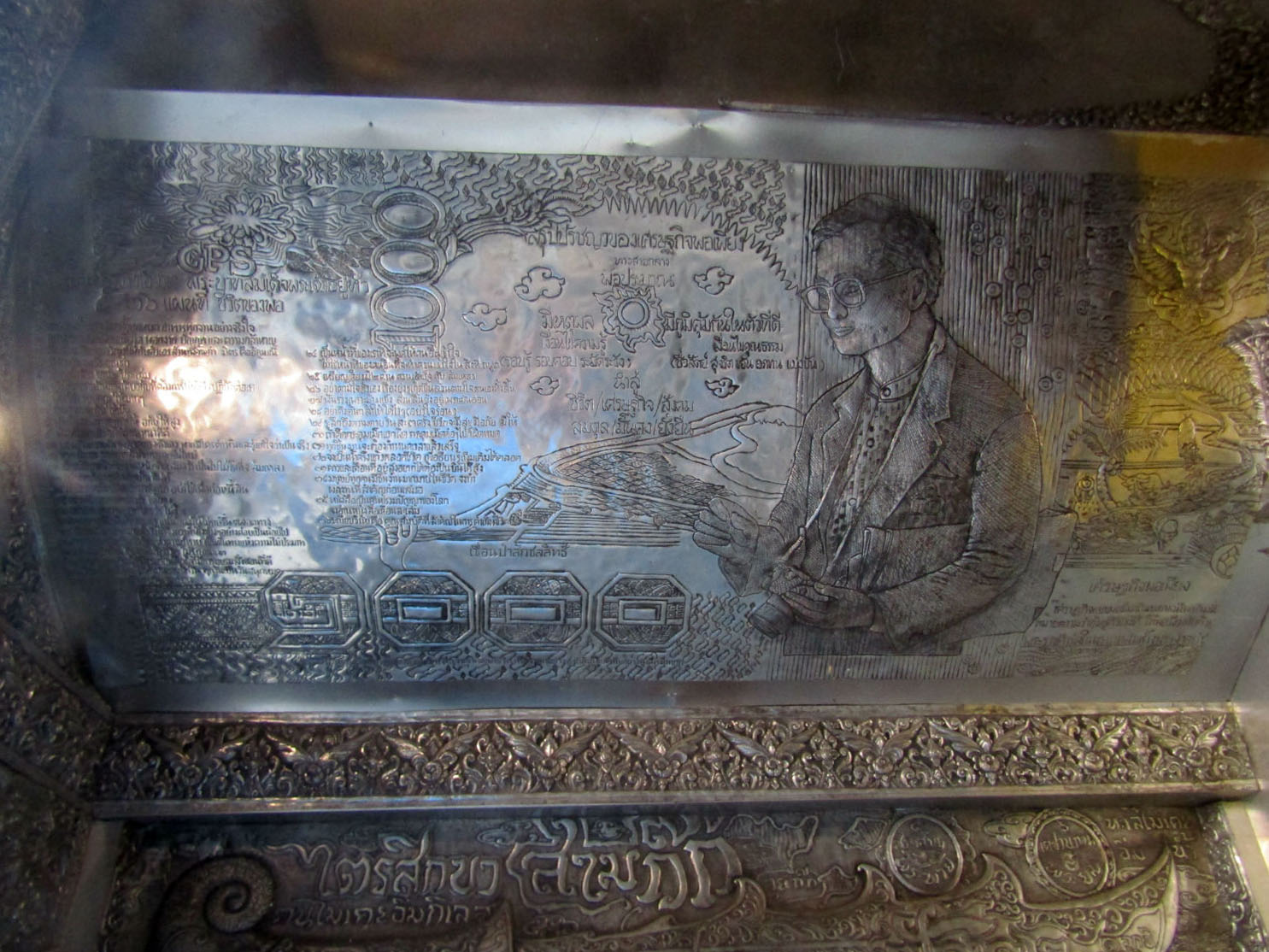
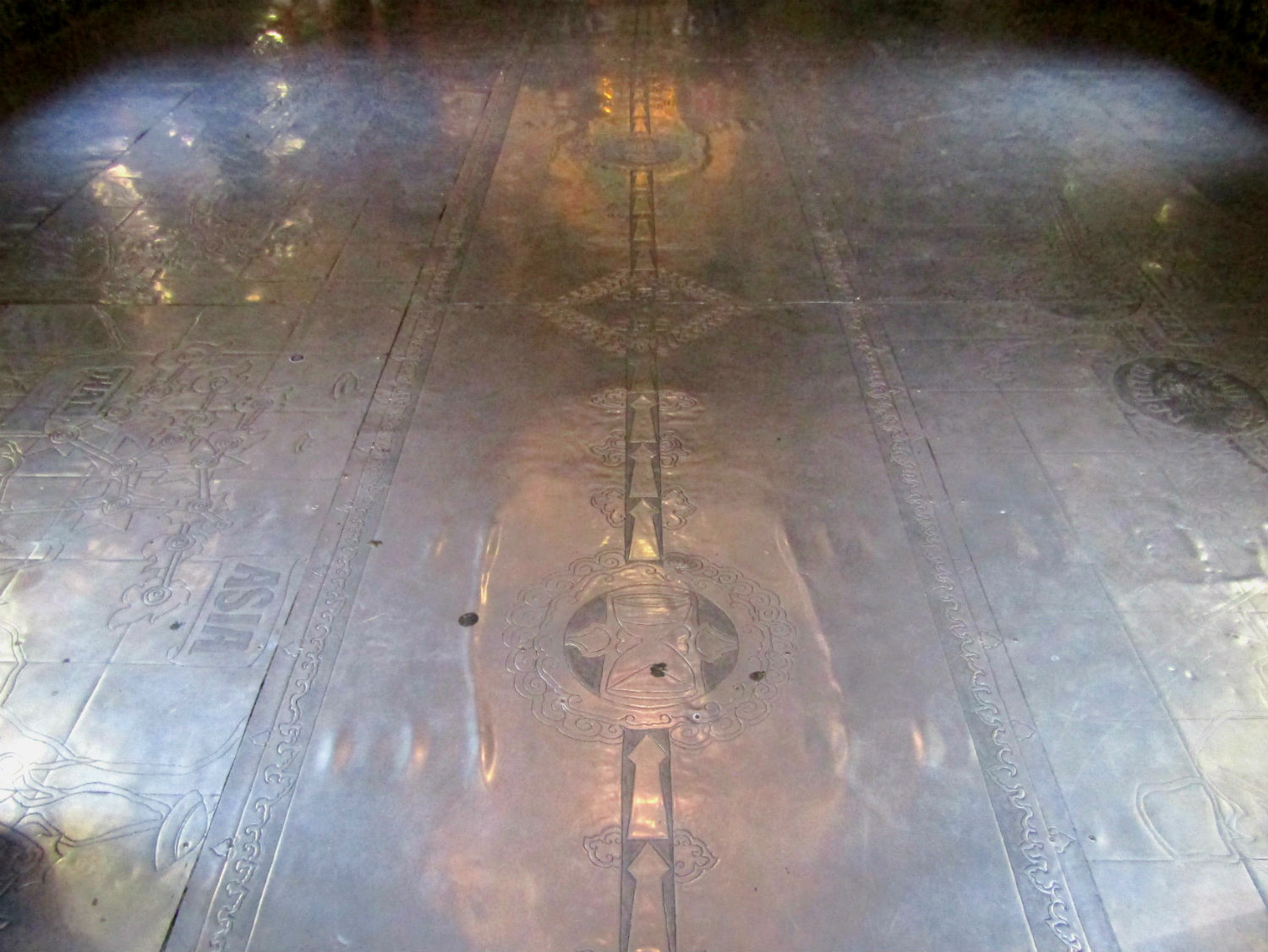
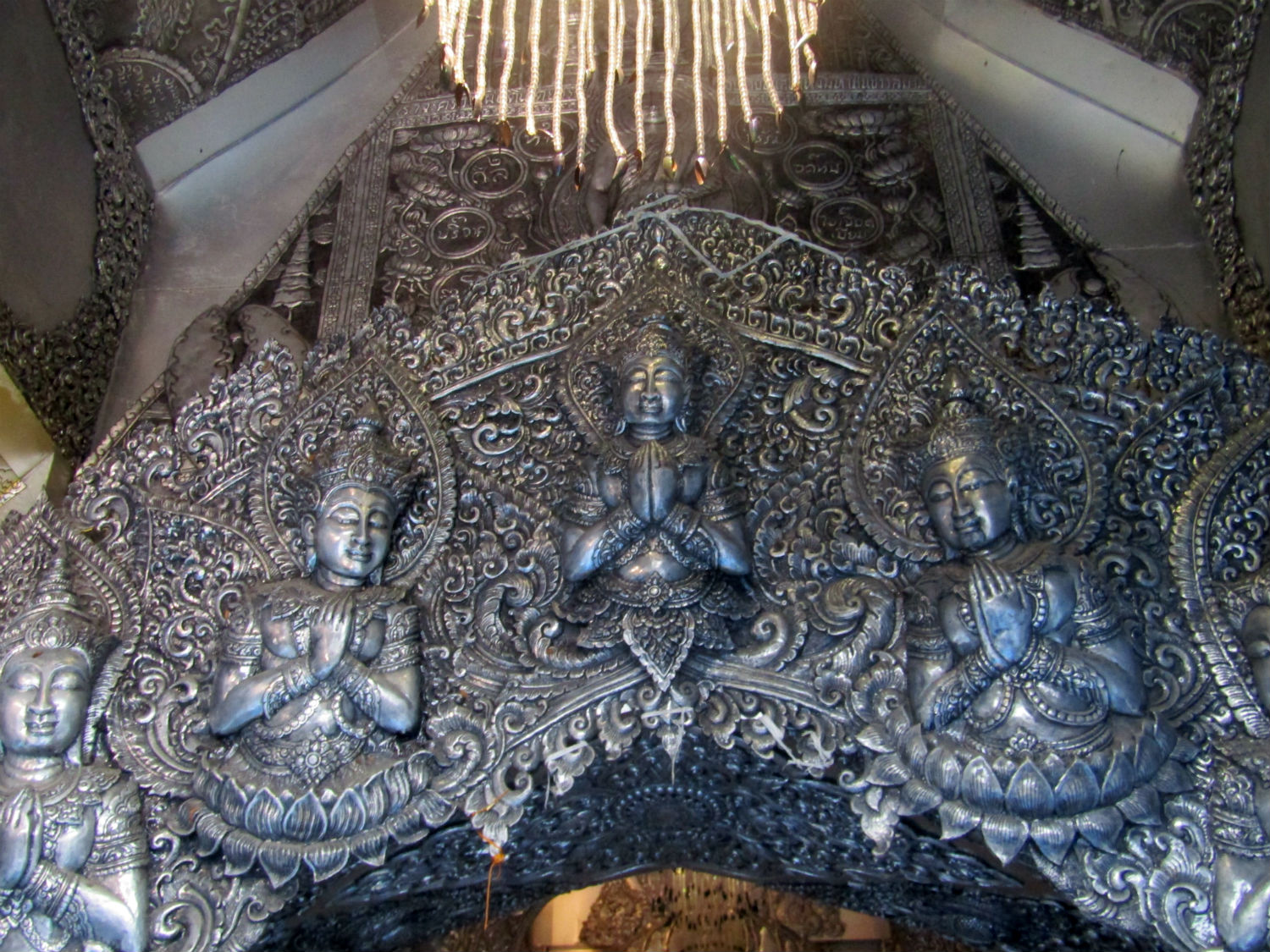
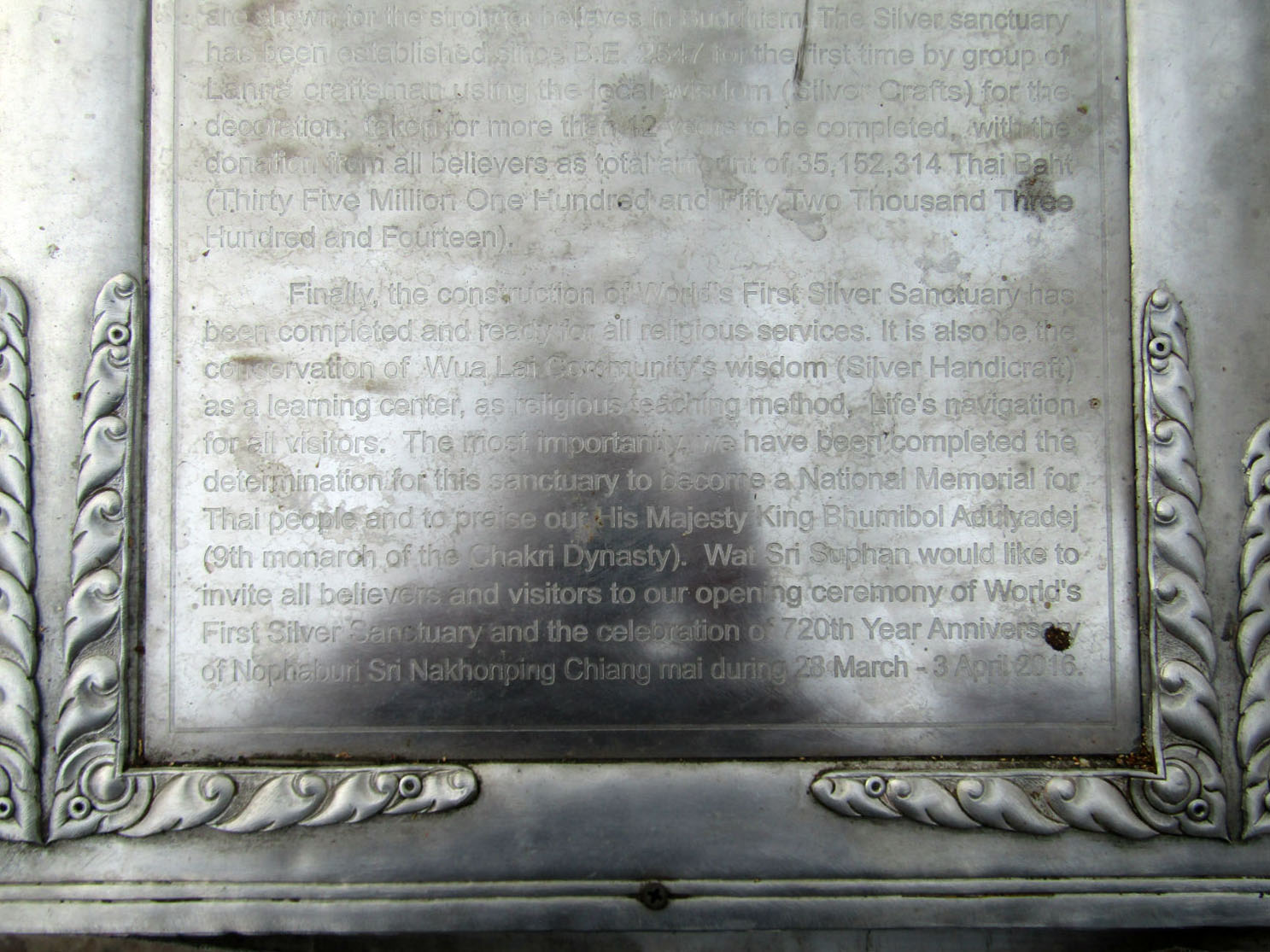
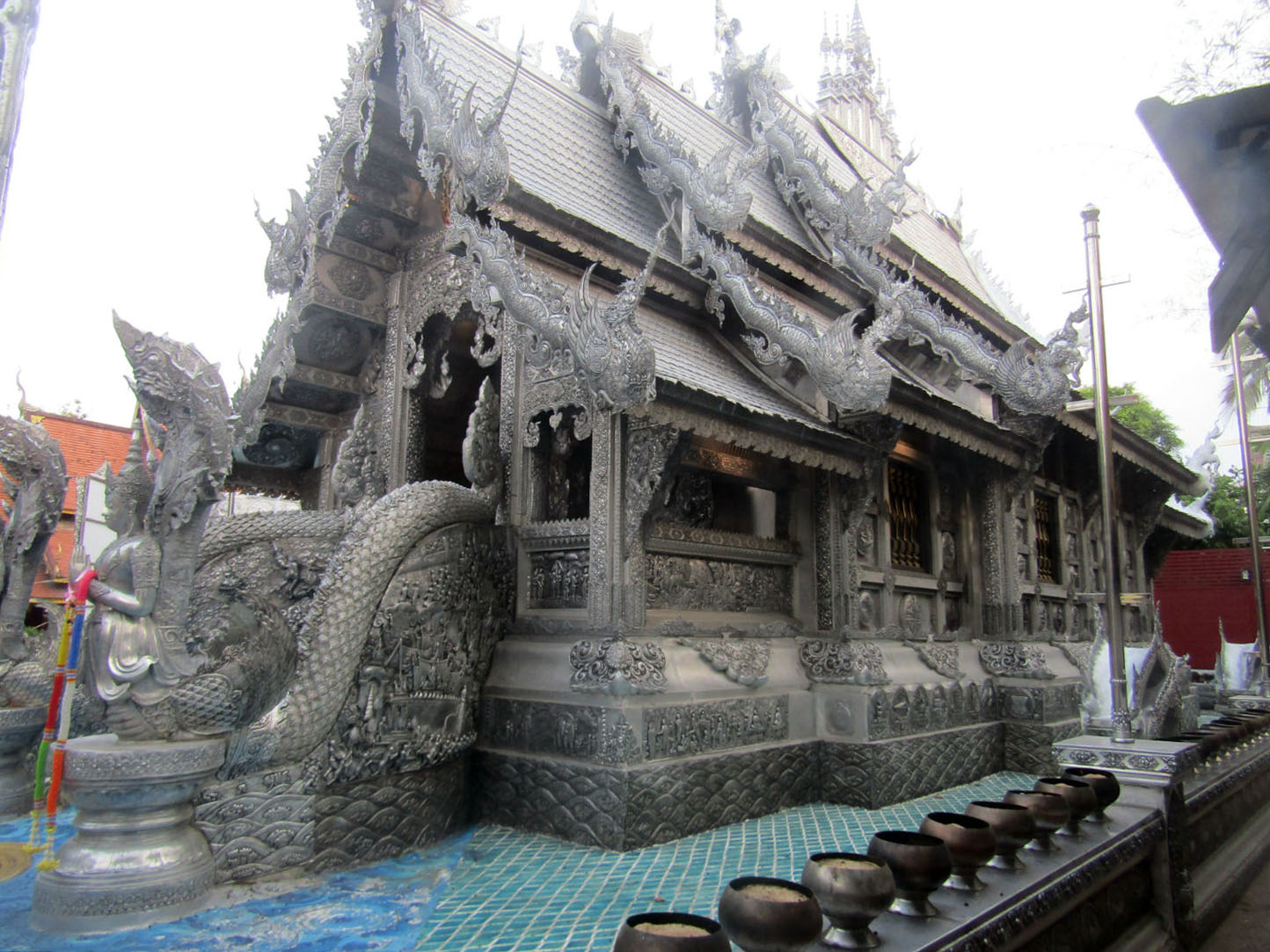
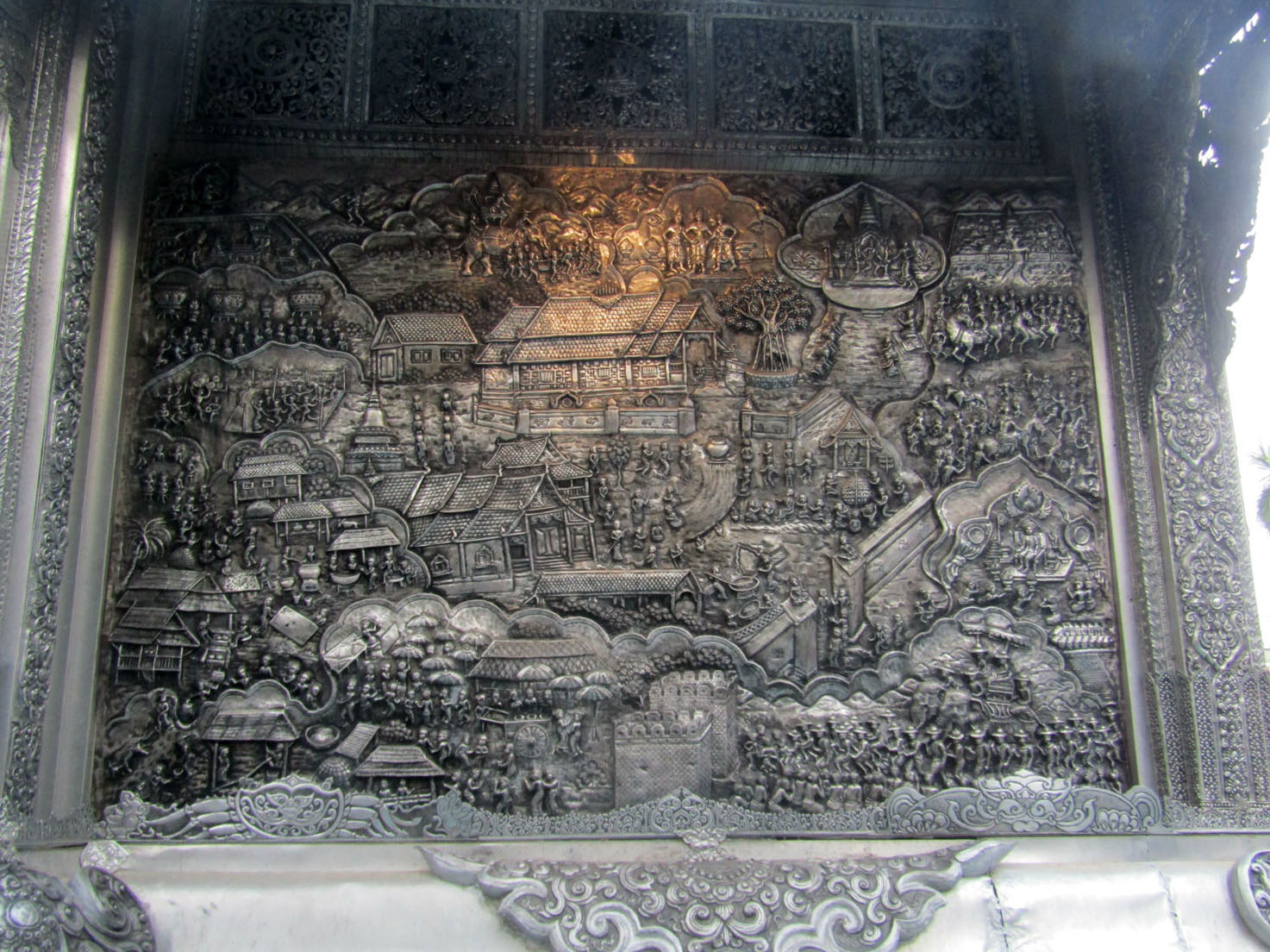
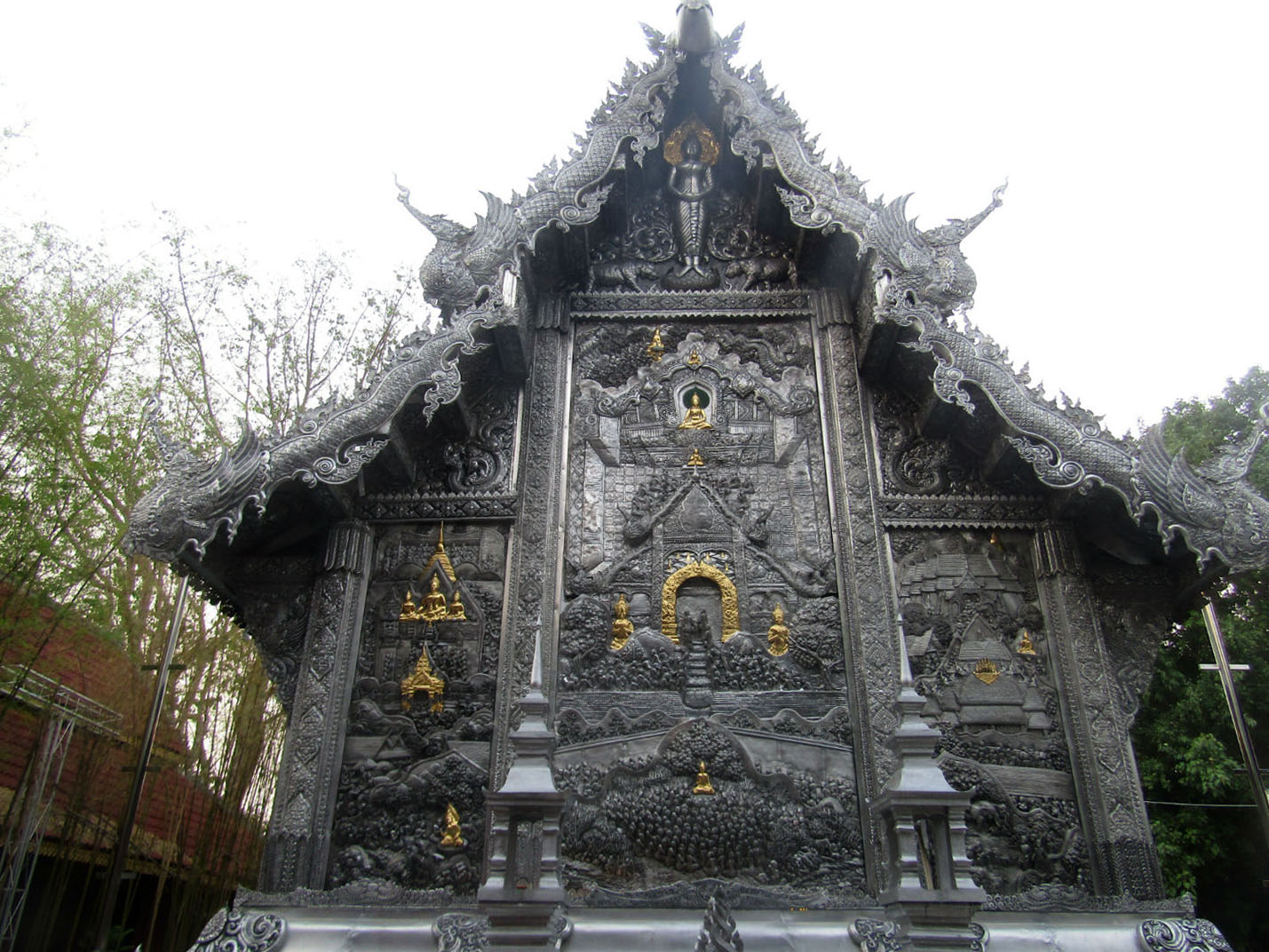
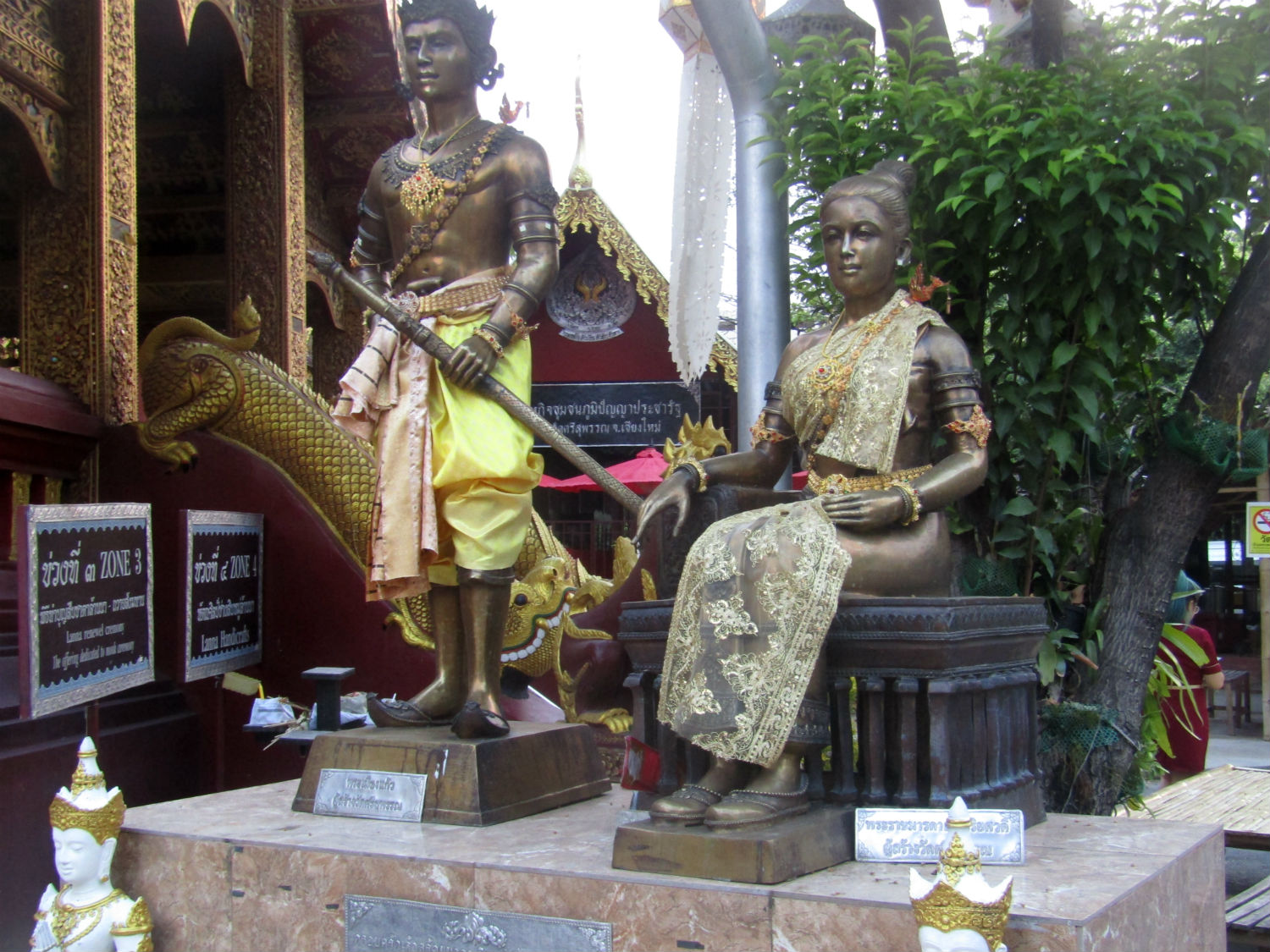
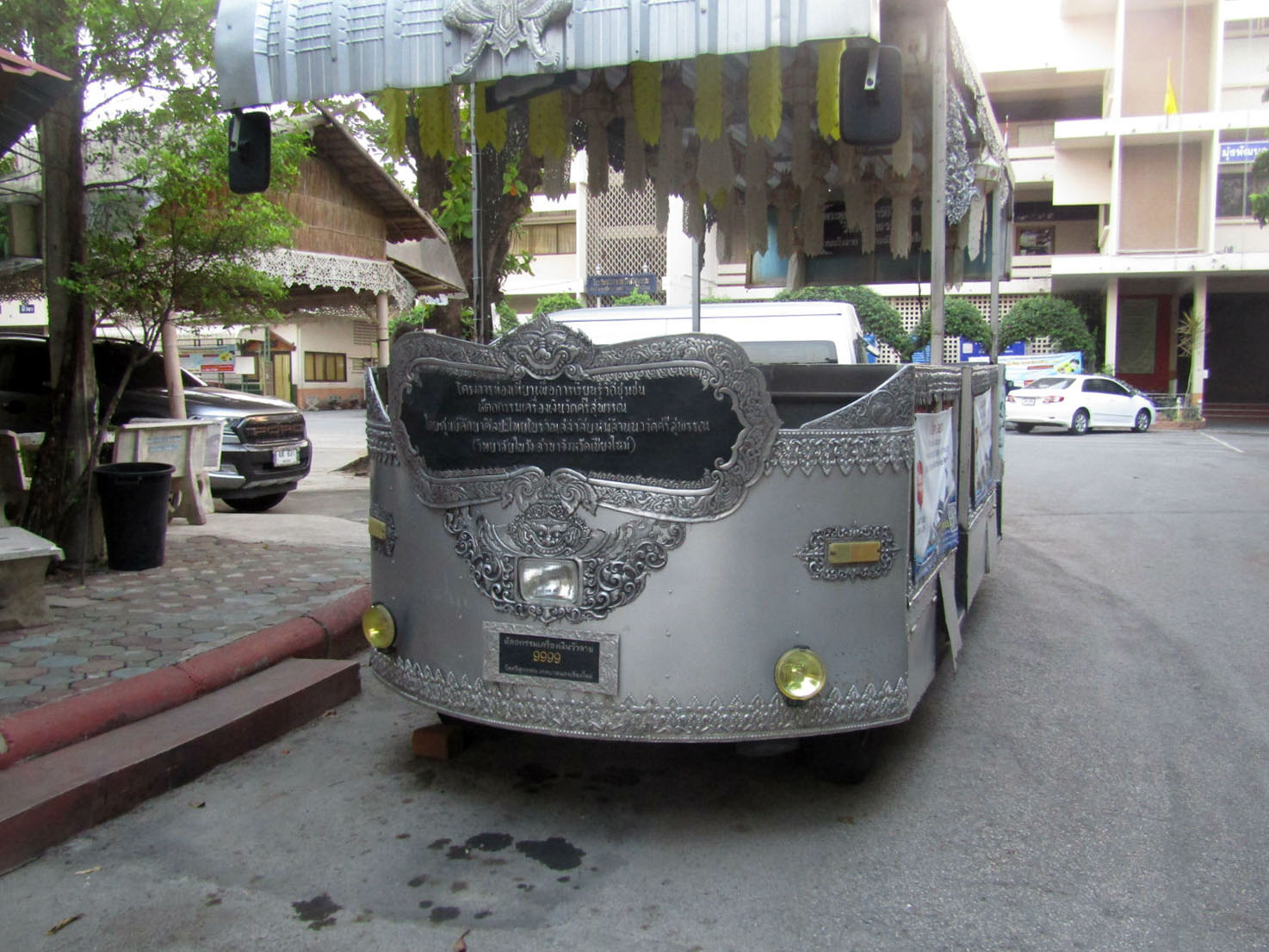
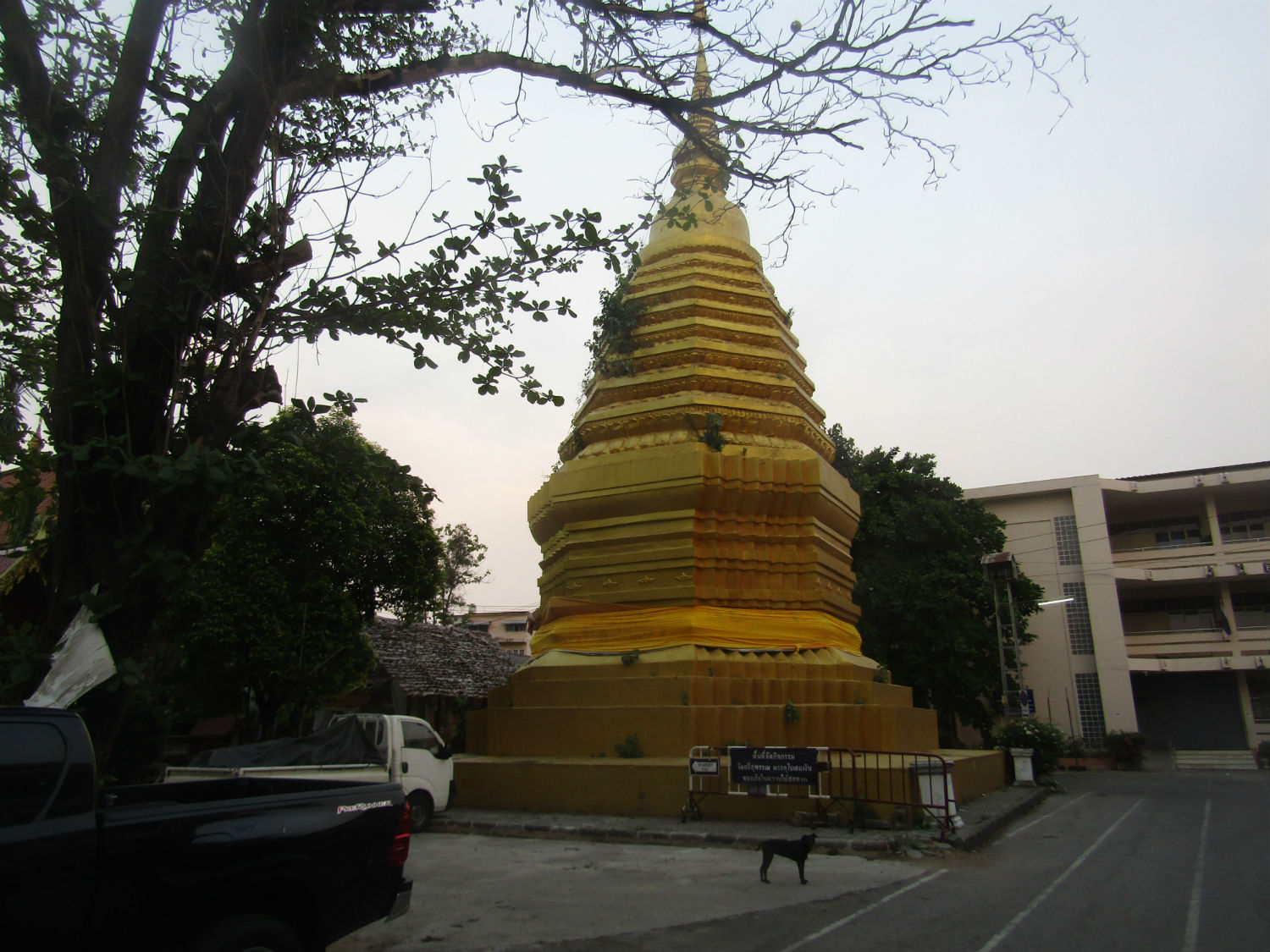 Wat Sri Suphan, Chiang Mai
Wat Sri Suphan, Chiang Mai
Closing time……..
This visit on a day dominated by the religious history of the Chiang Mai is the last of the day. As we head back towards B2 we look for something different and end up at Noi’s Cafe in a food court just off the Lampang Road. The air conditioning is most welcome giving me the reprieve to go on and get most of my blog written up. I don’t want to leave to much till tomorrow which looks like a full day hunting down more remote attractions. Next Page.